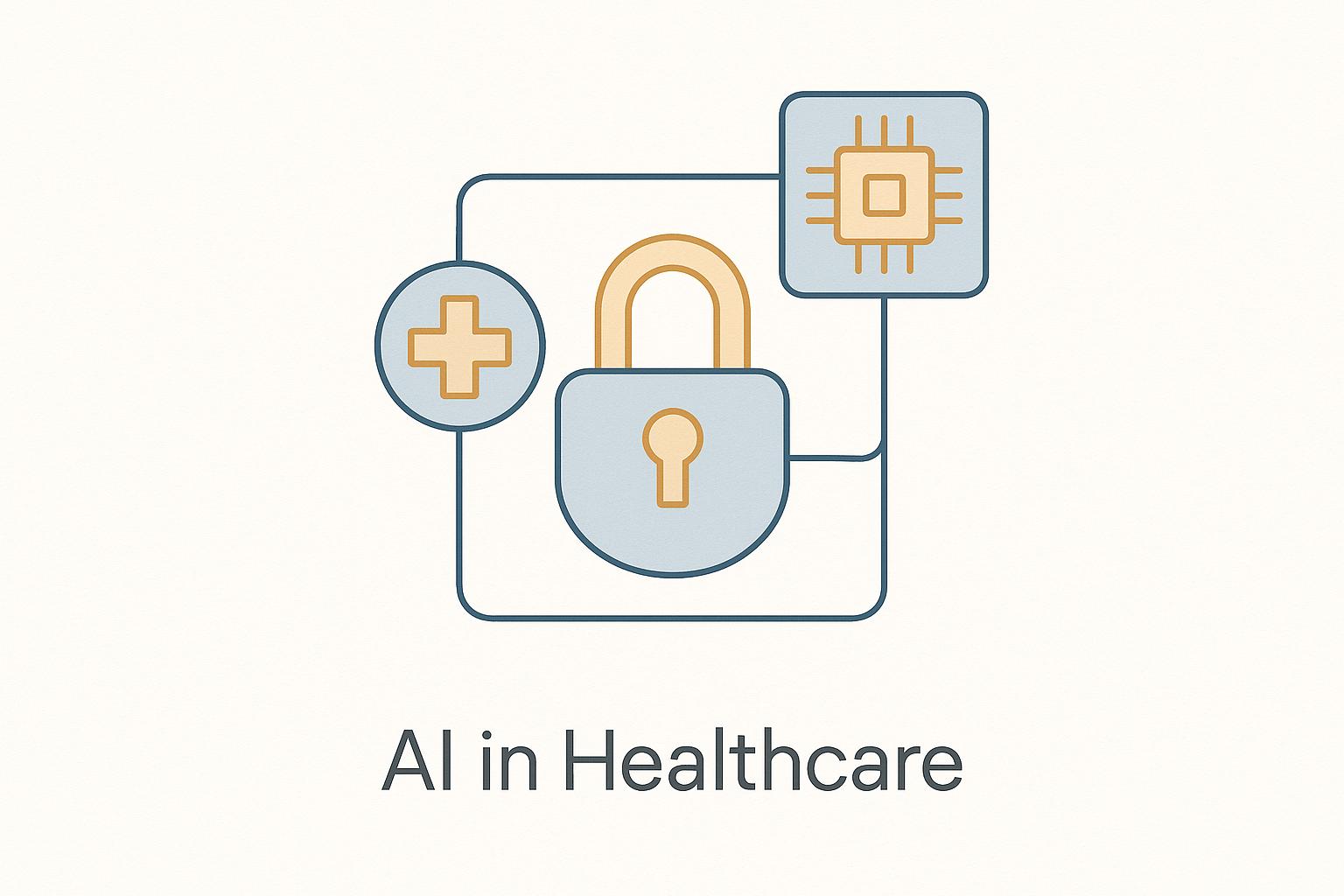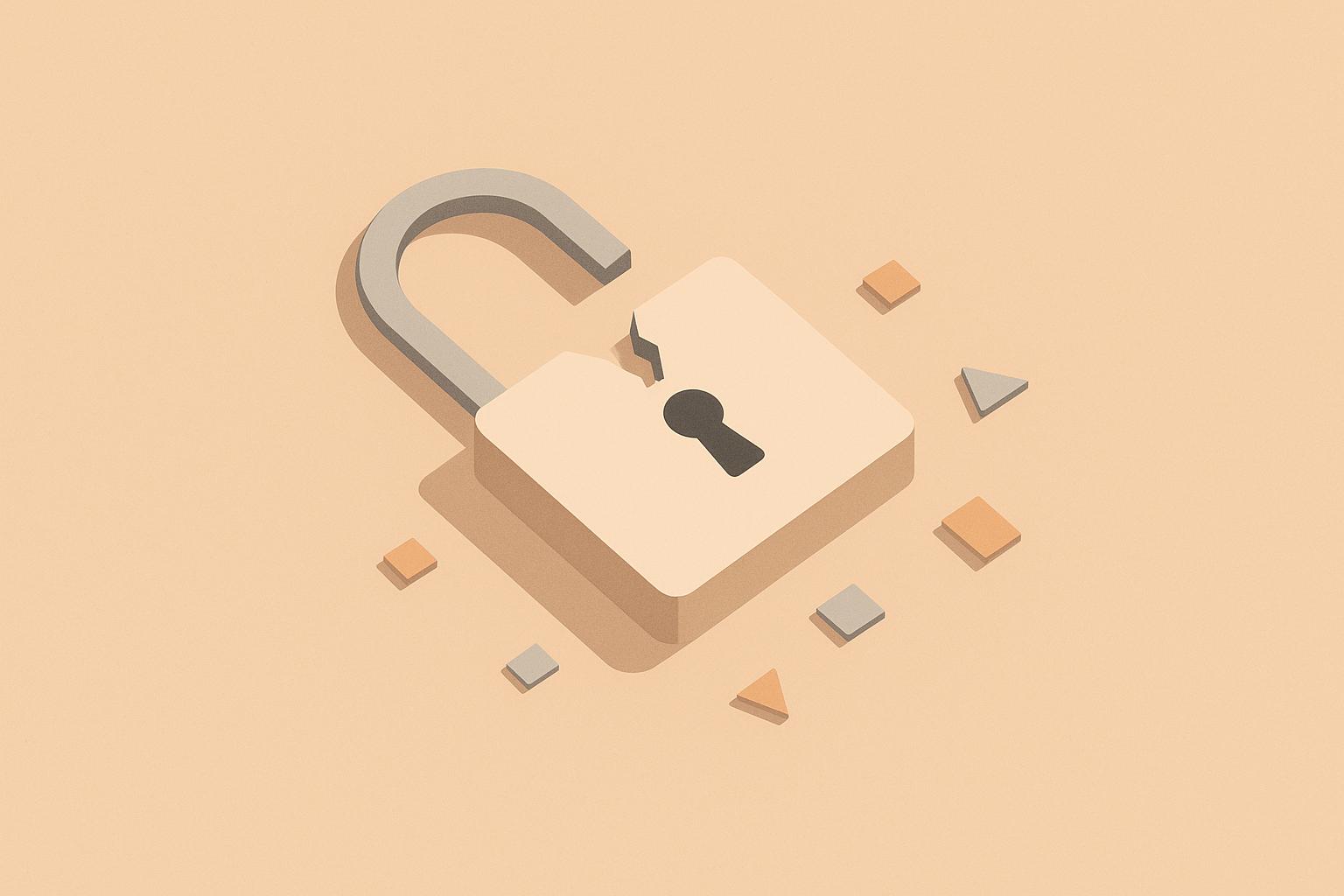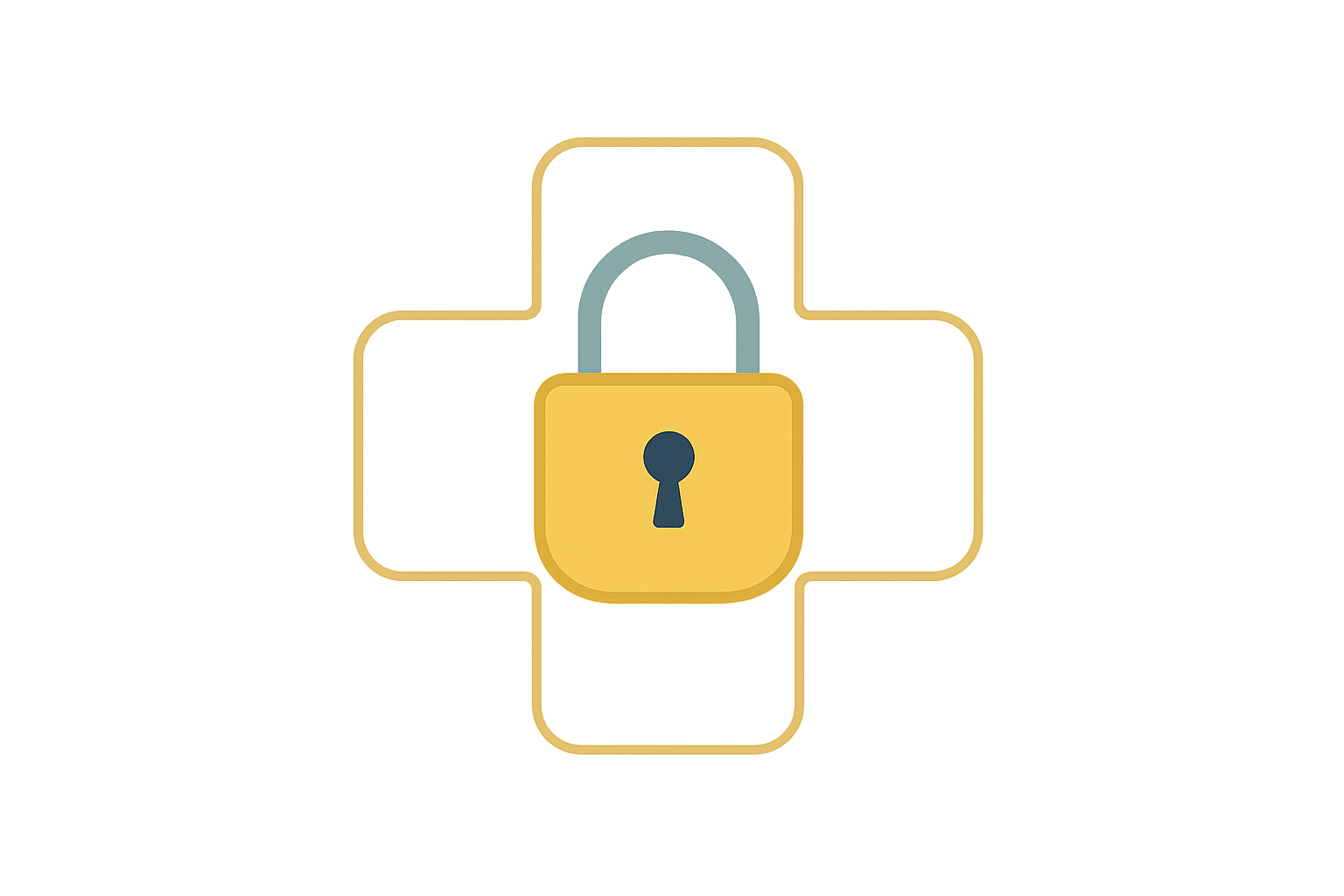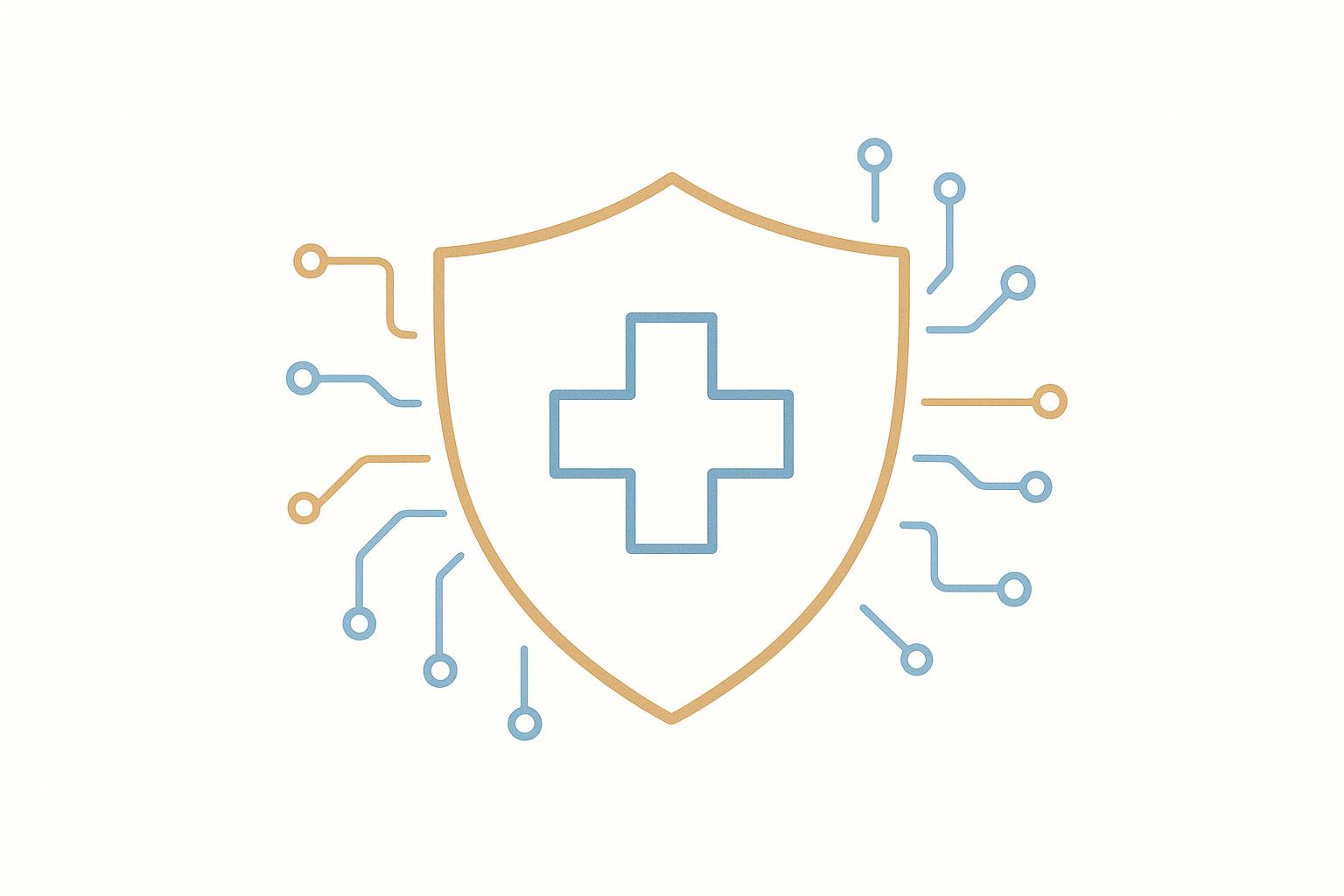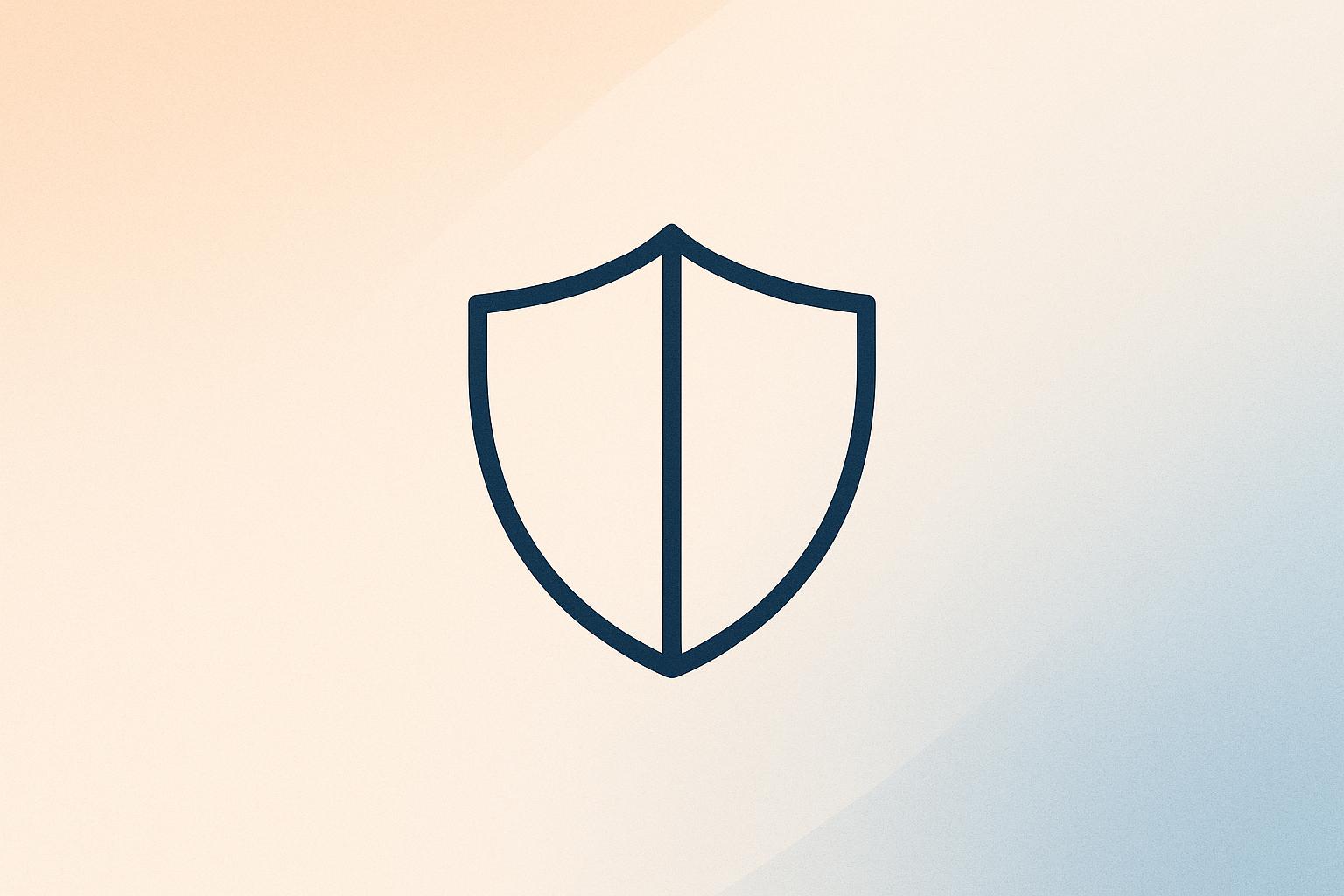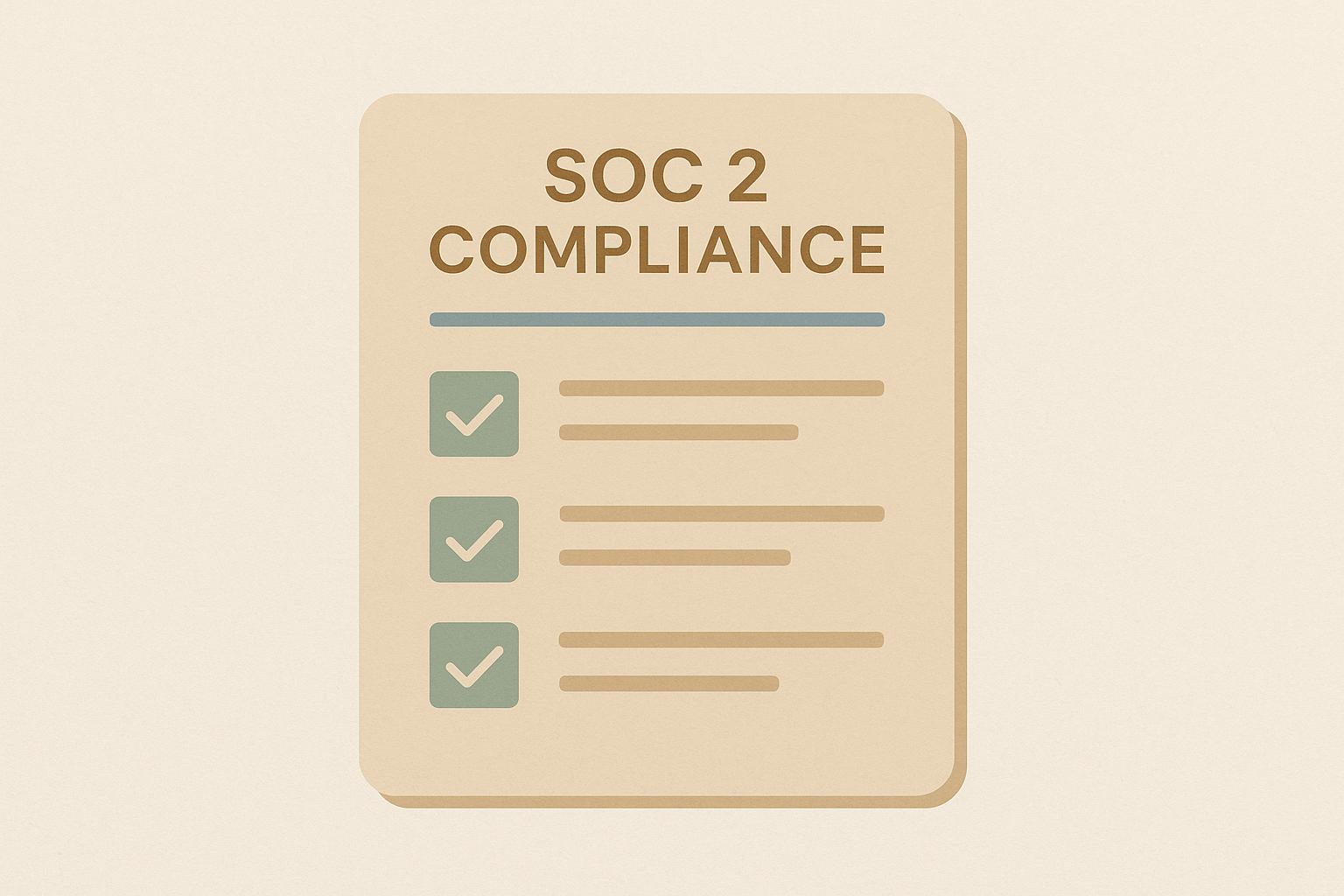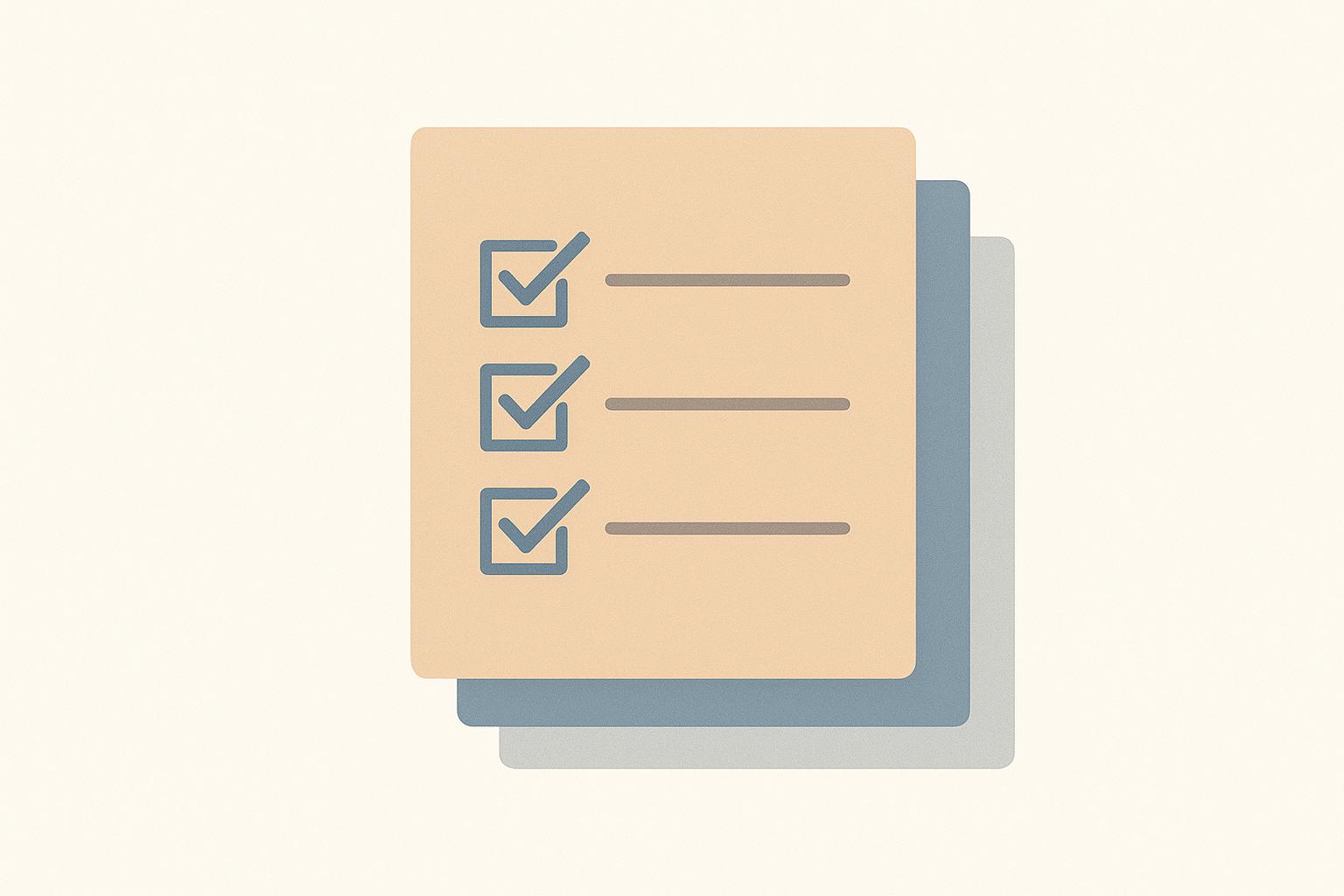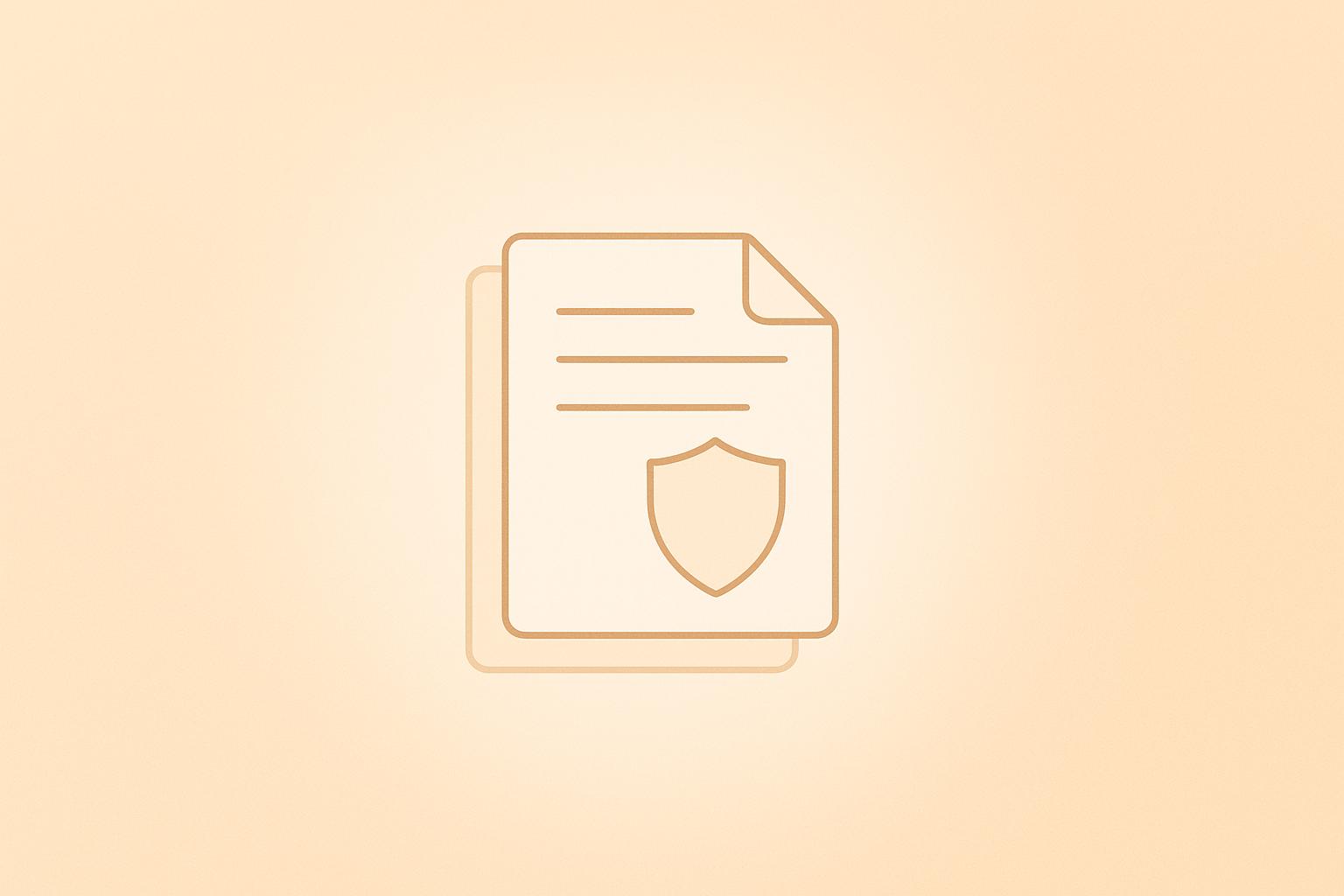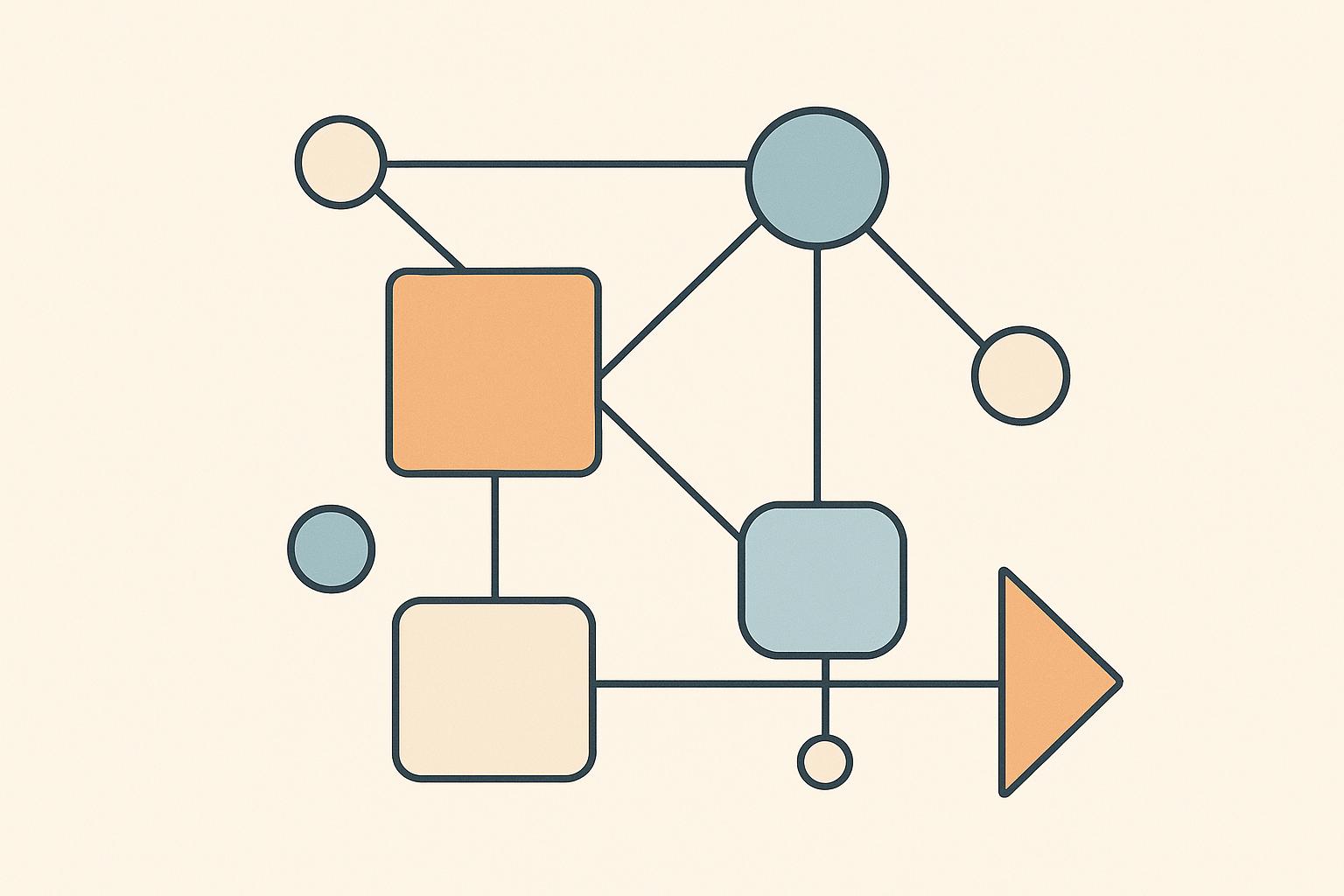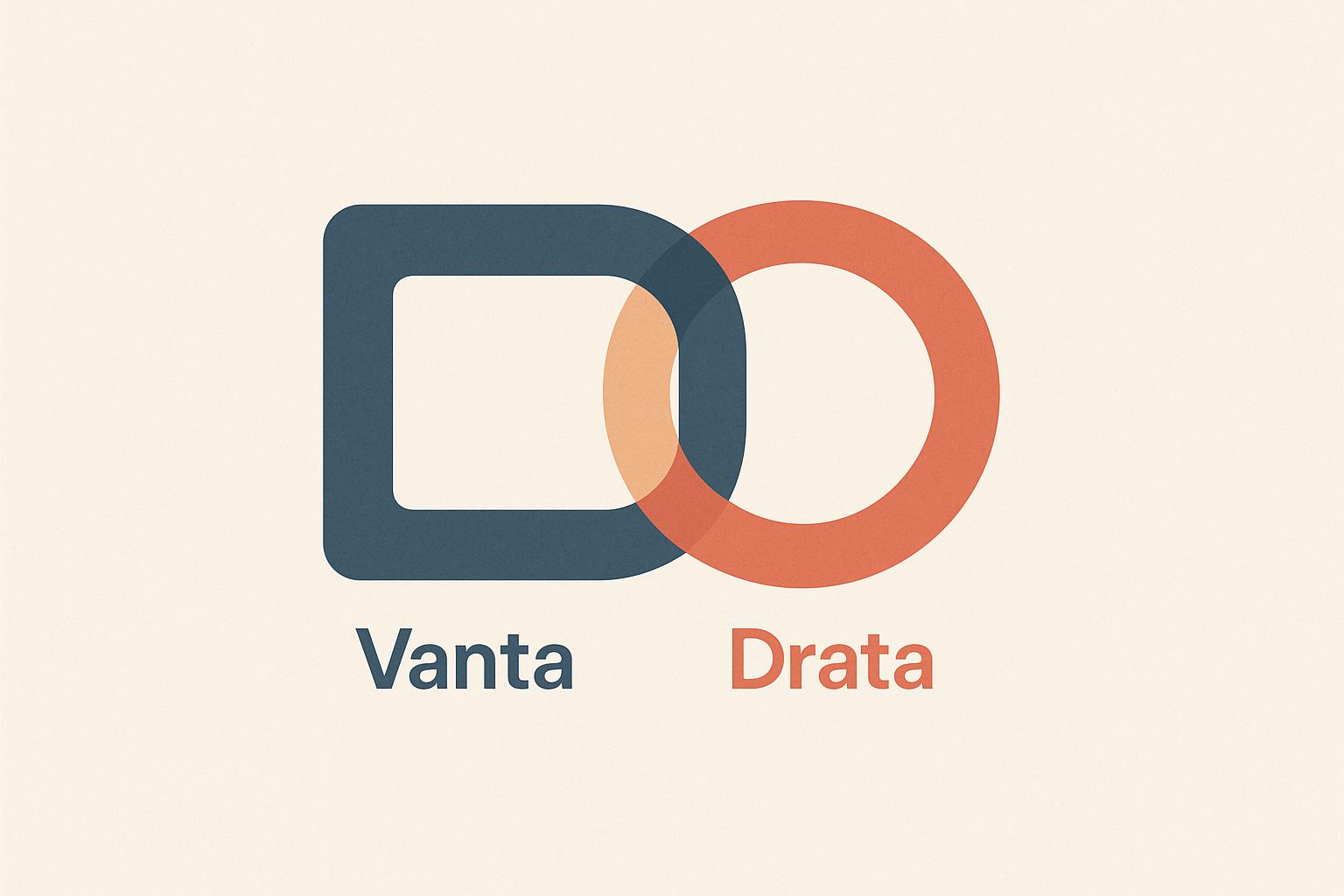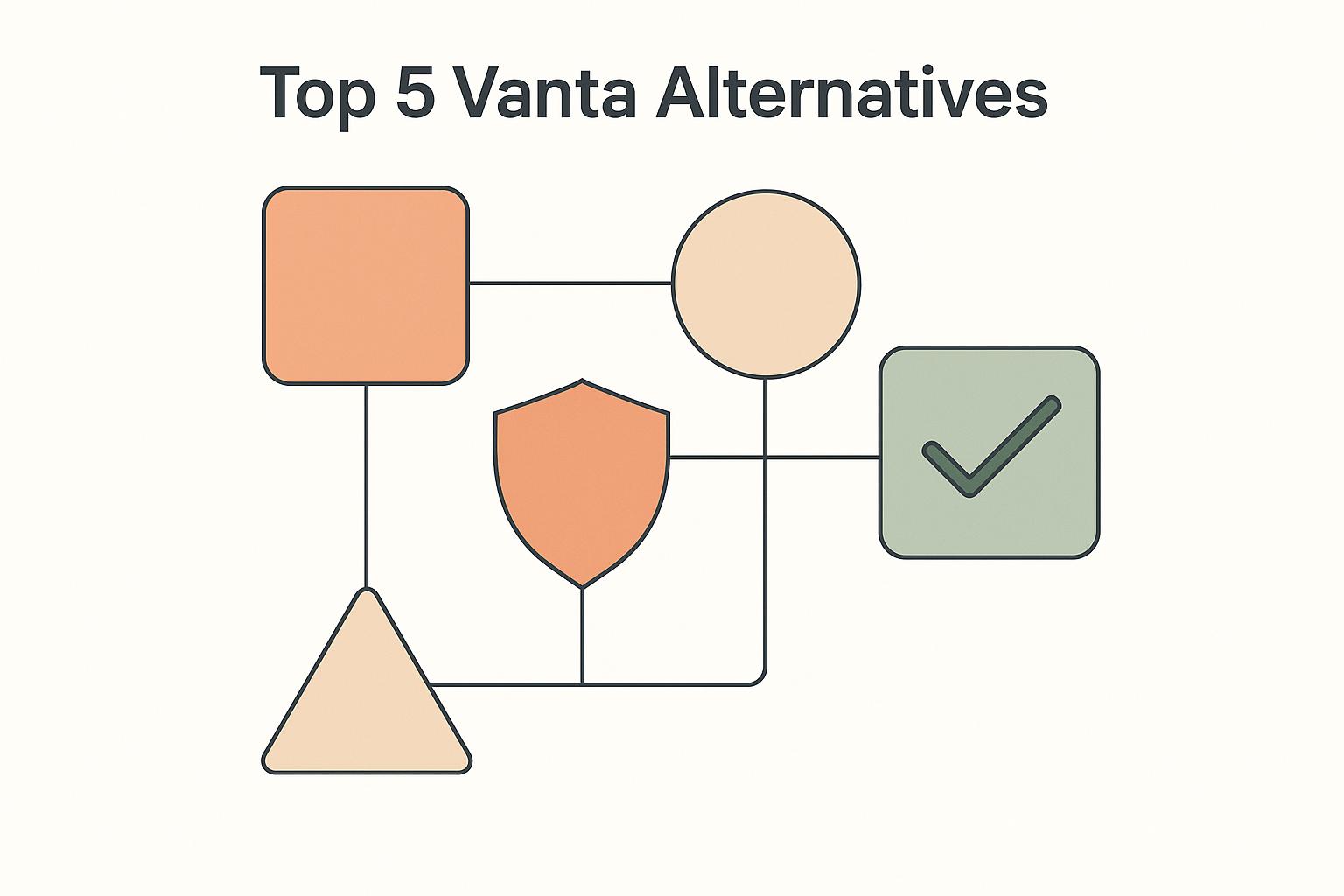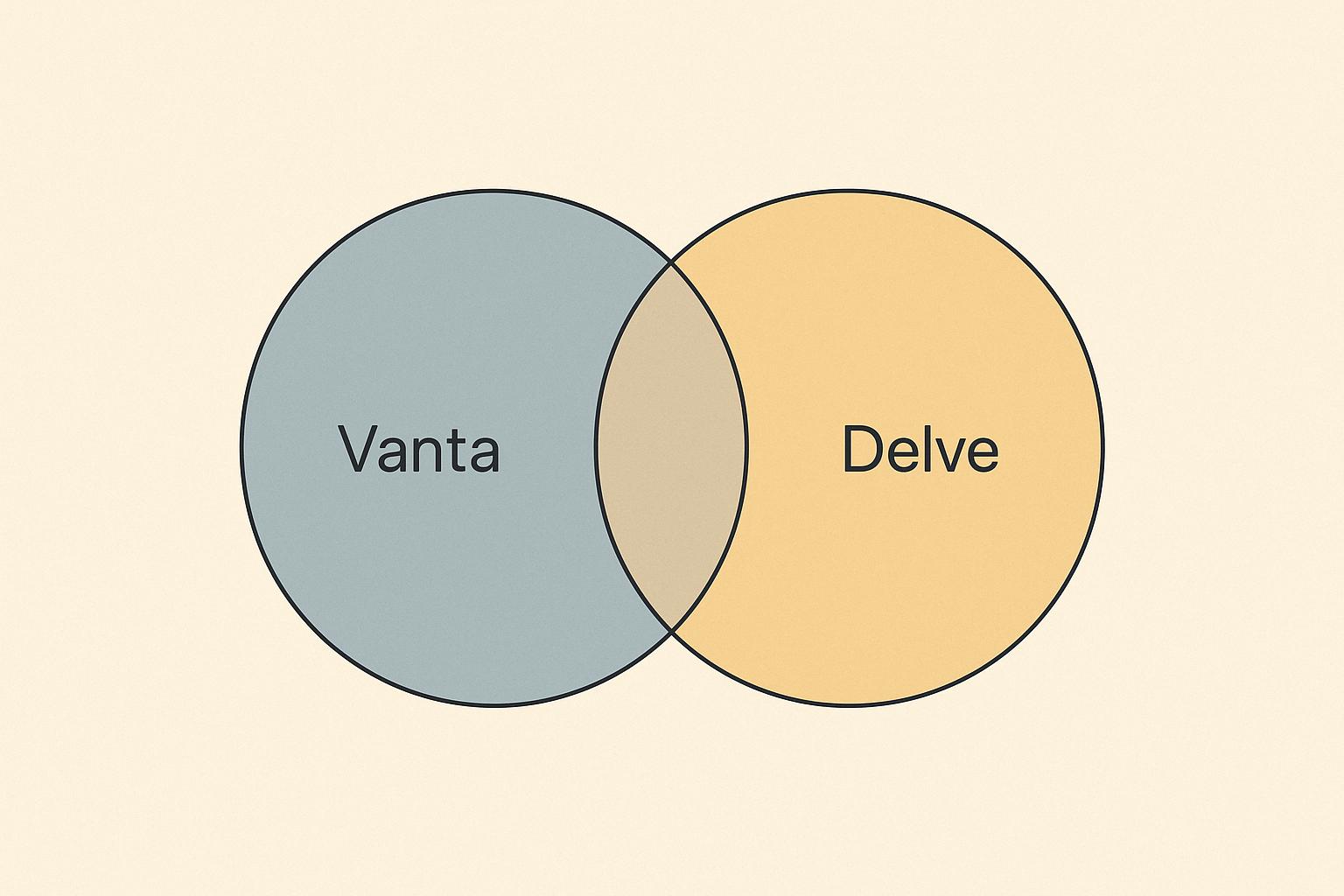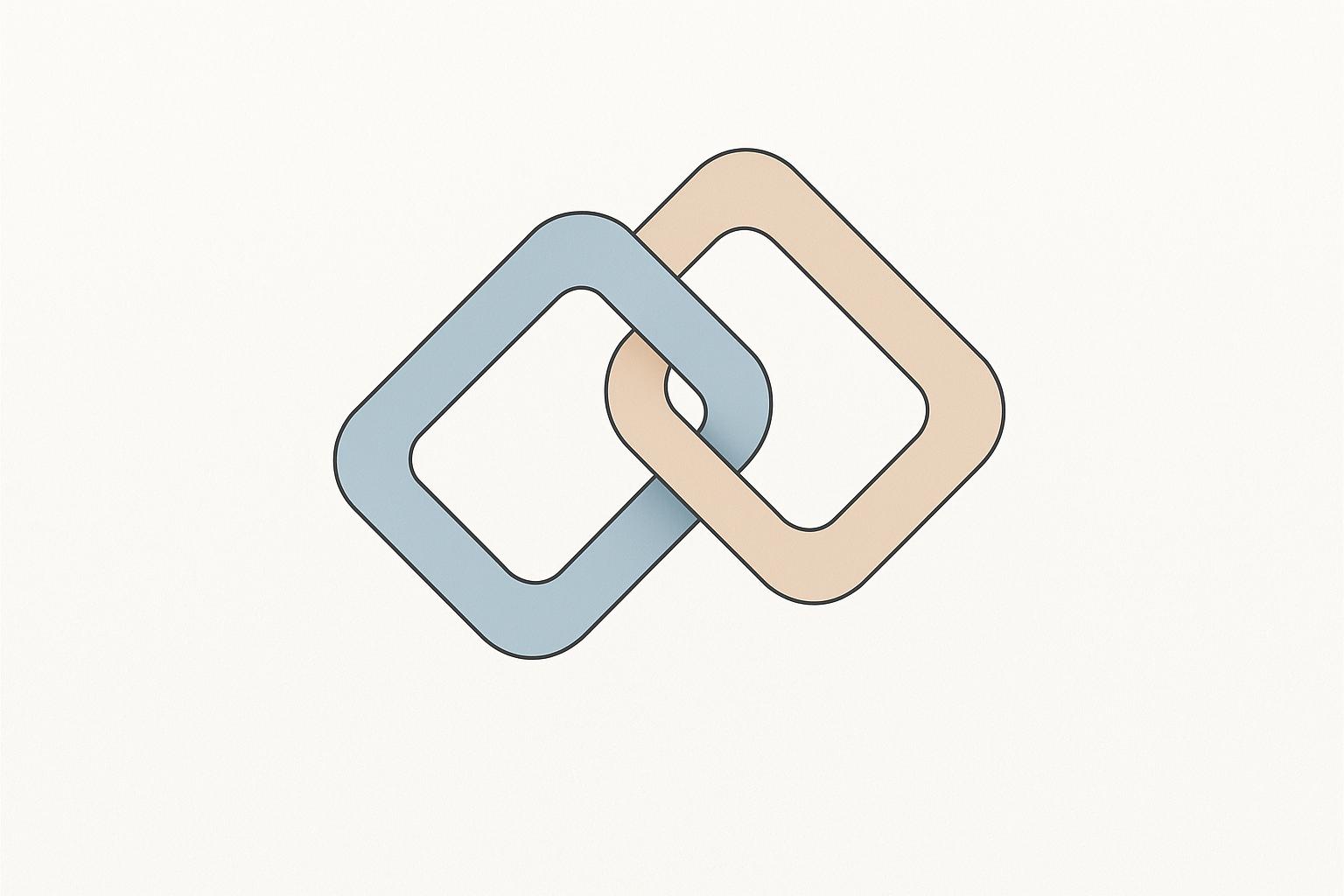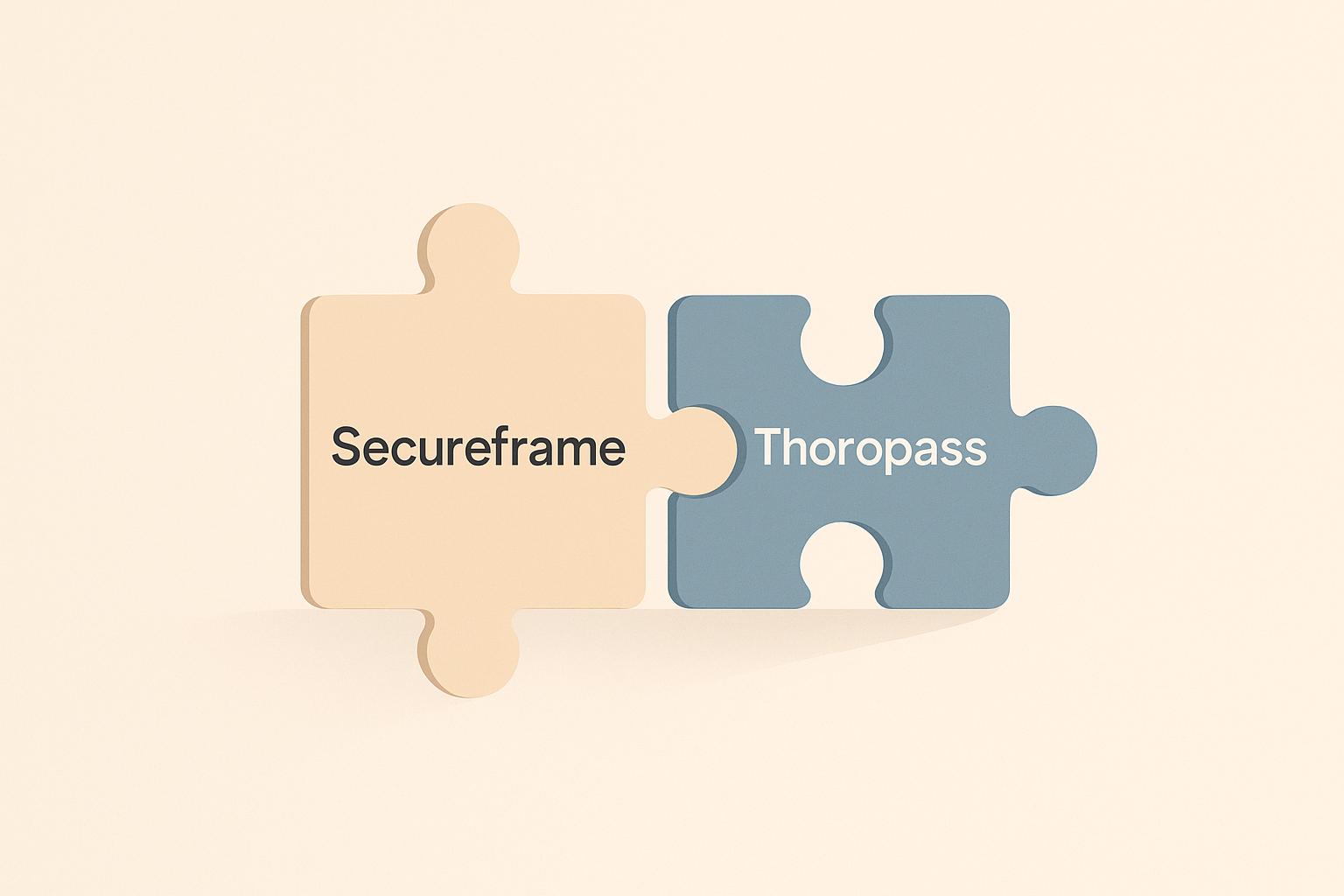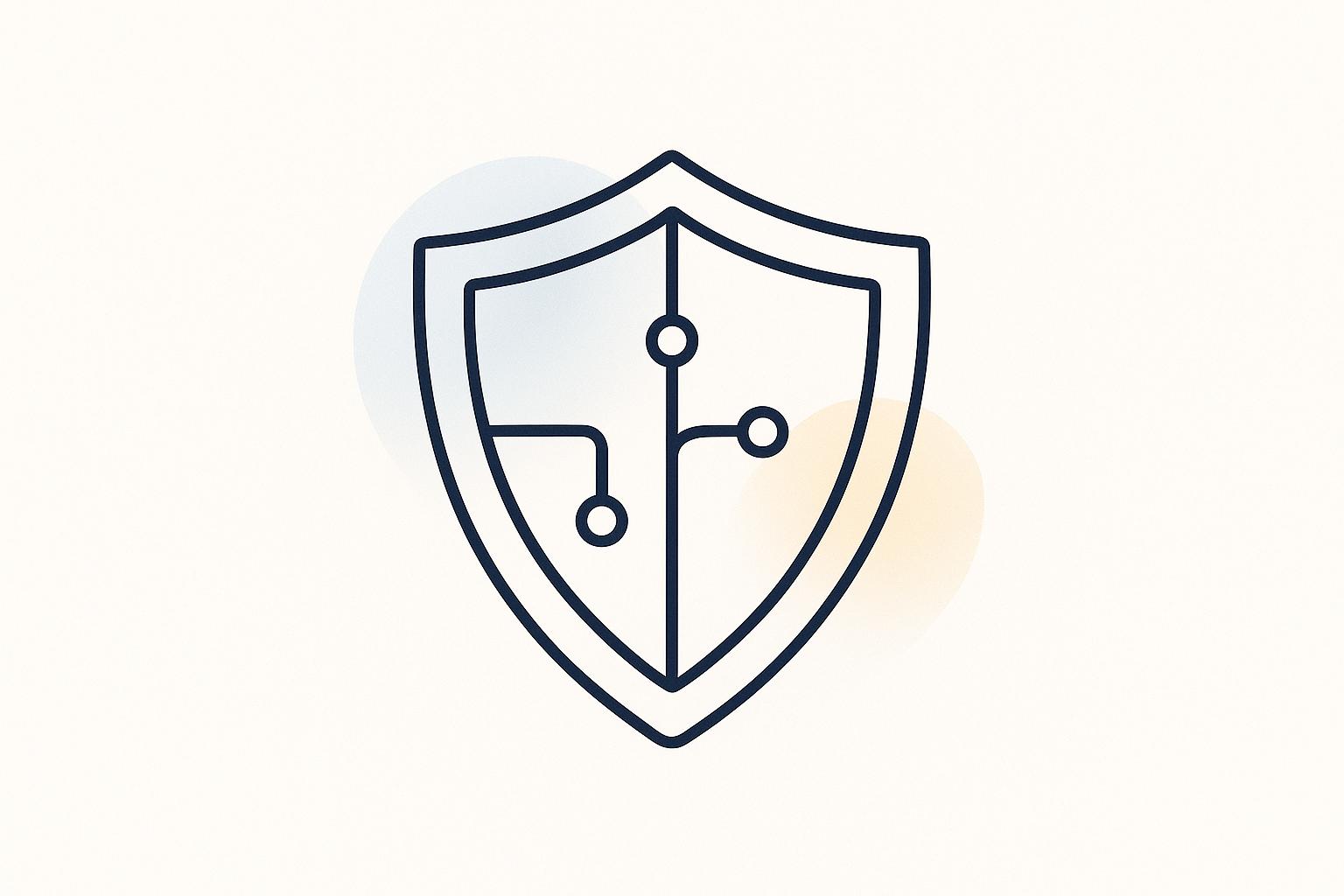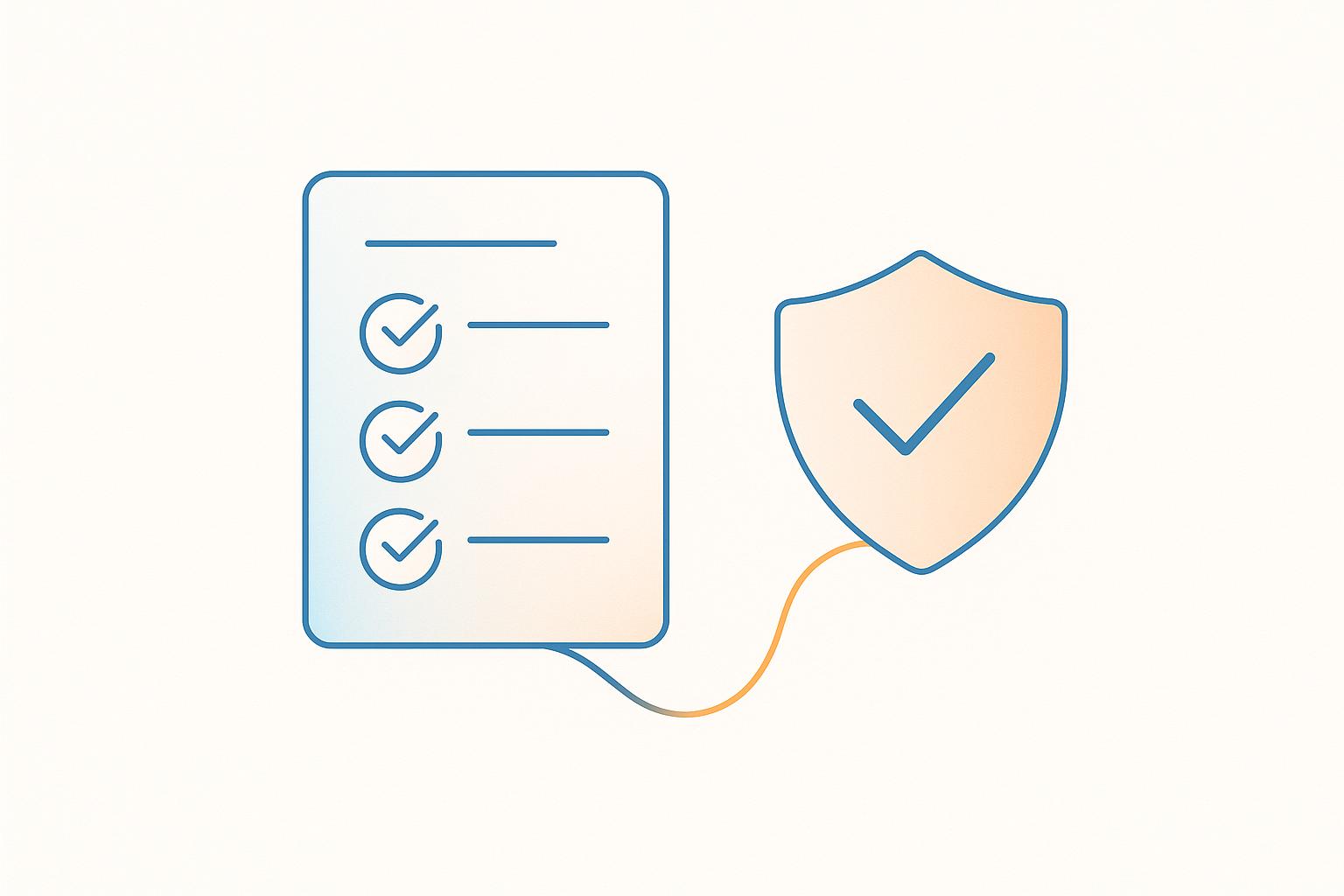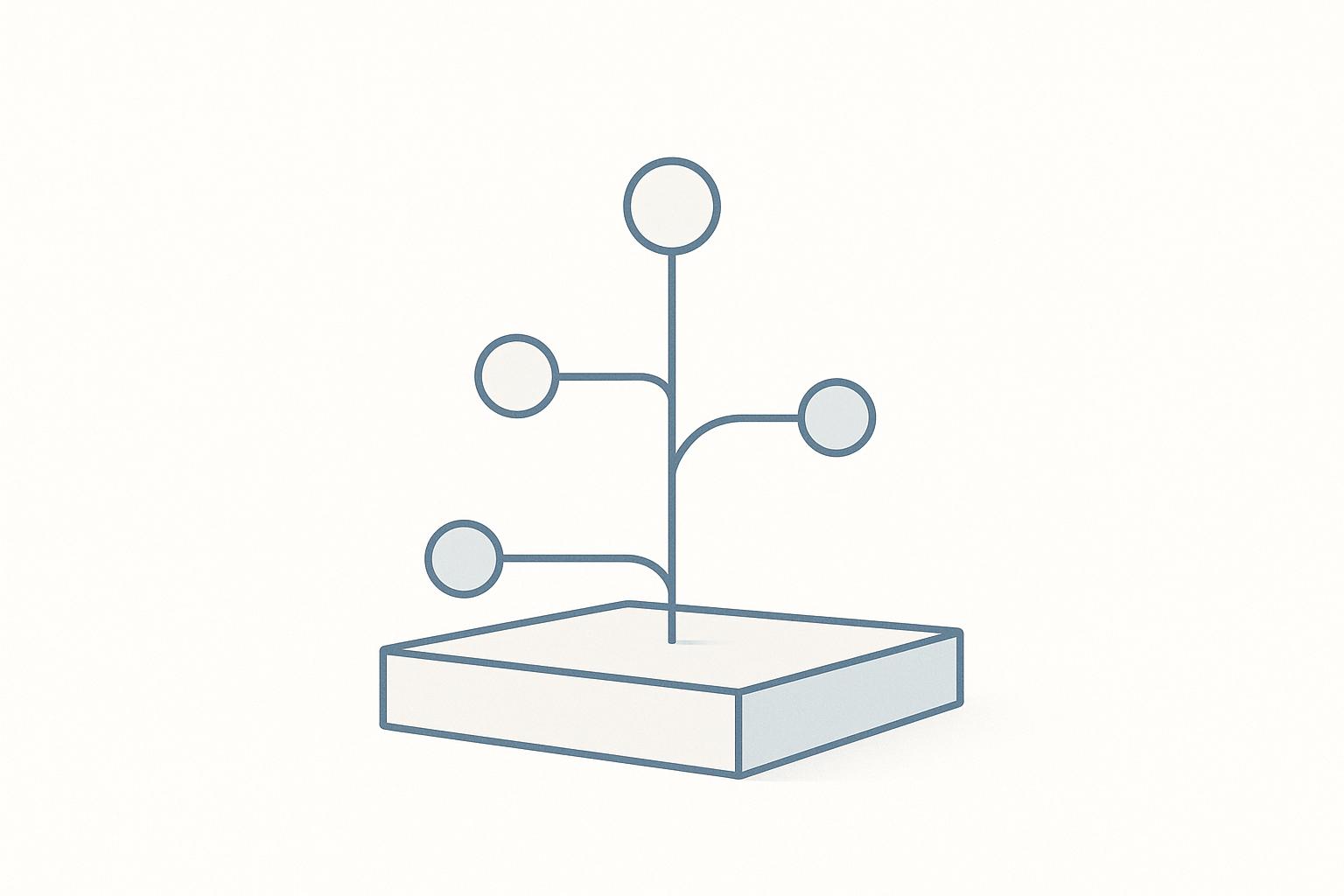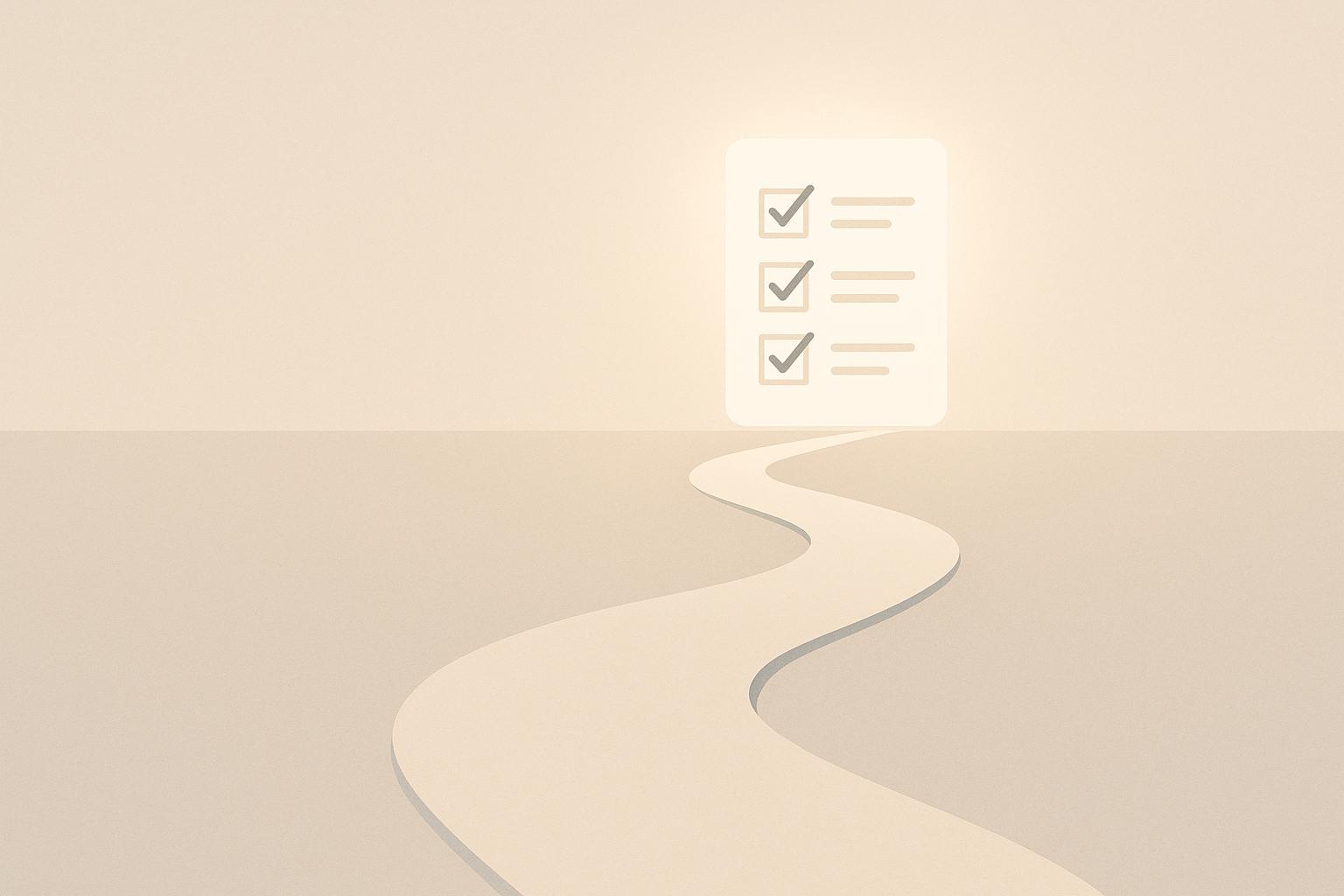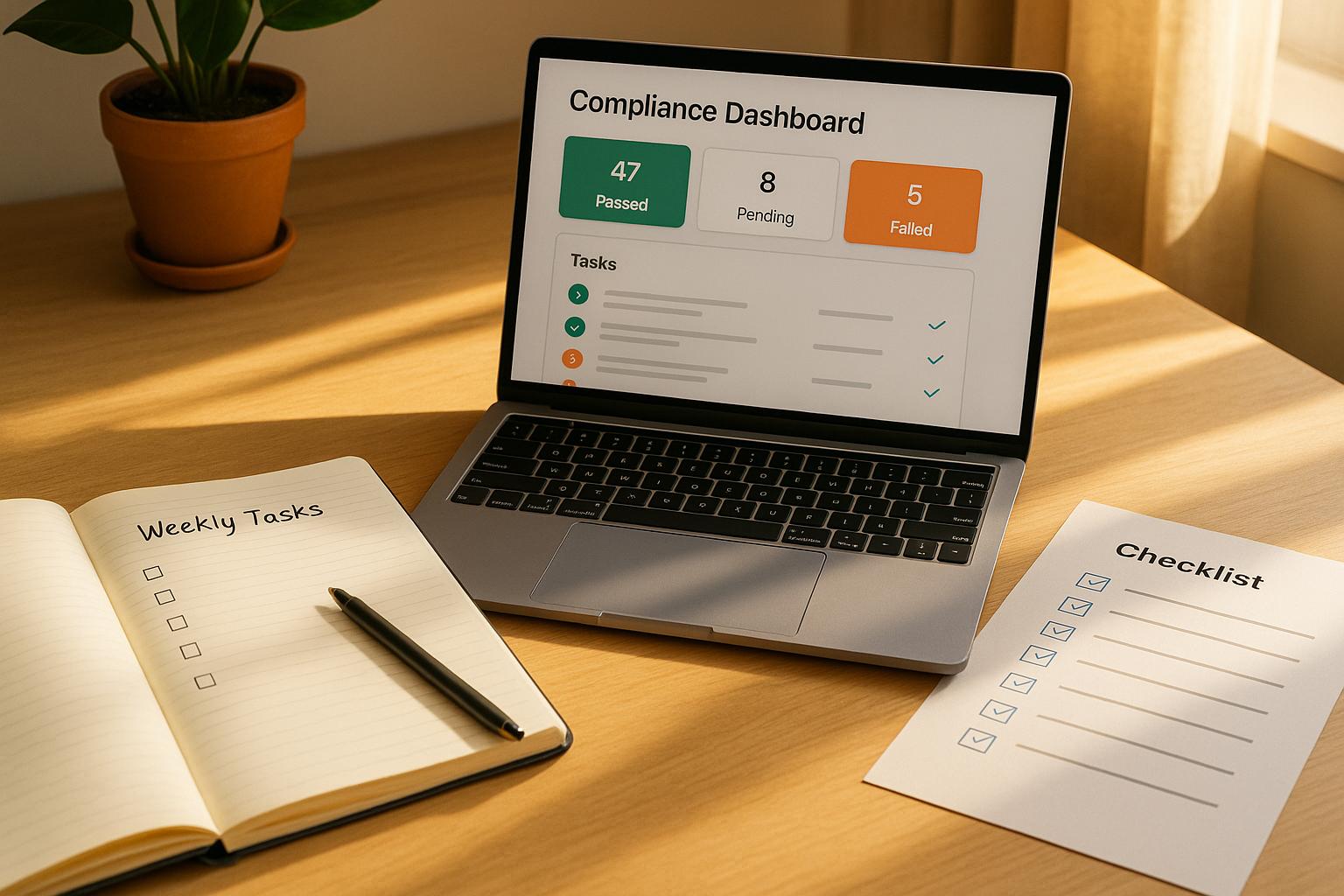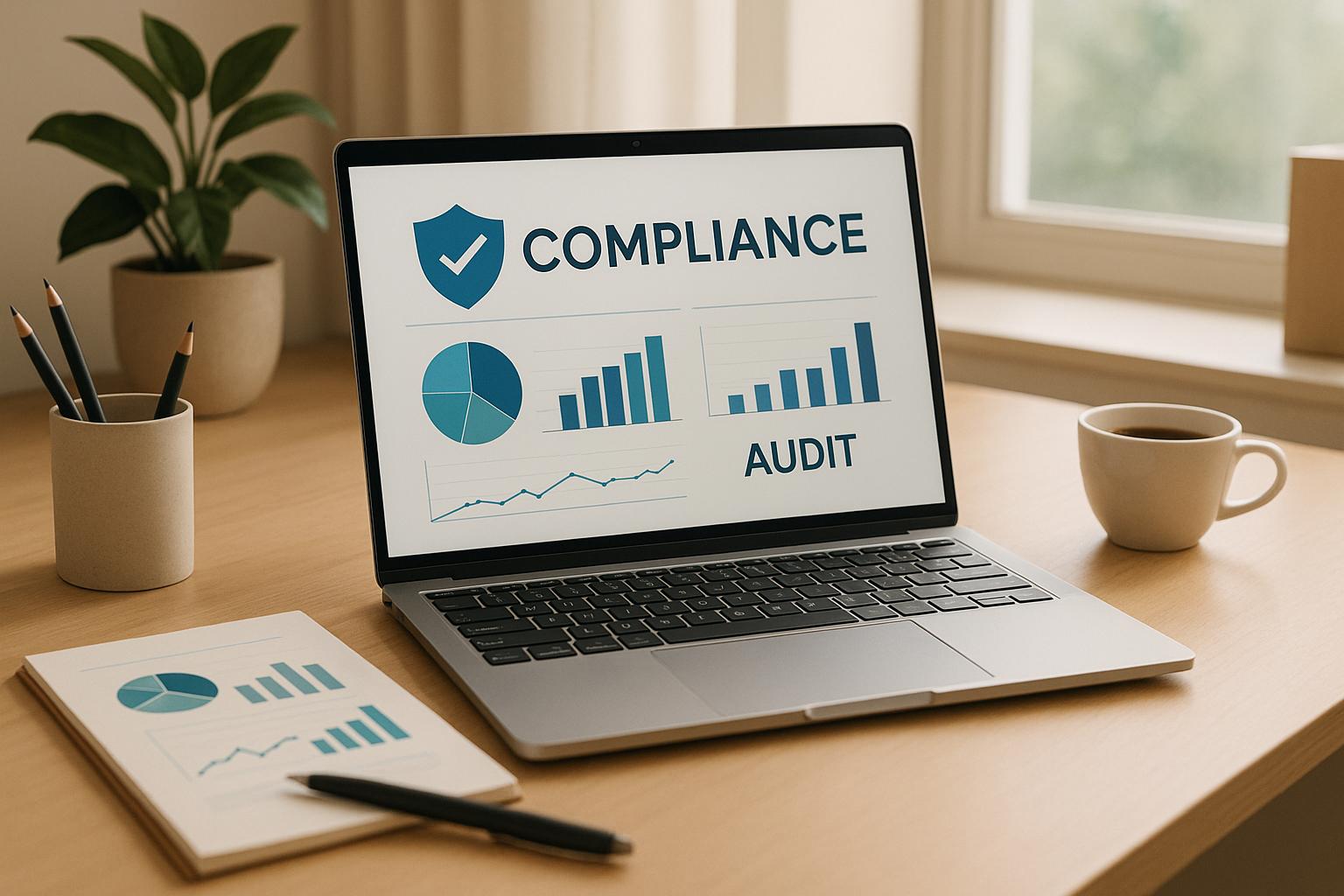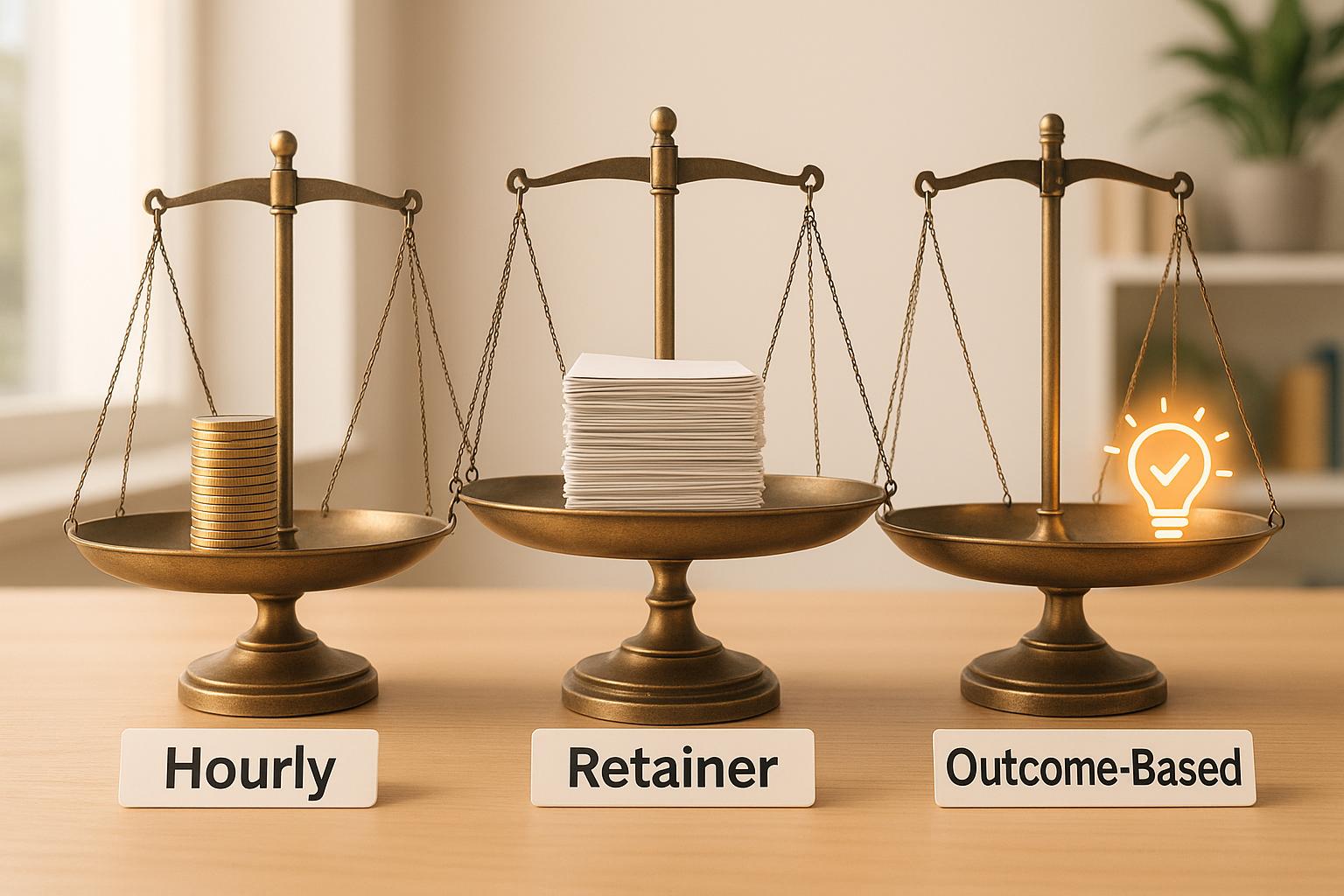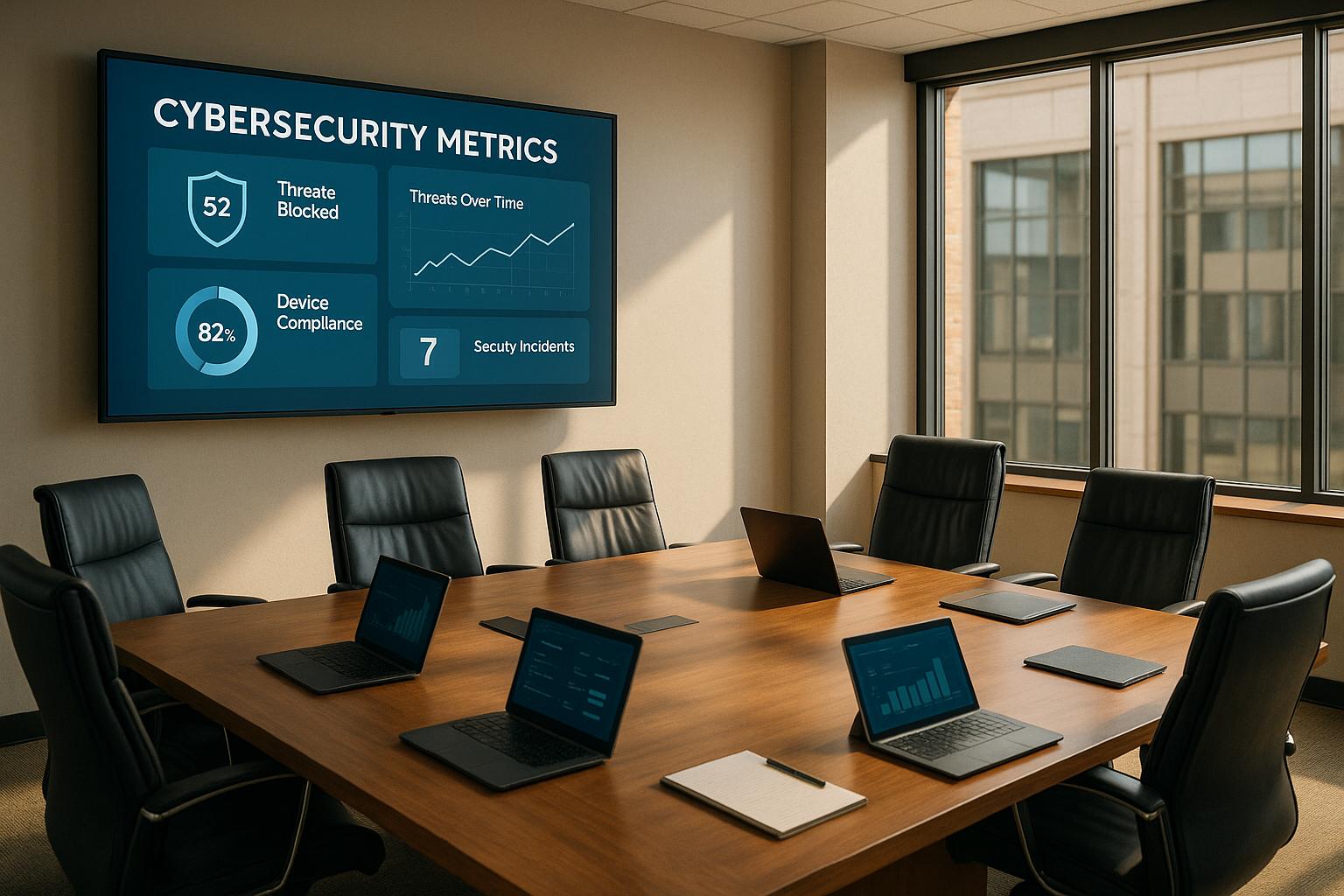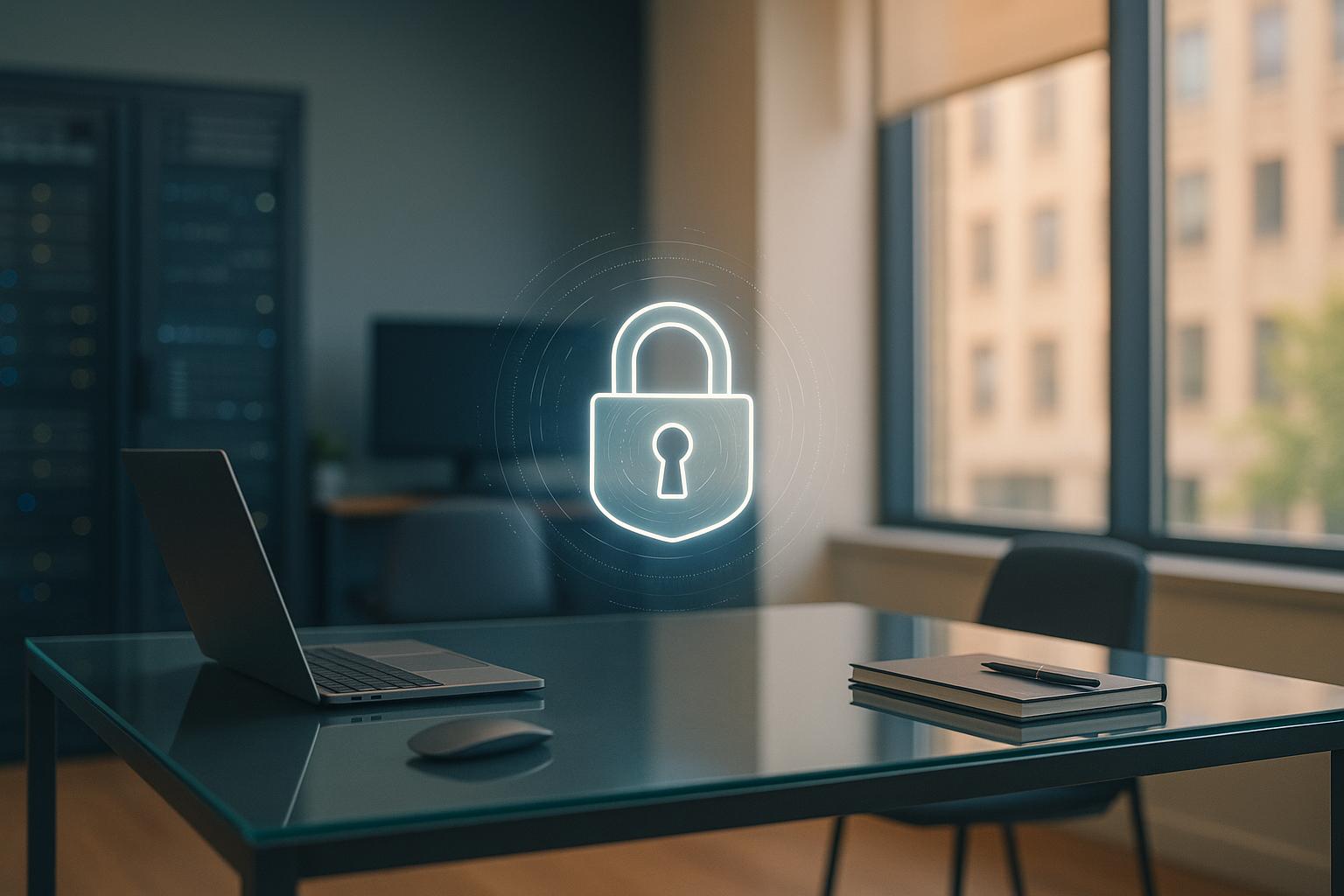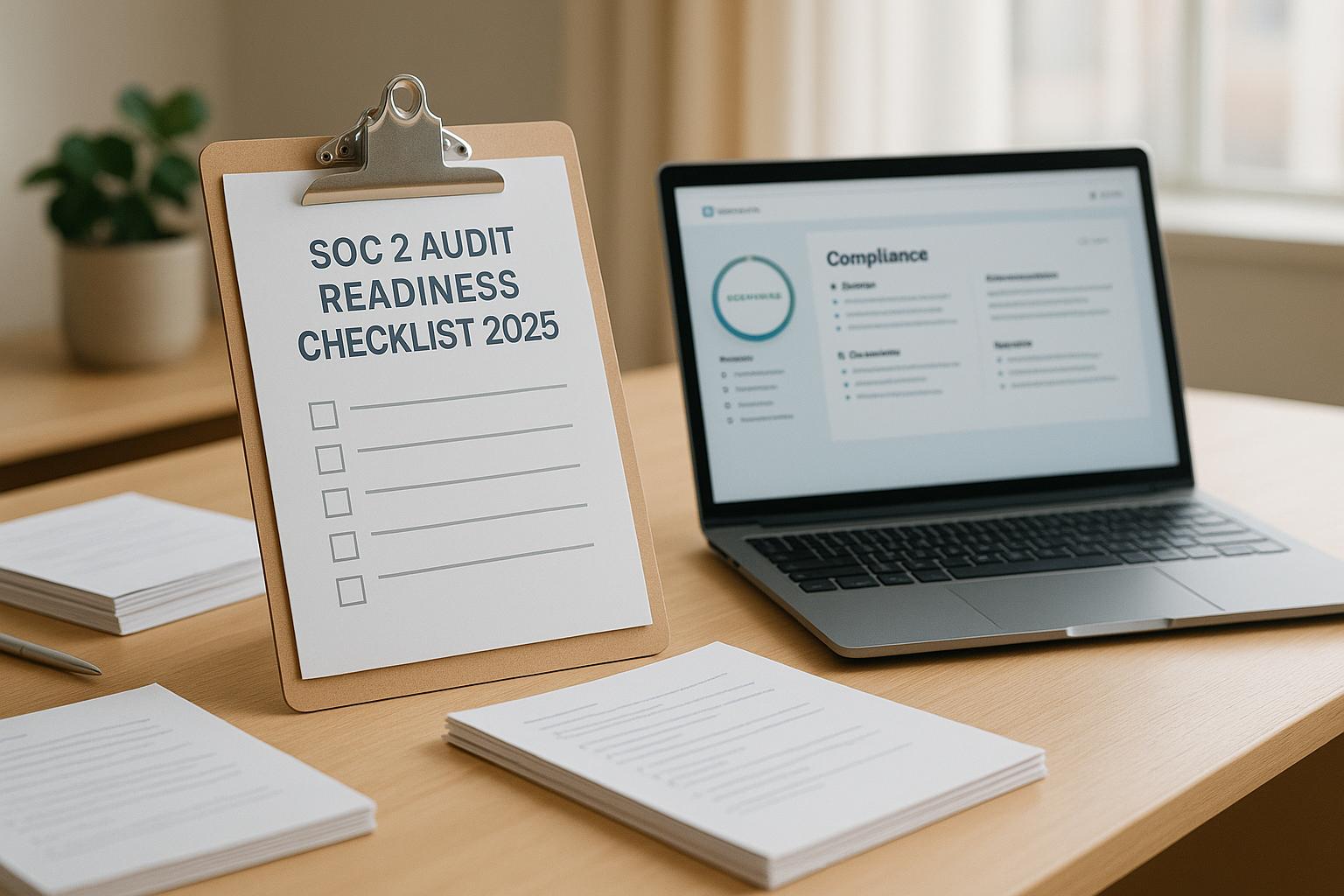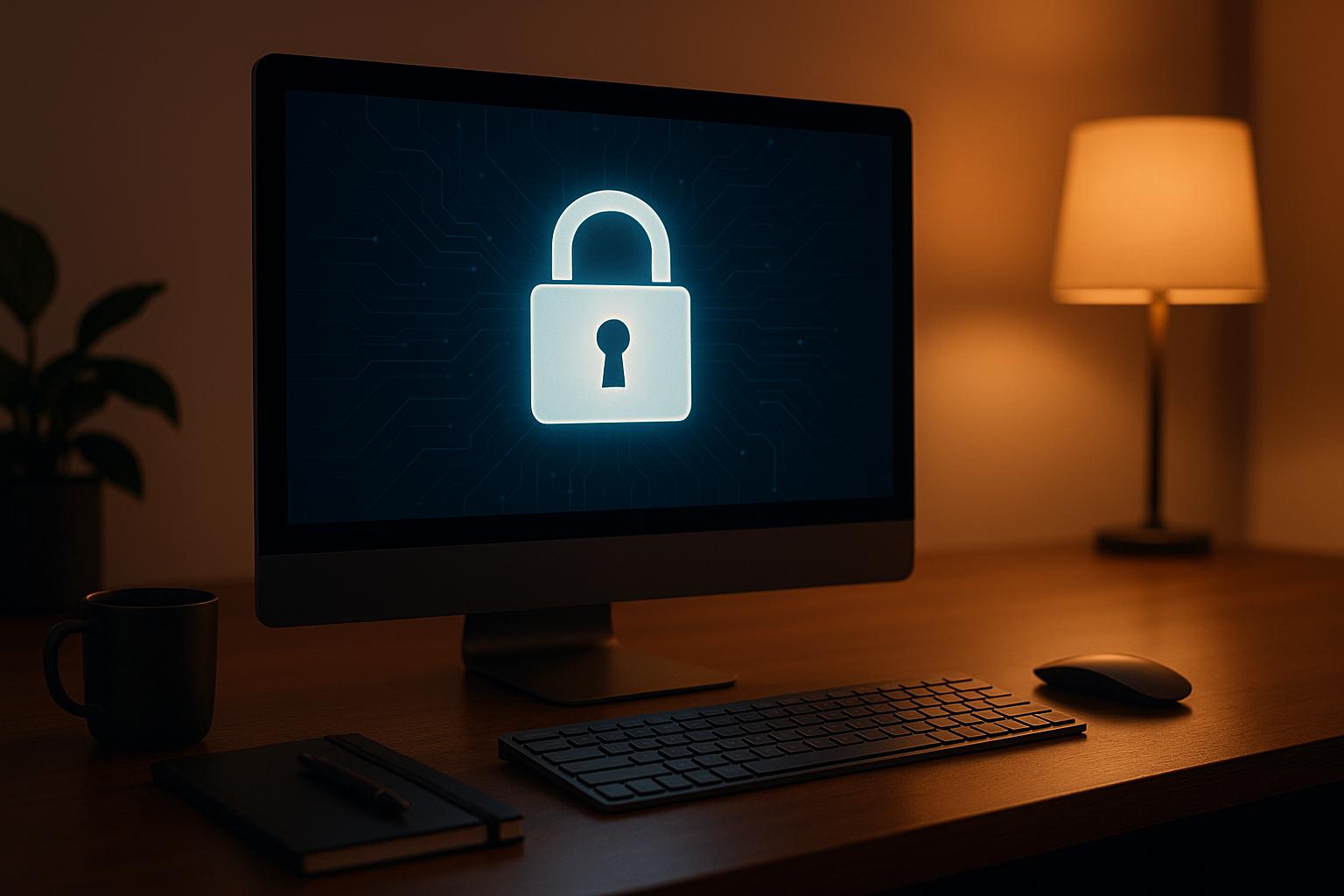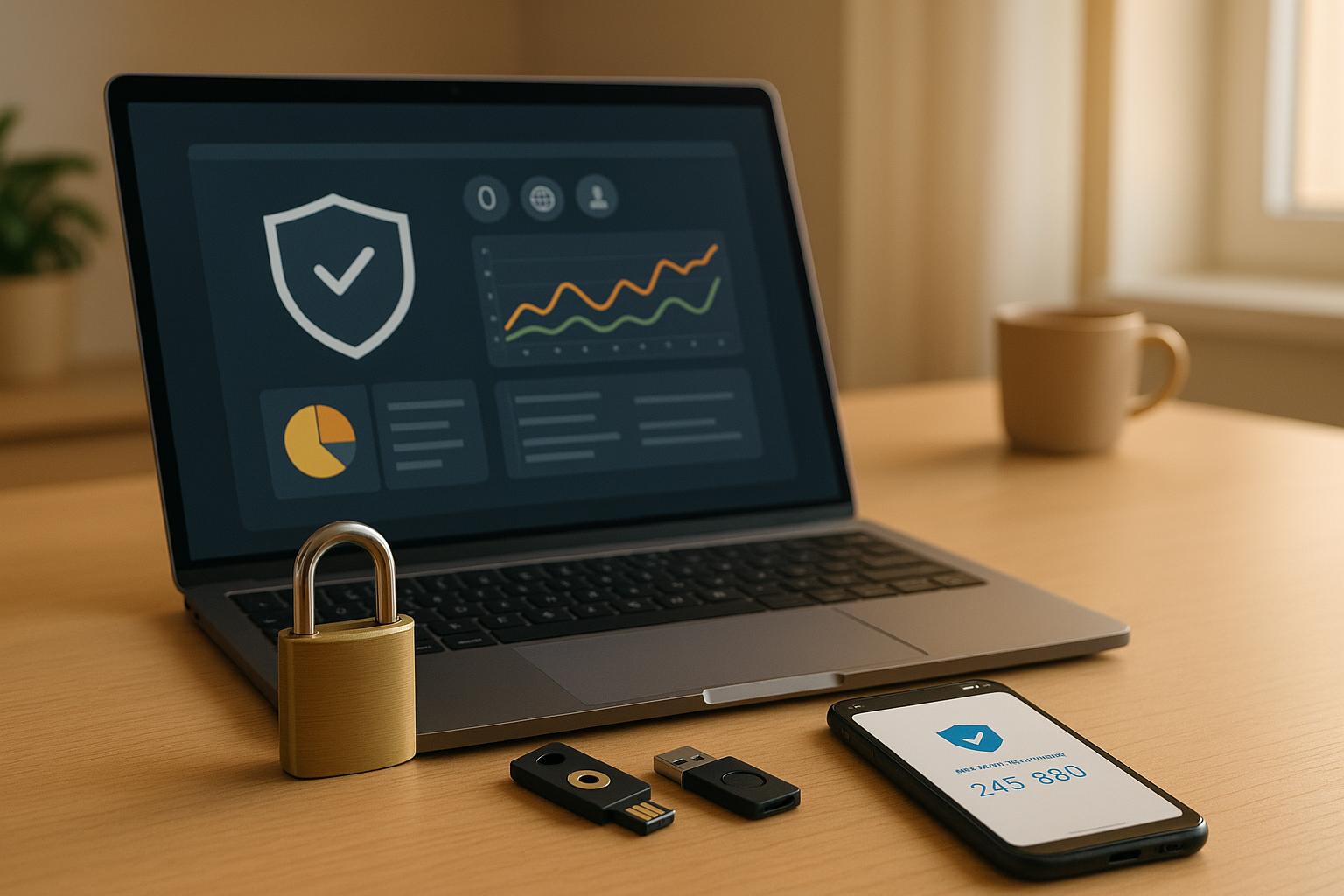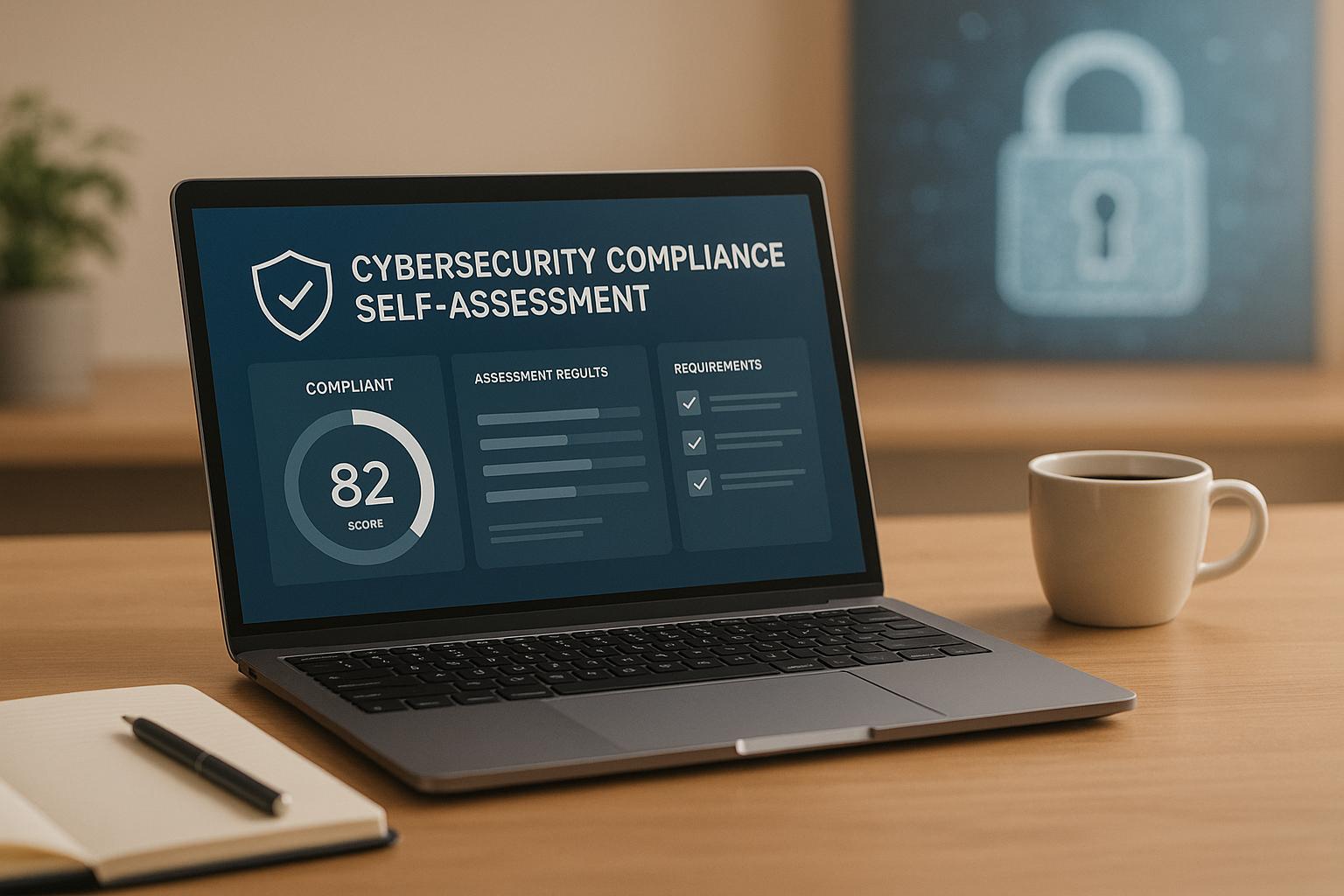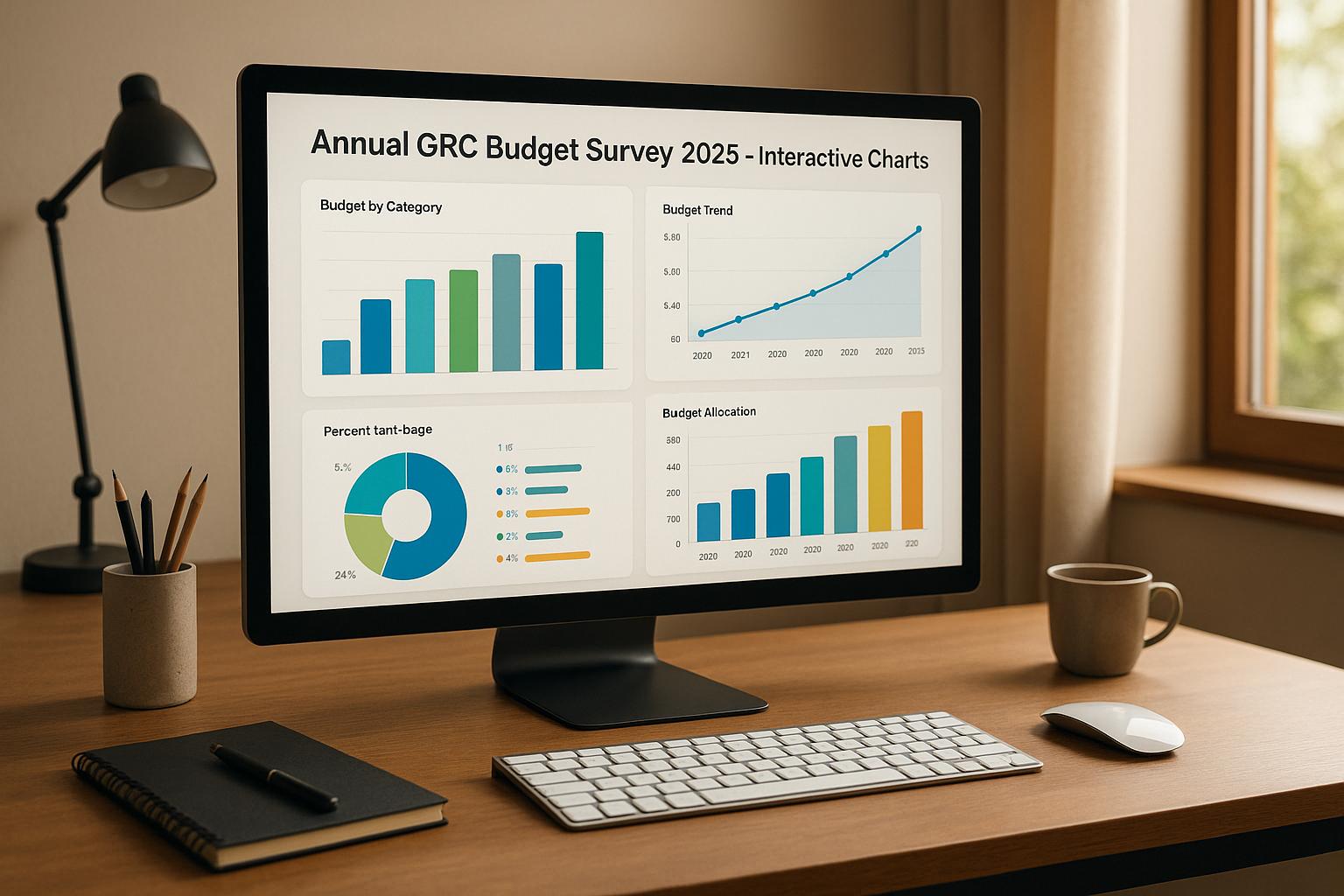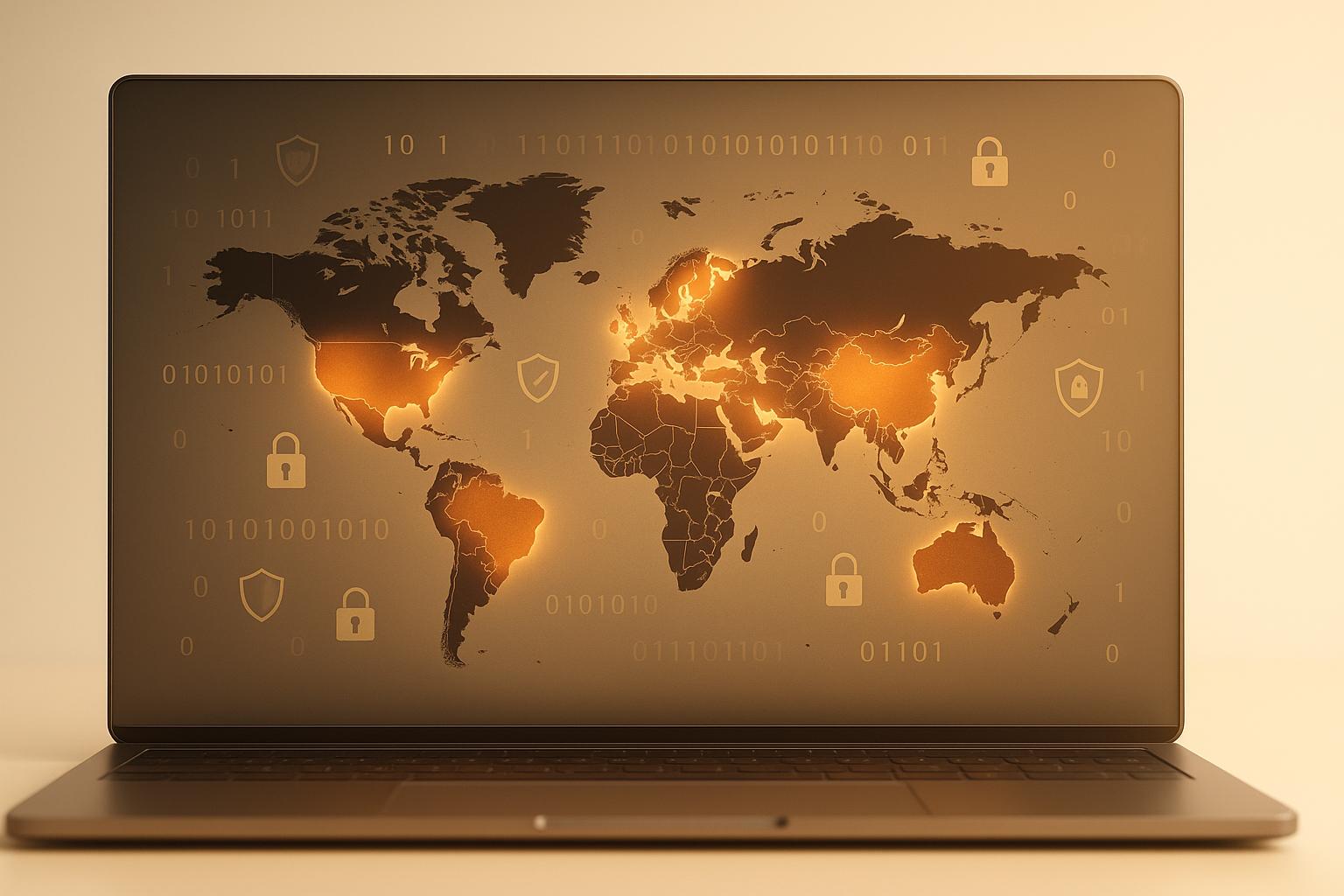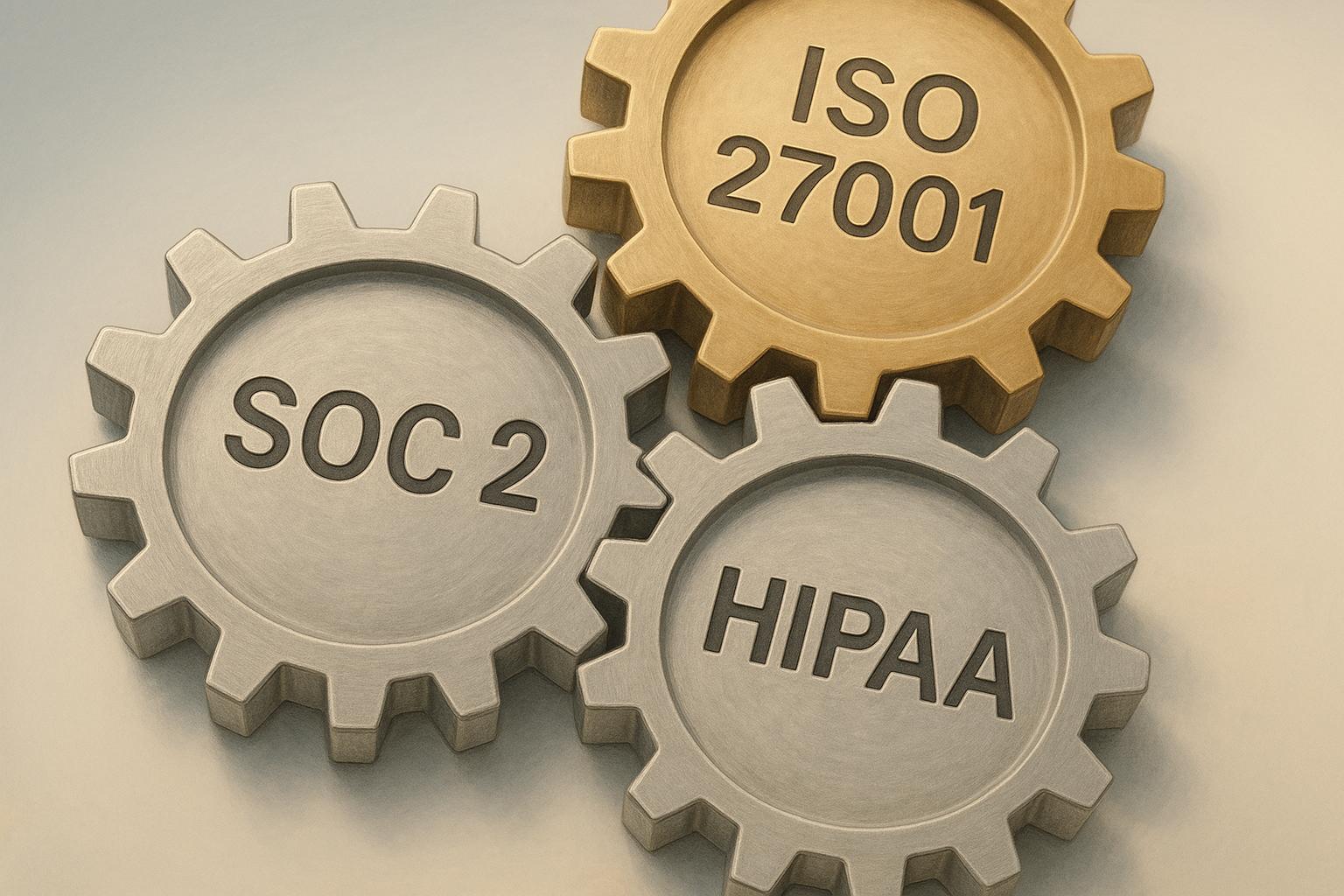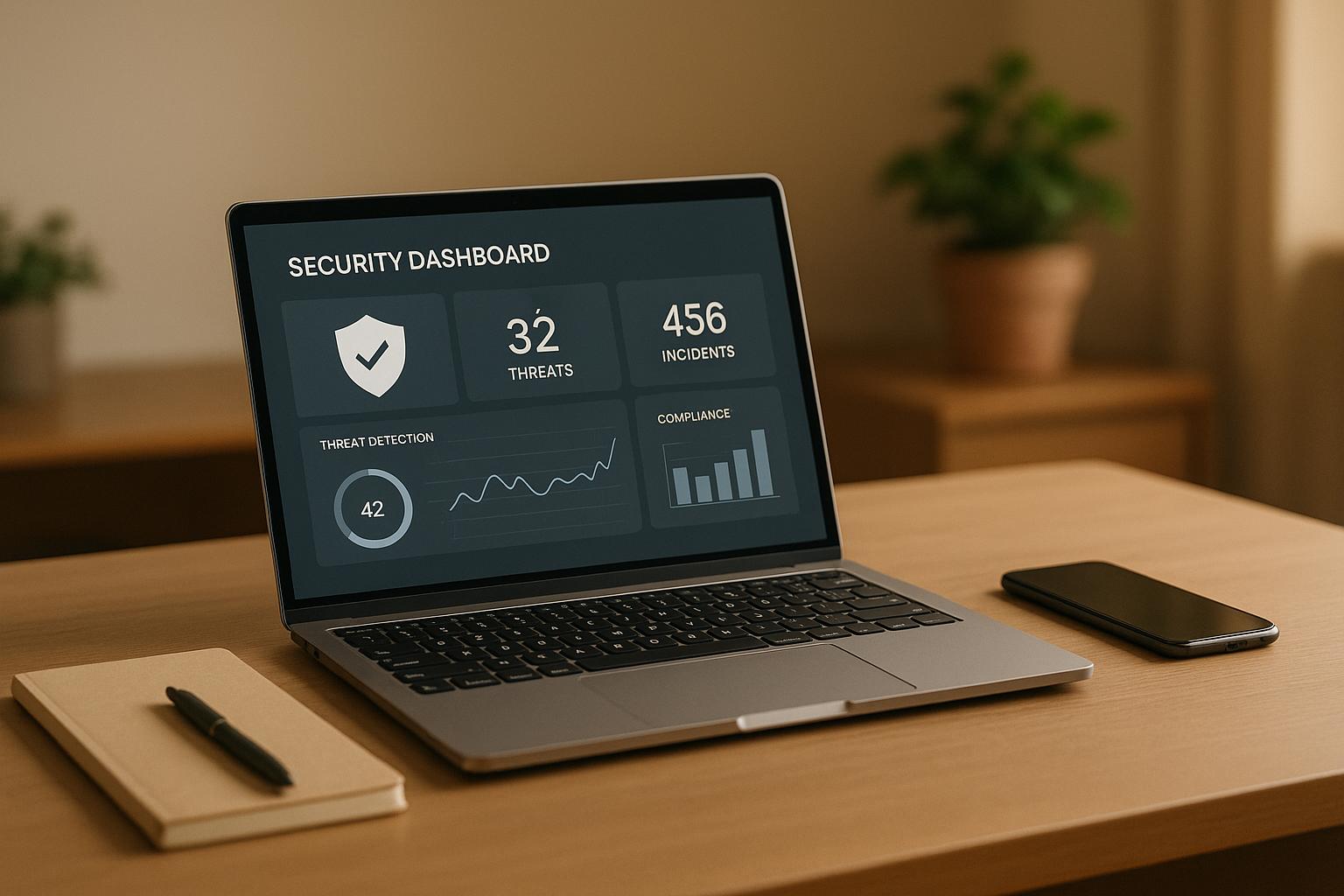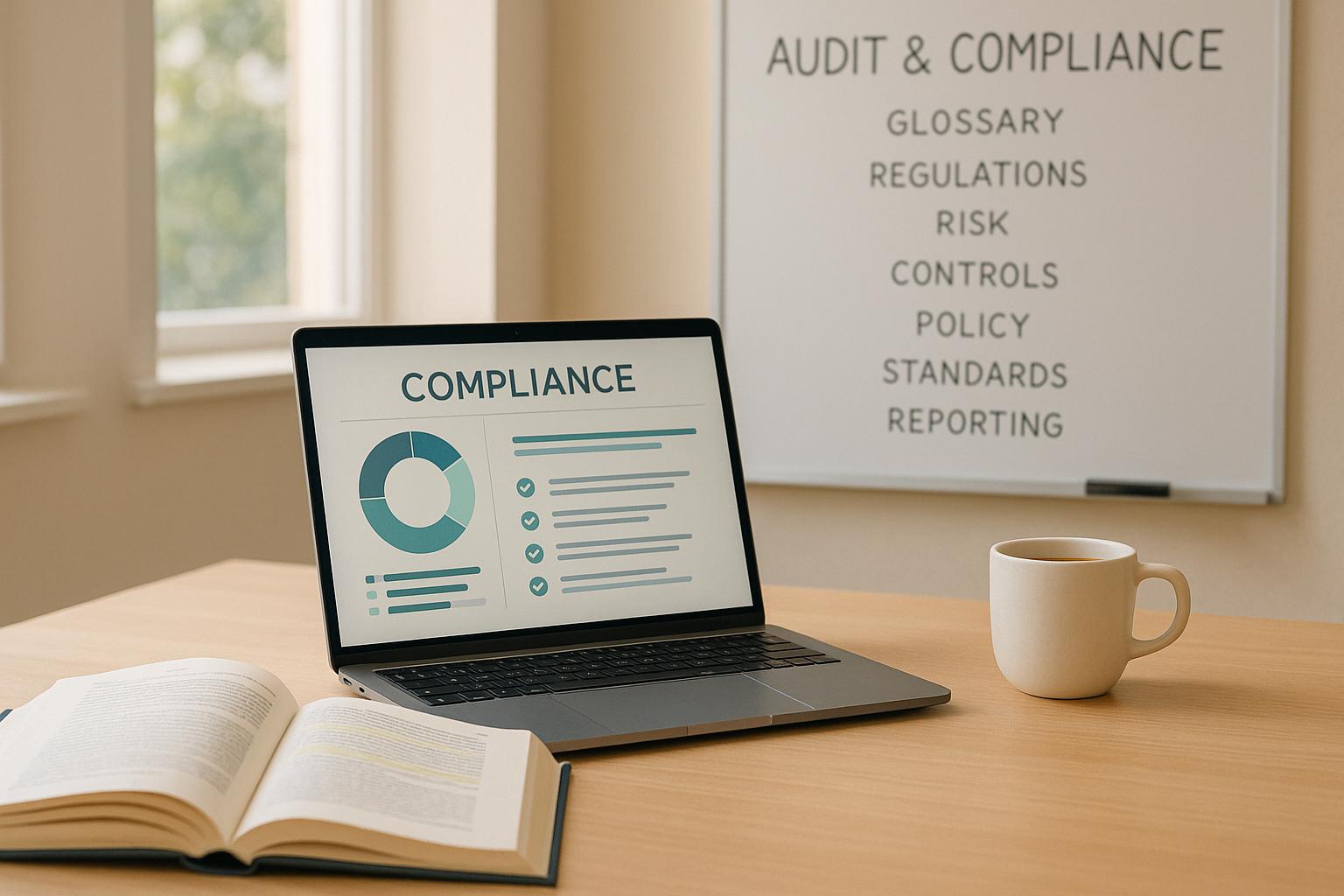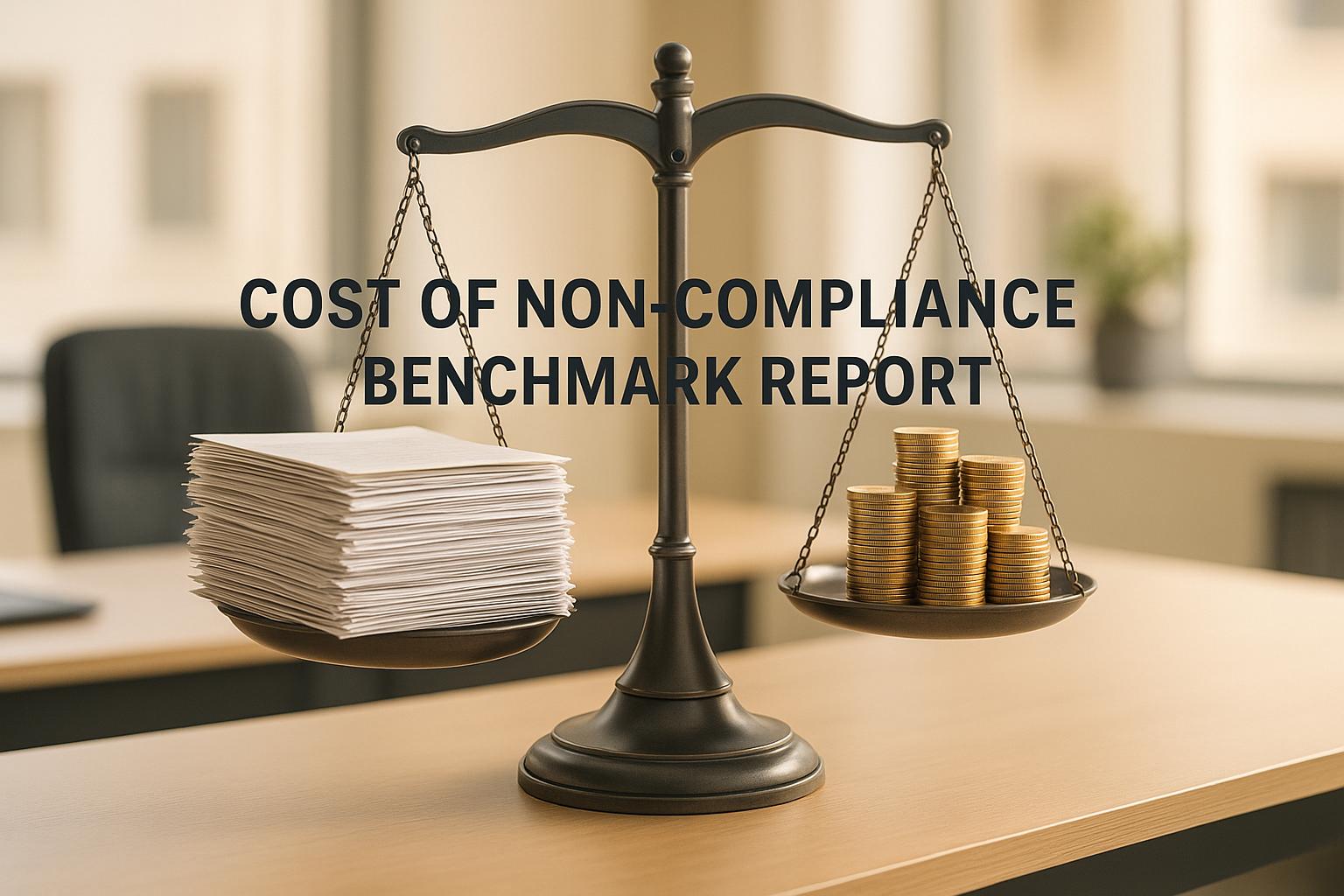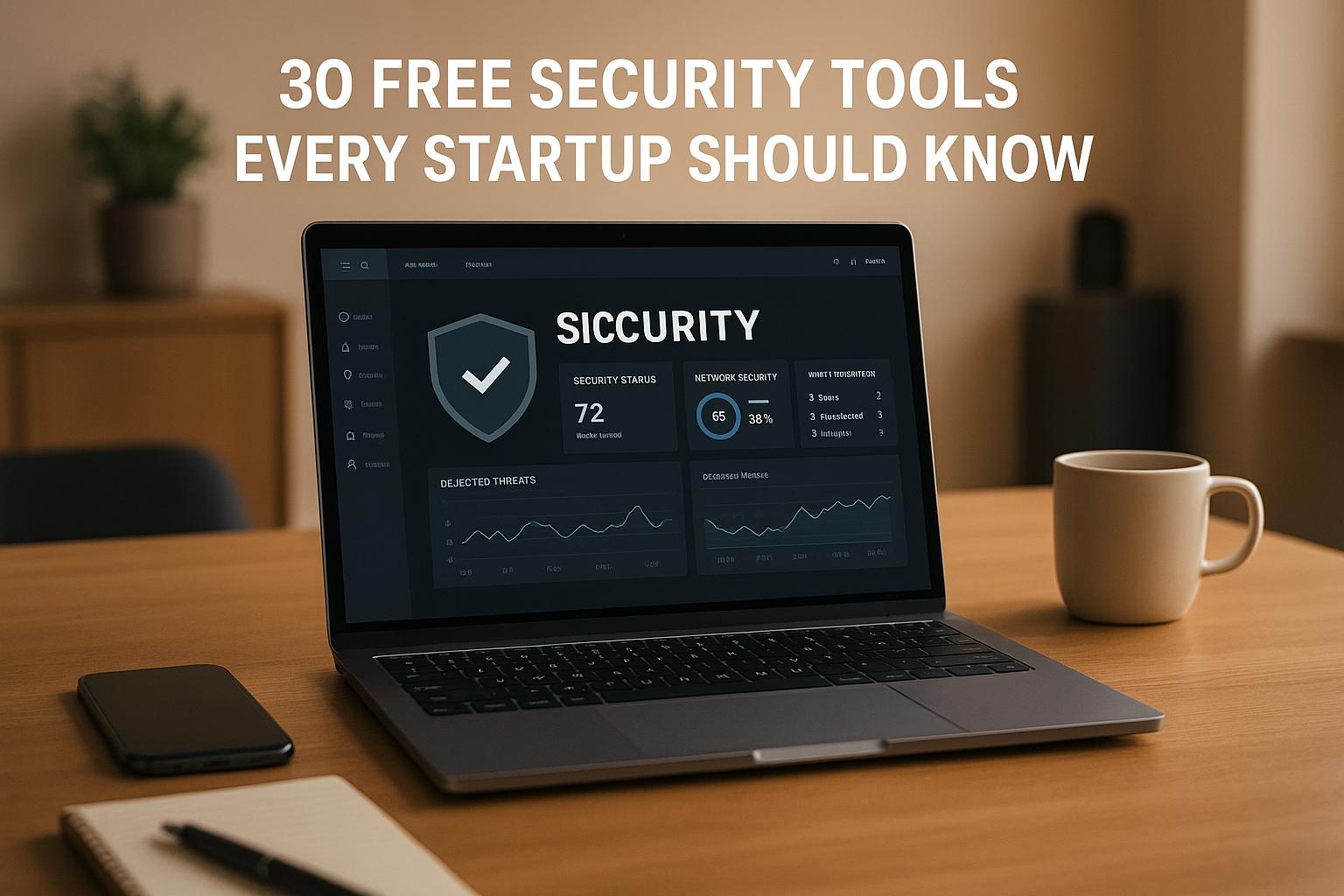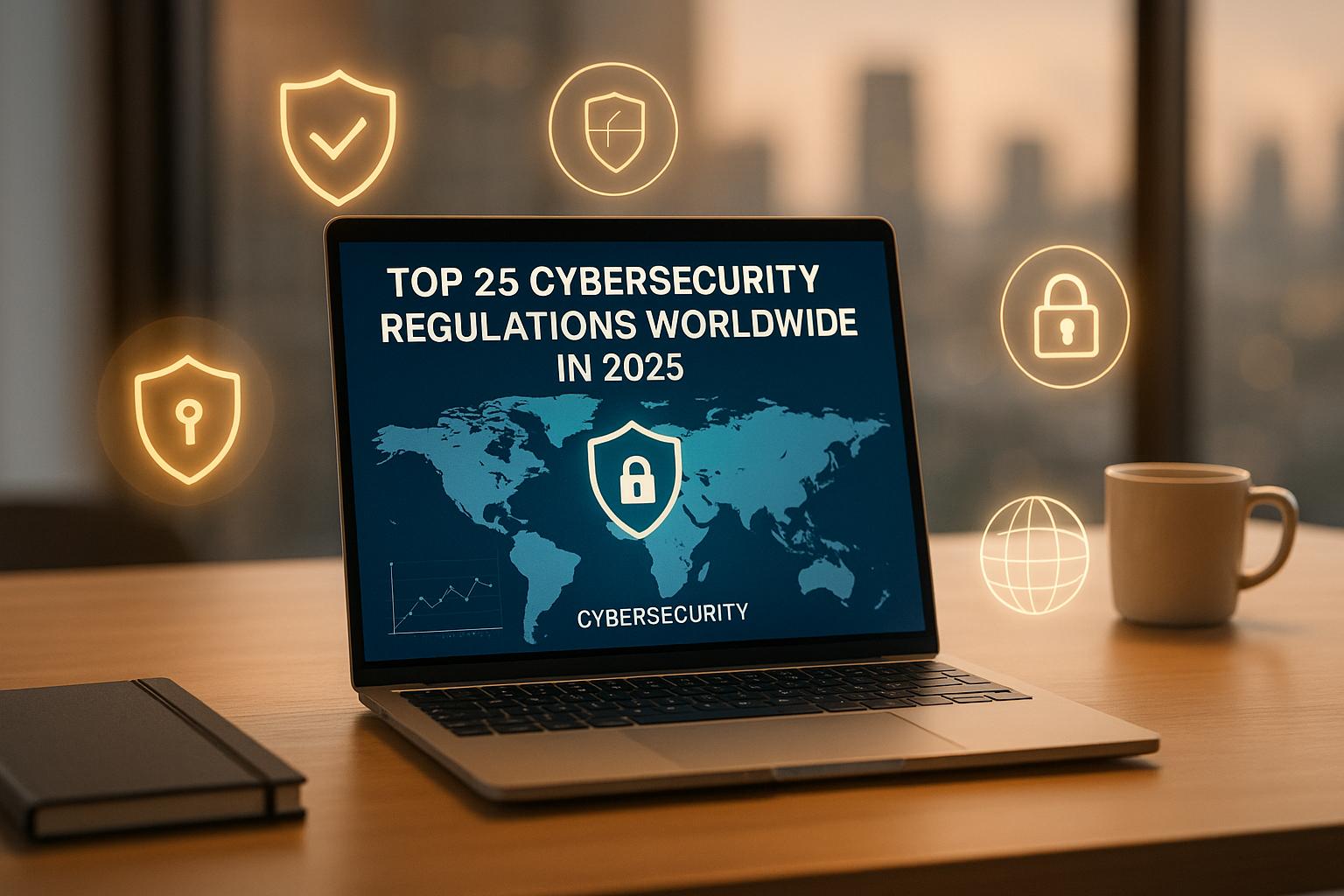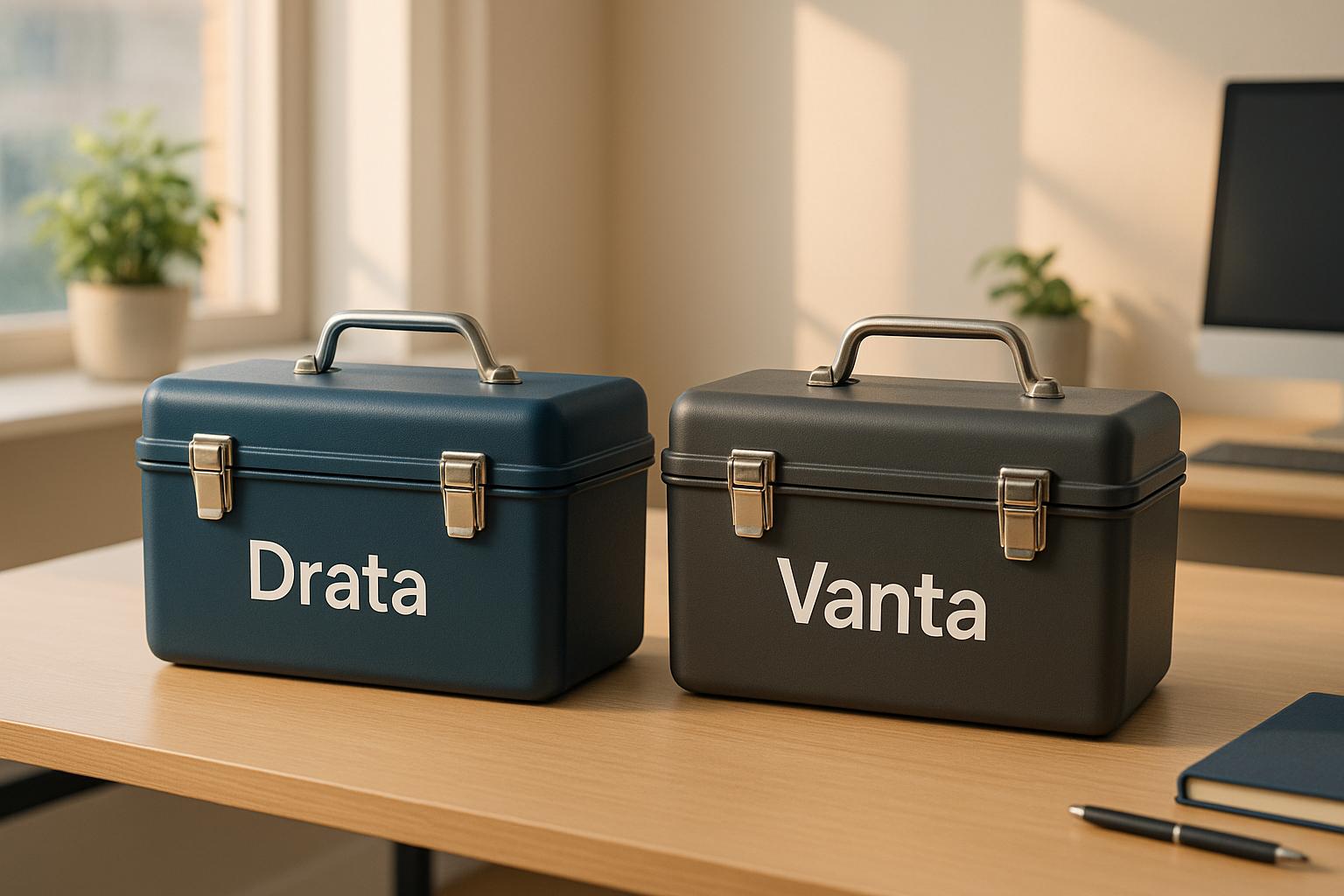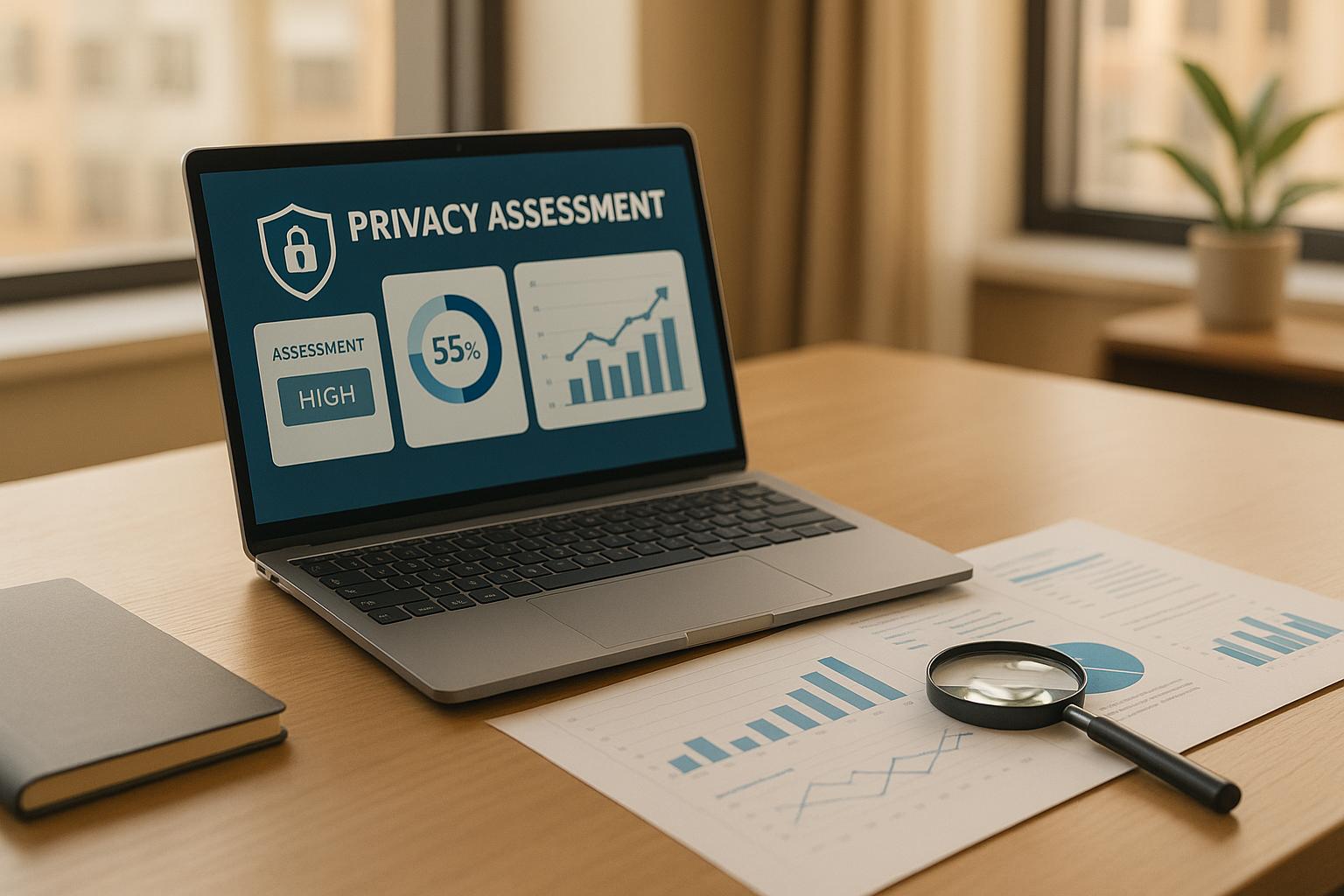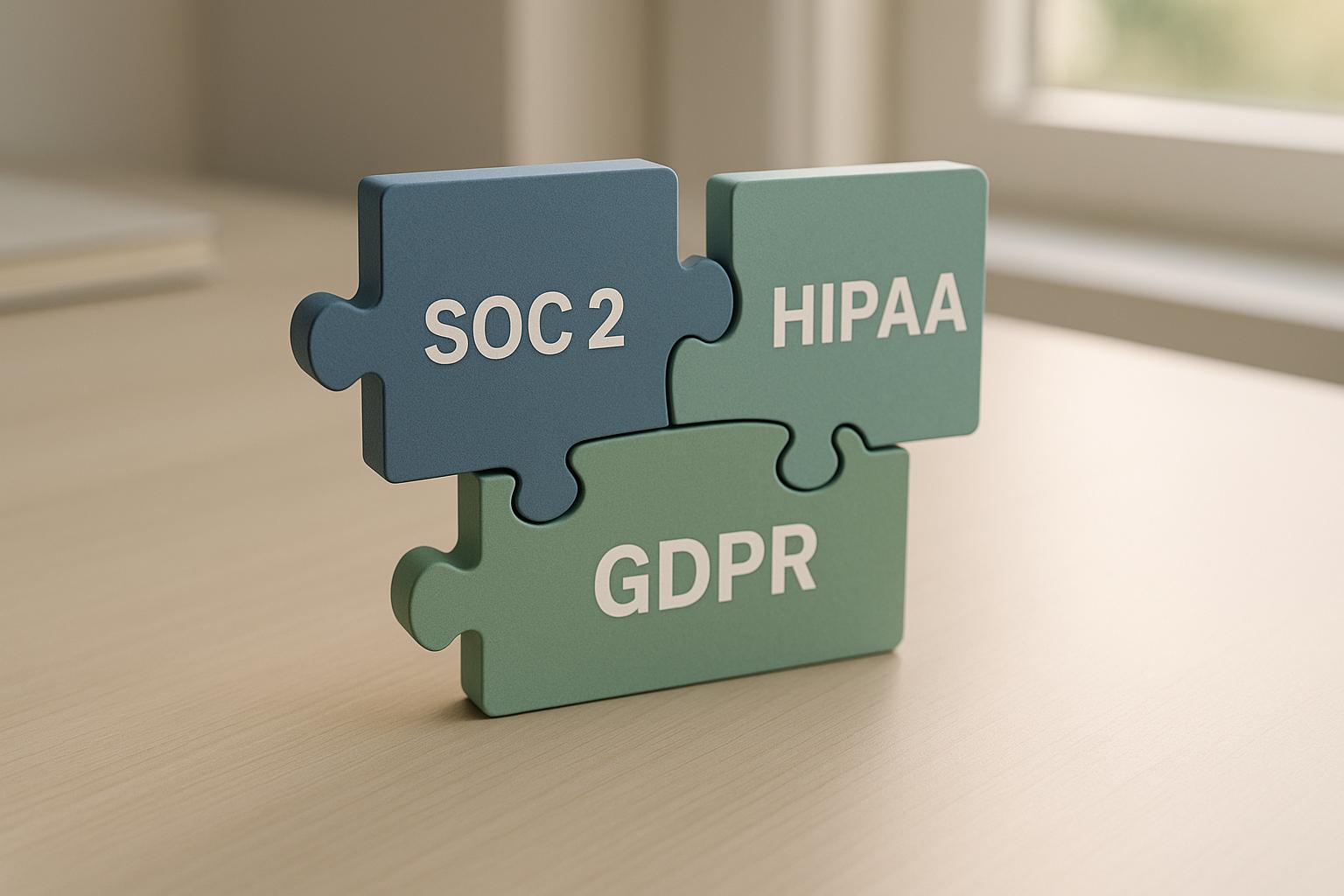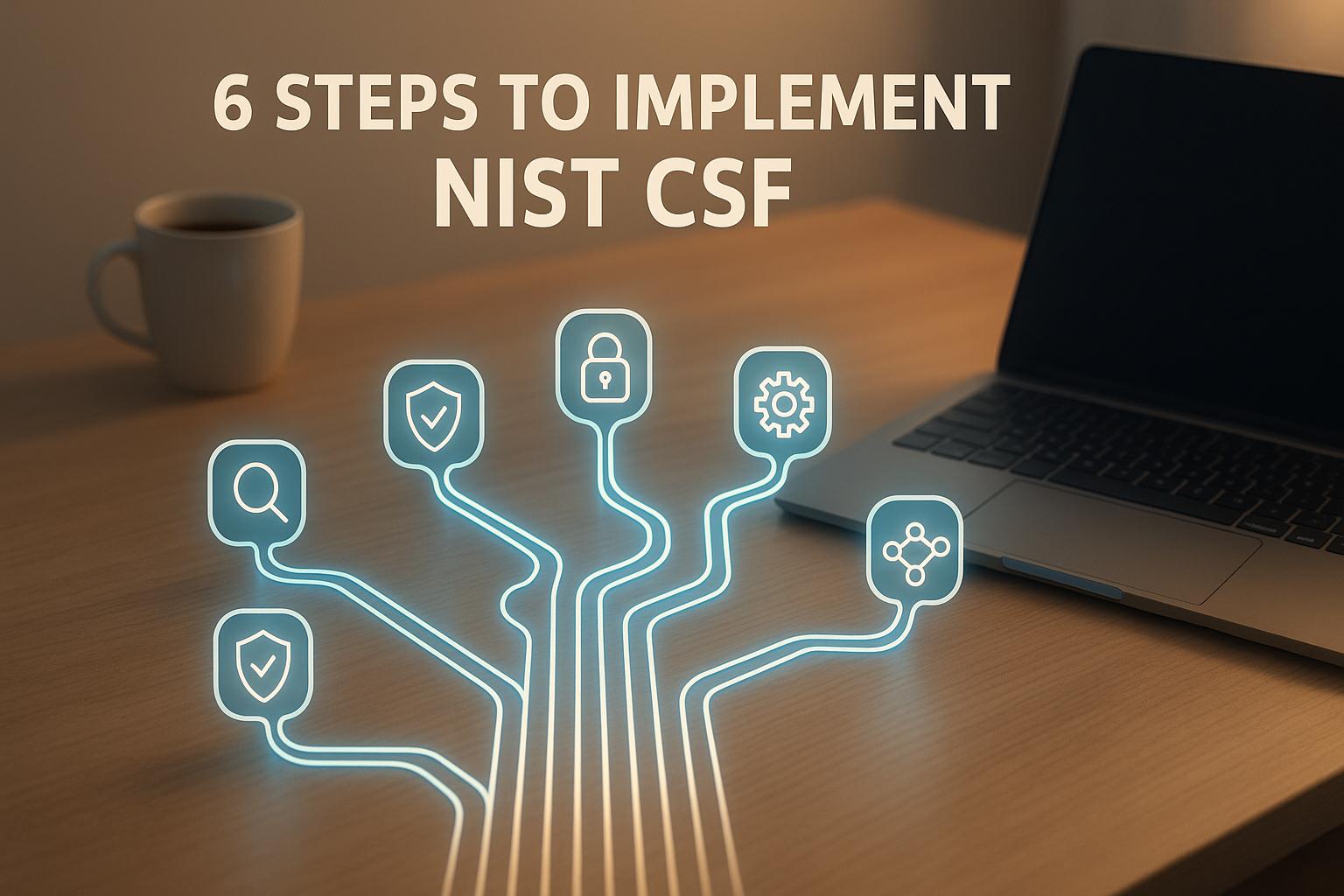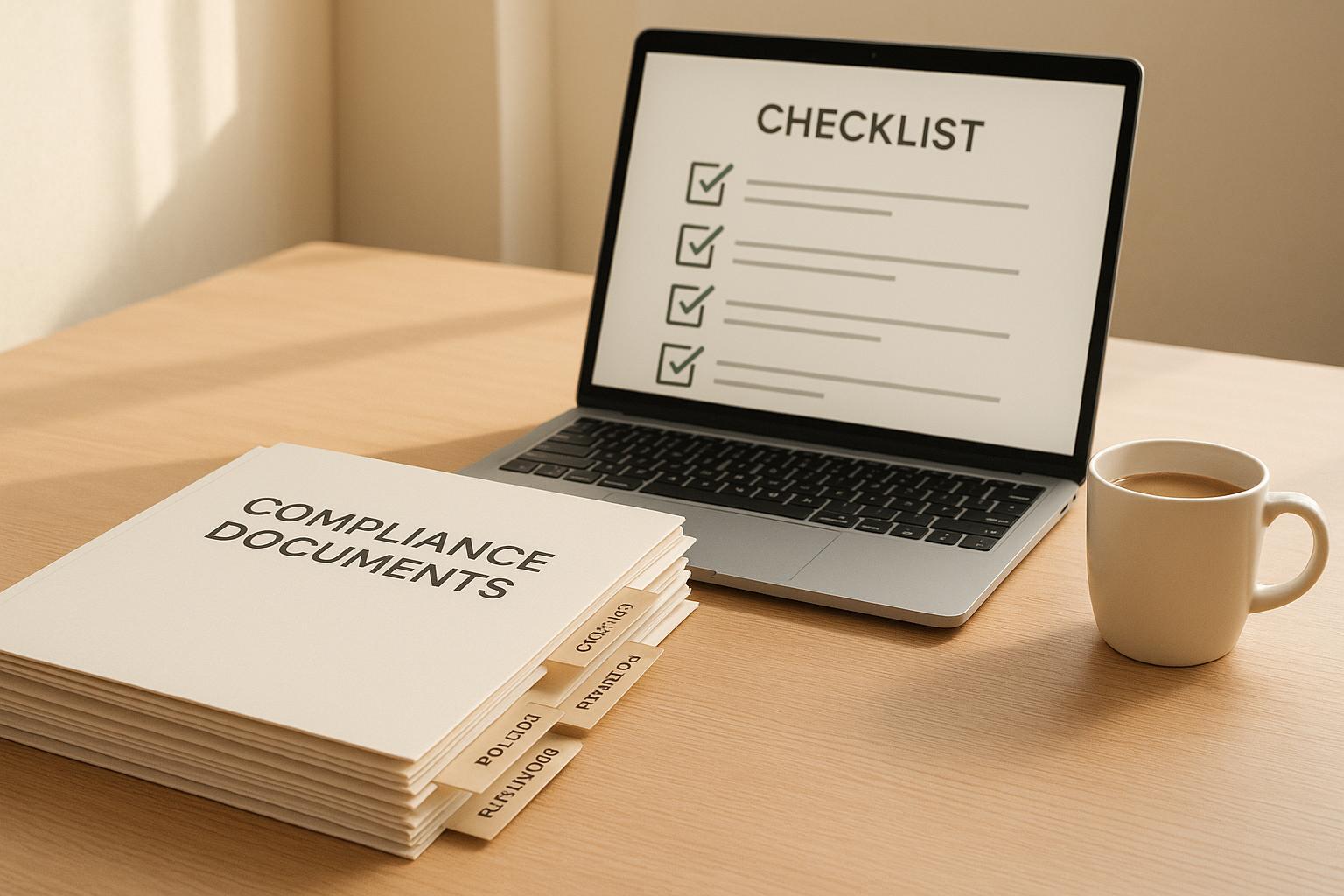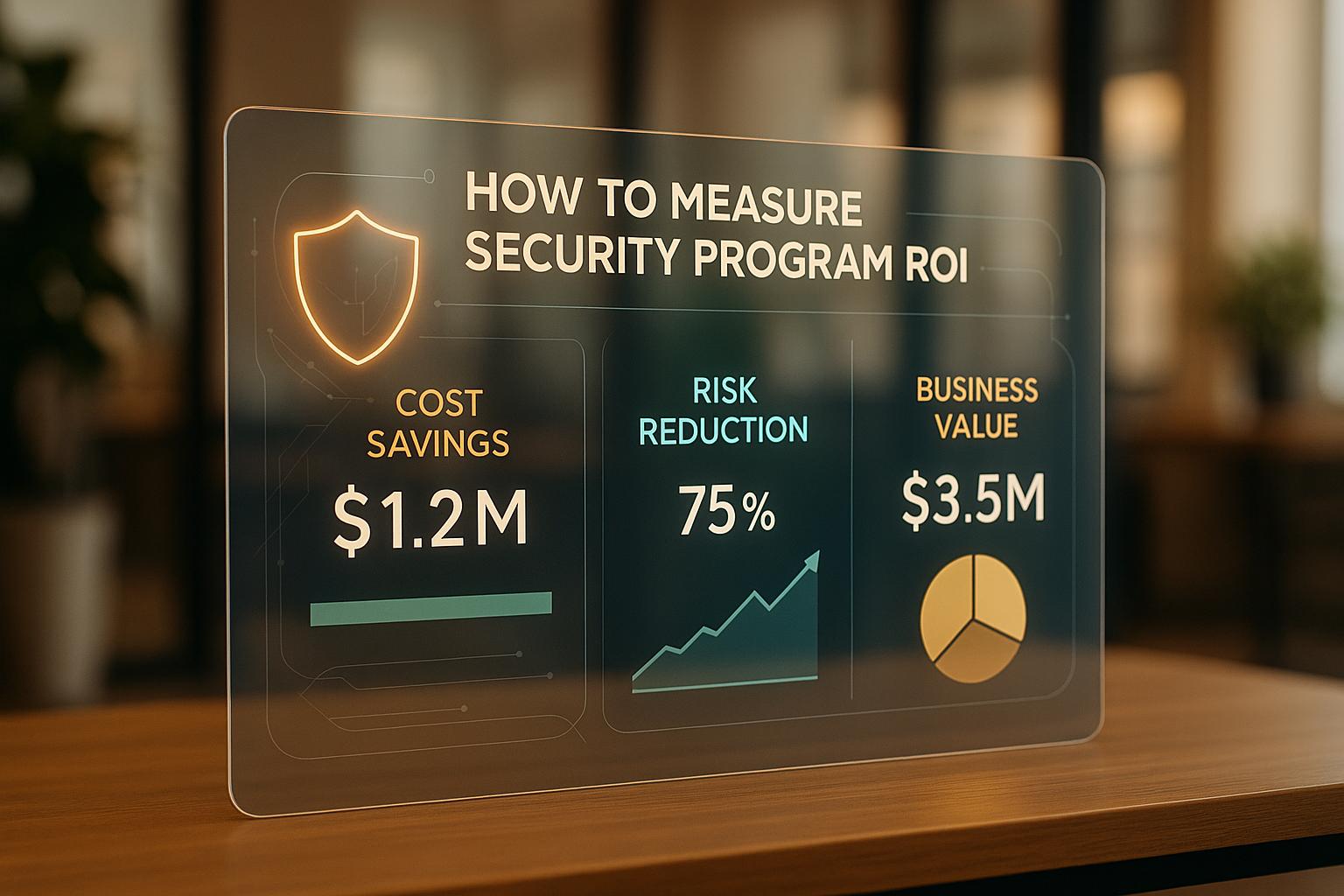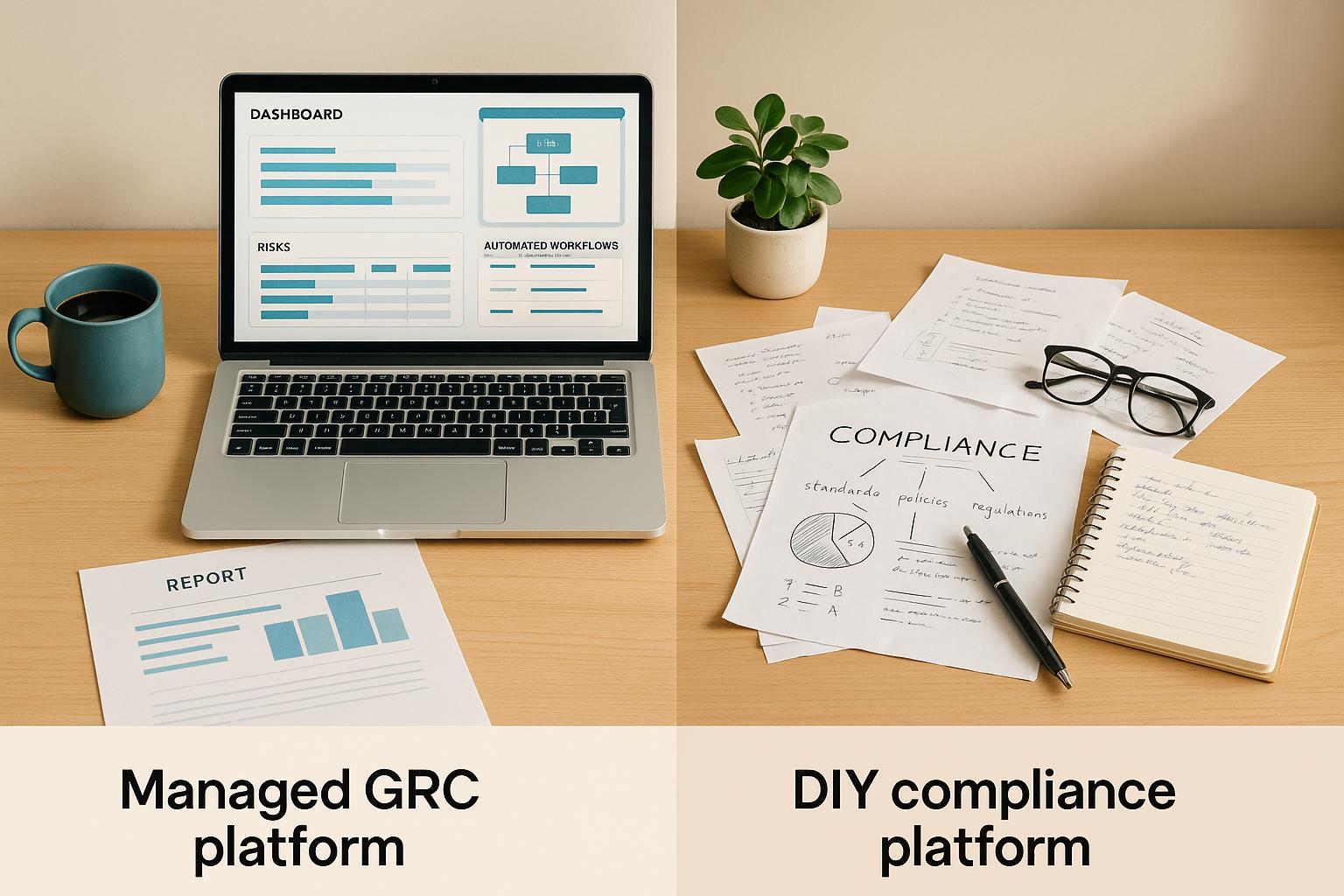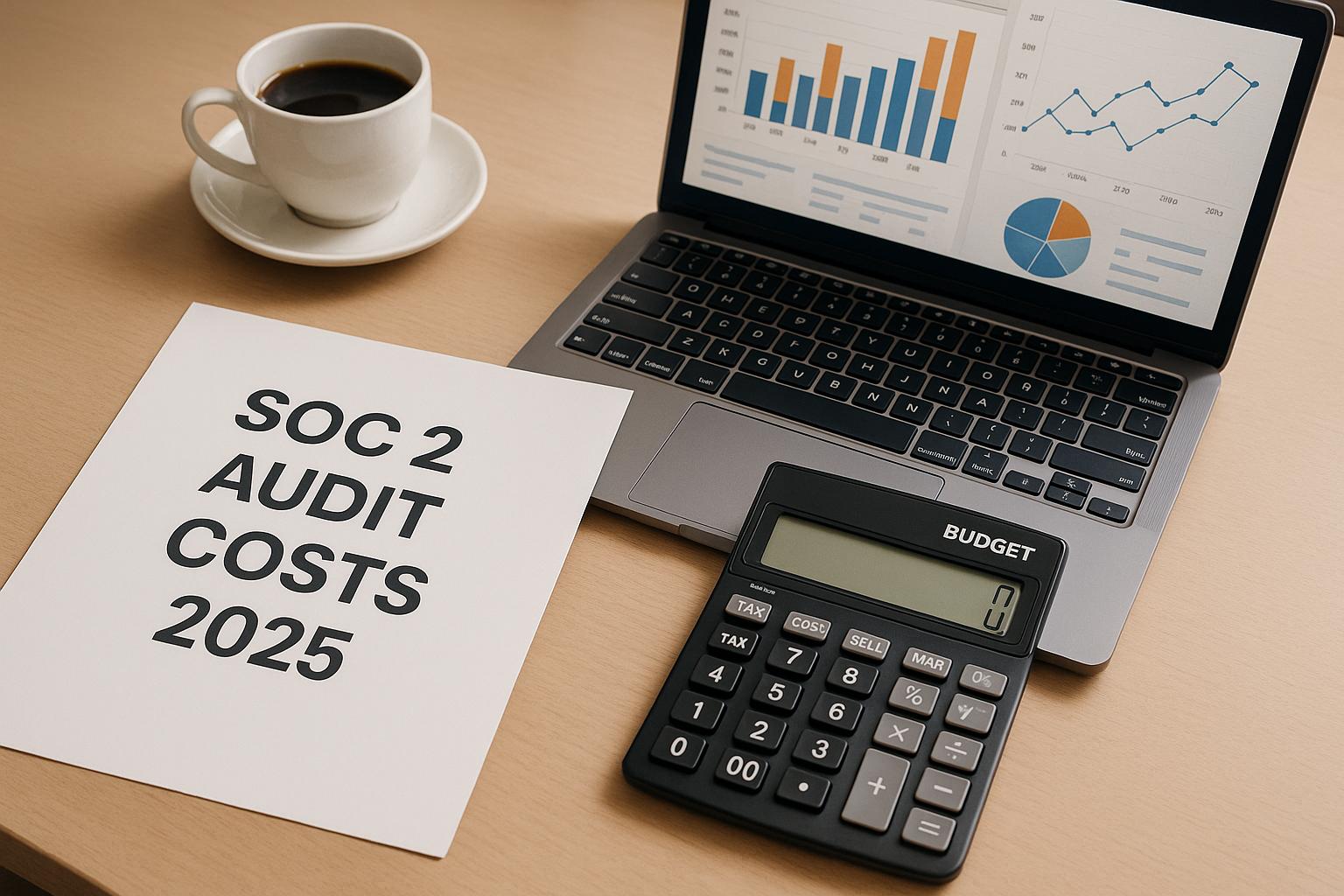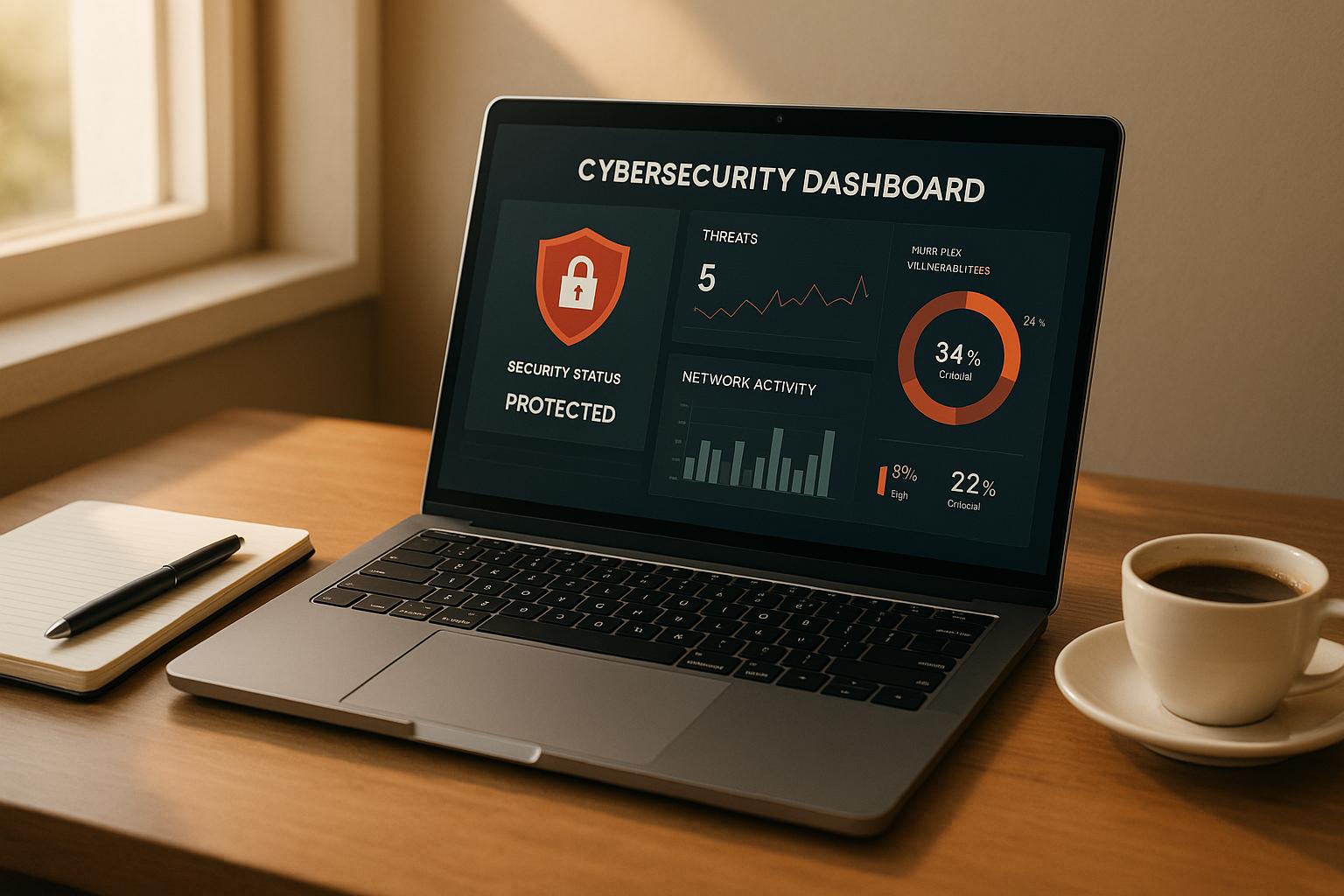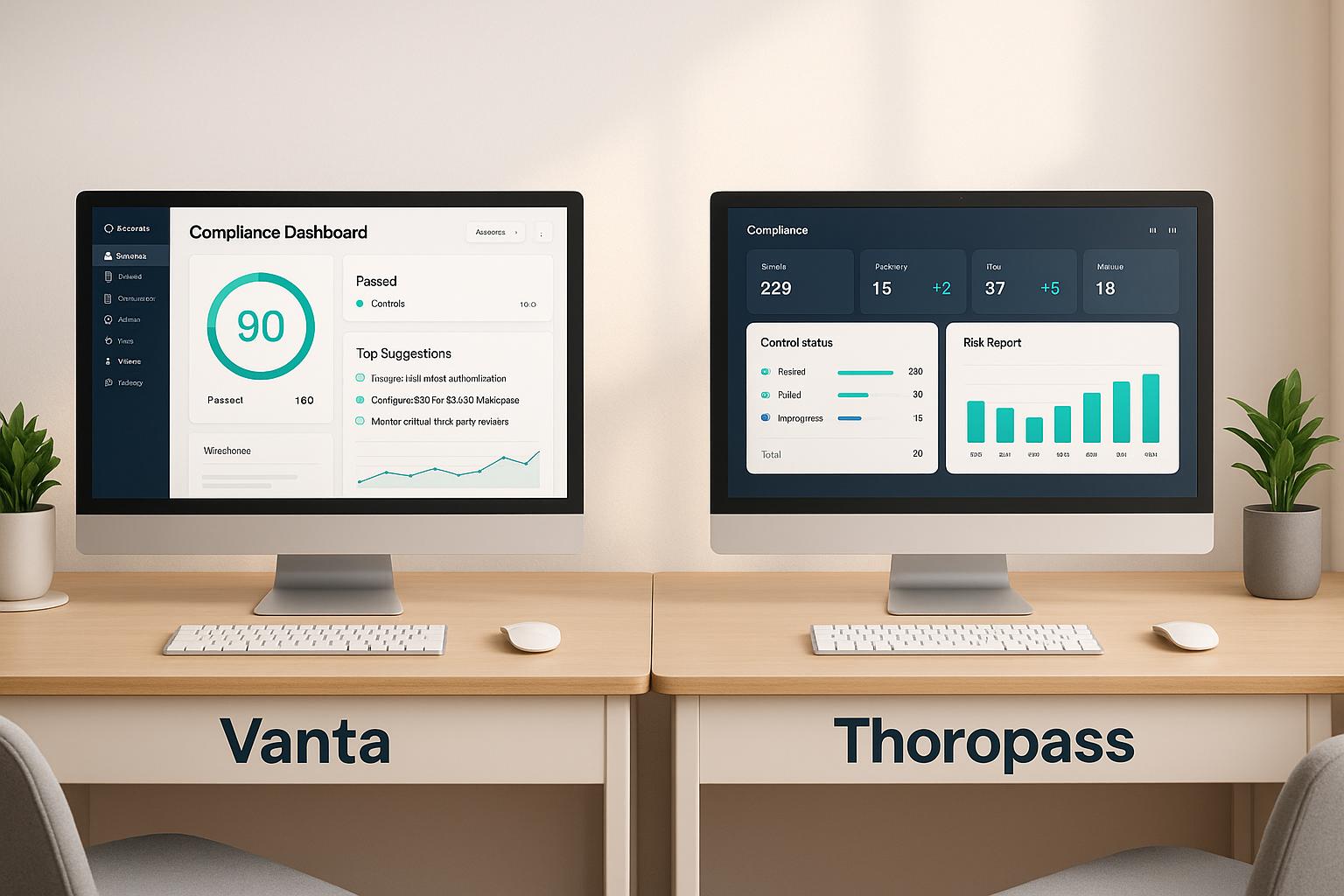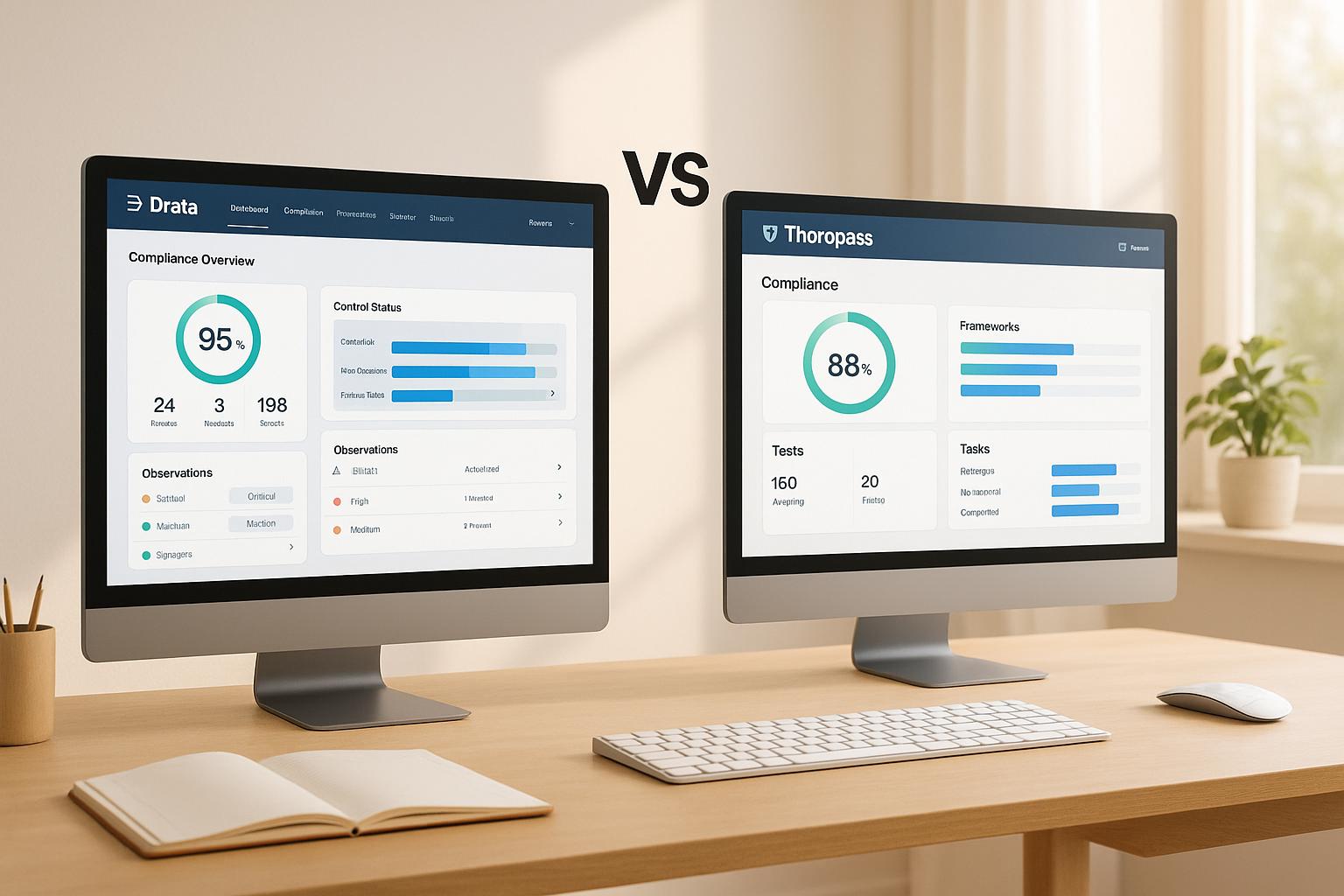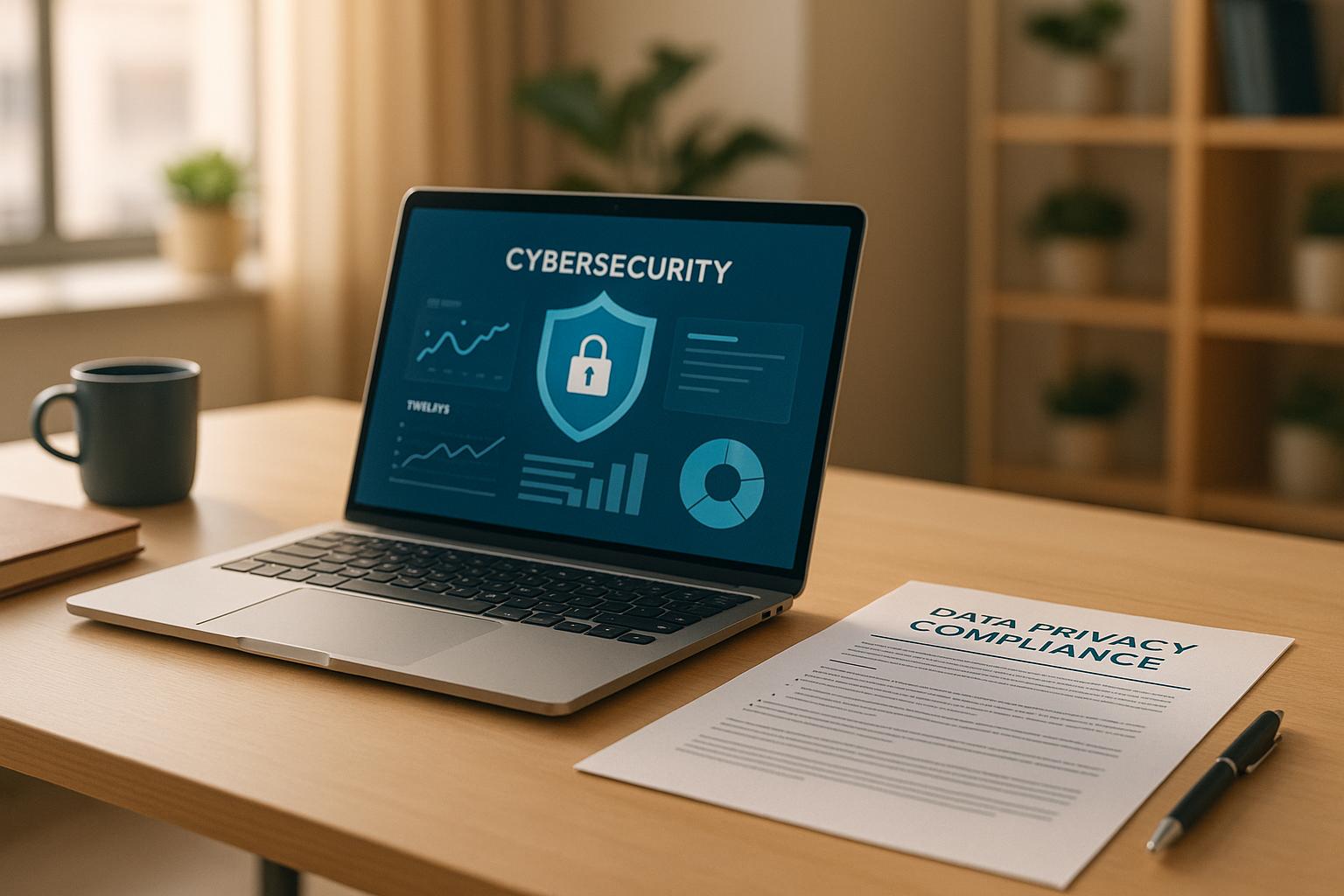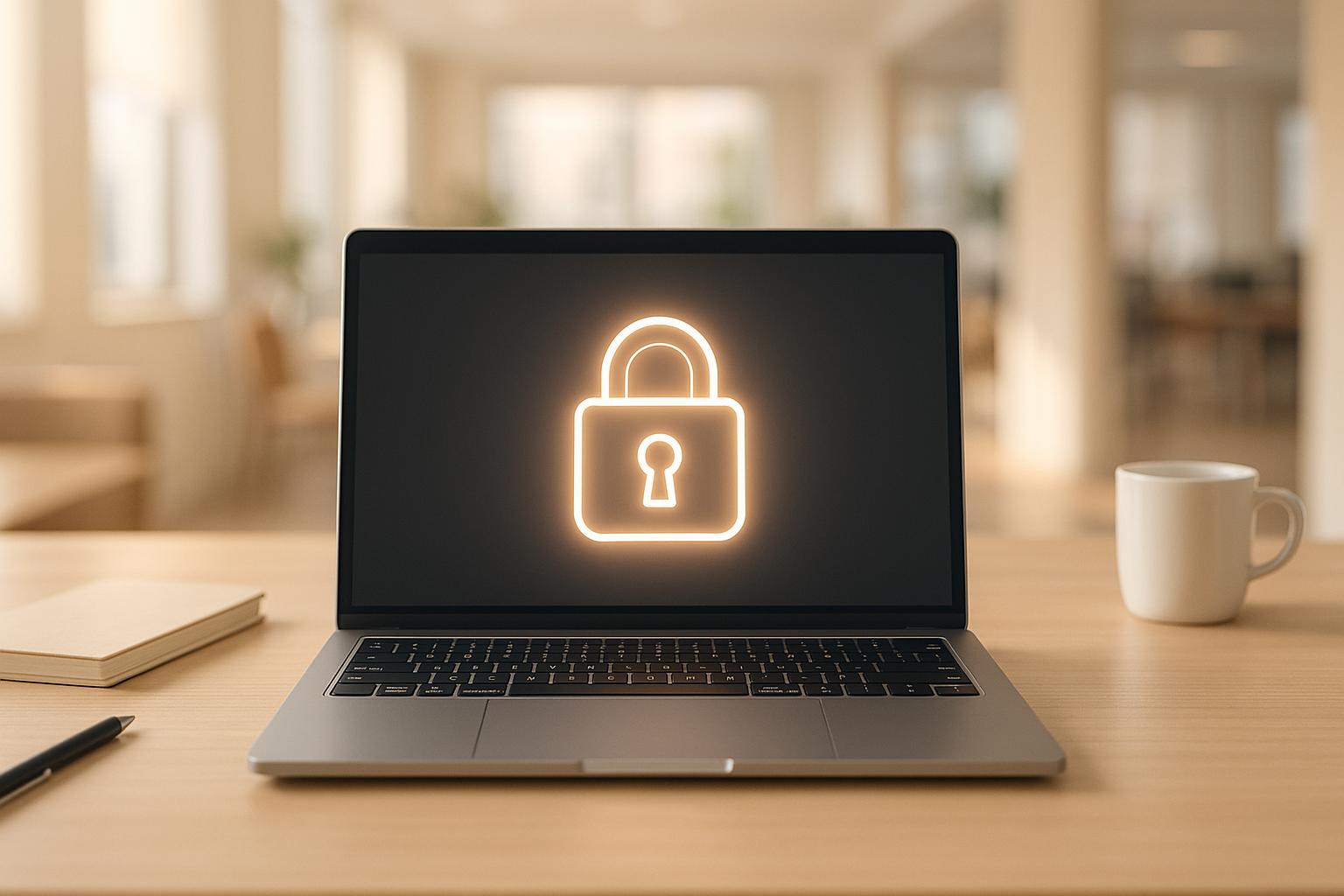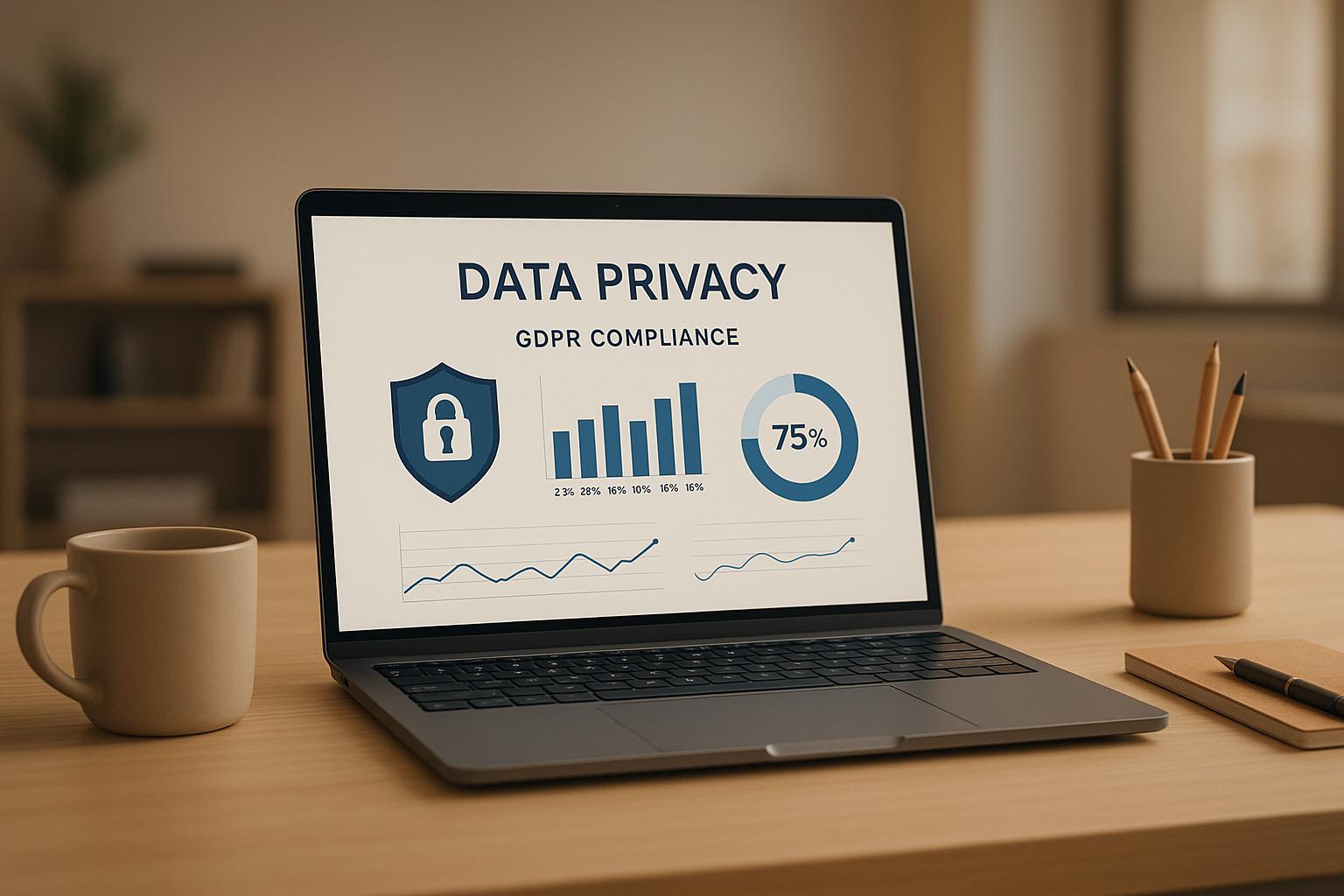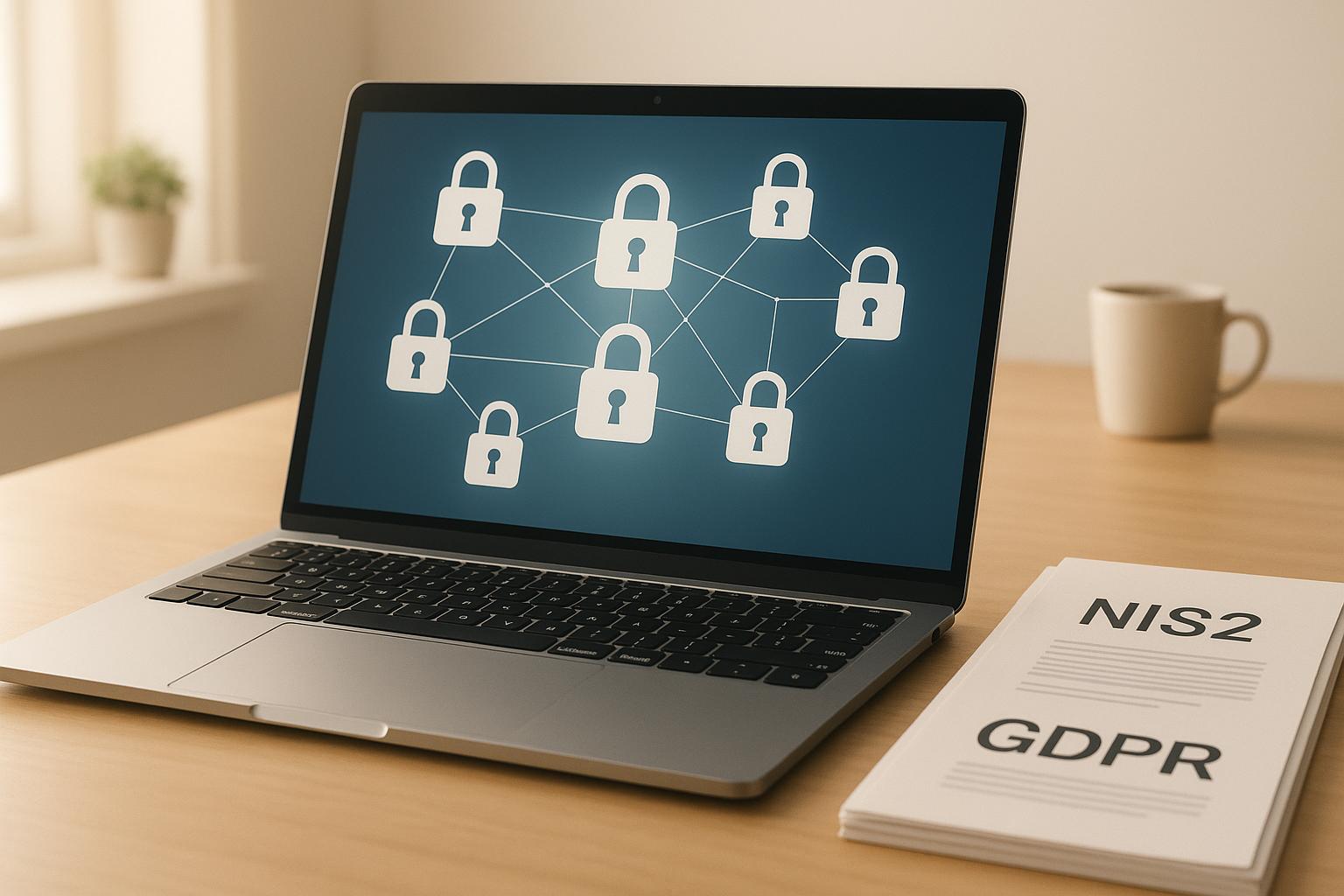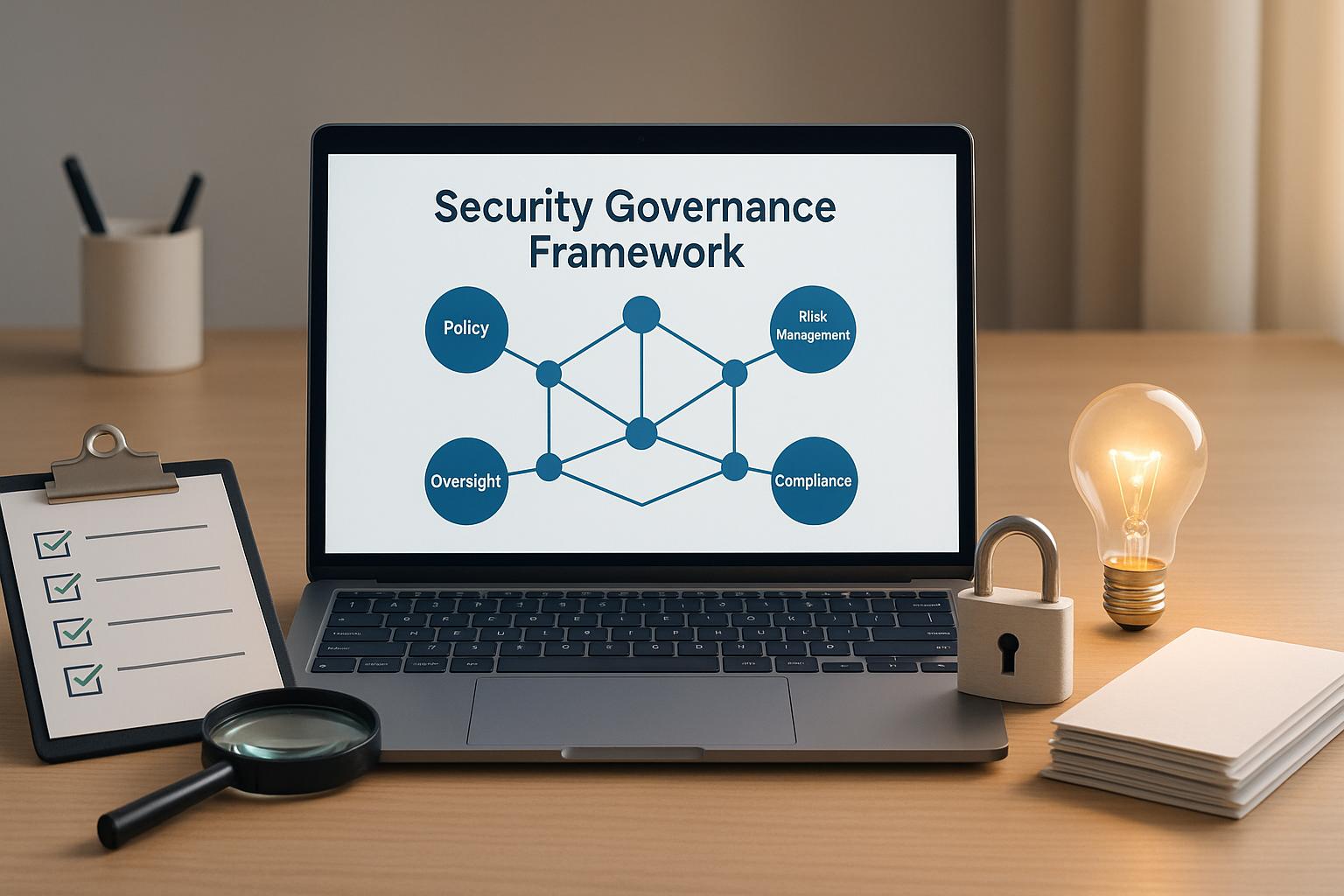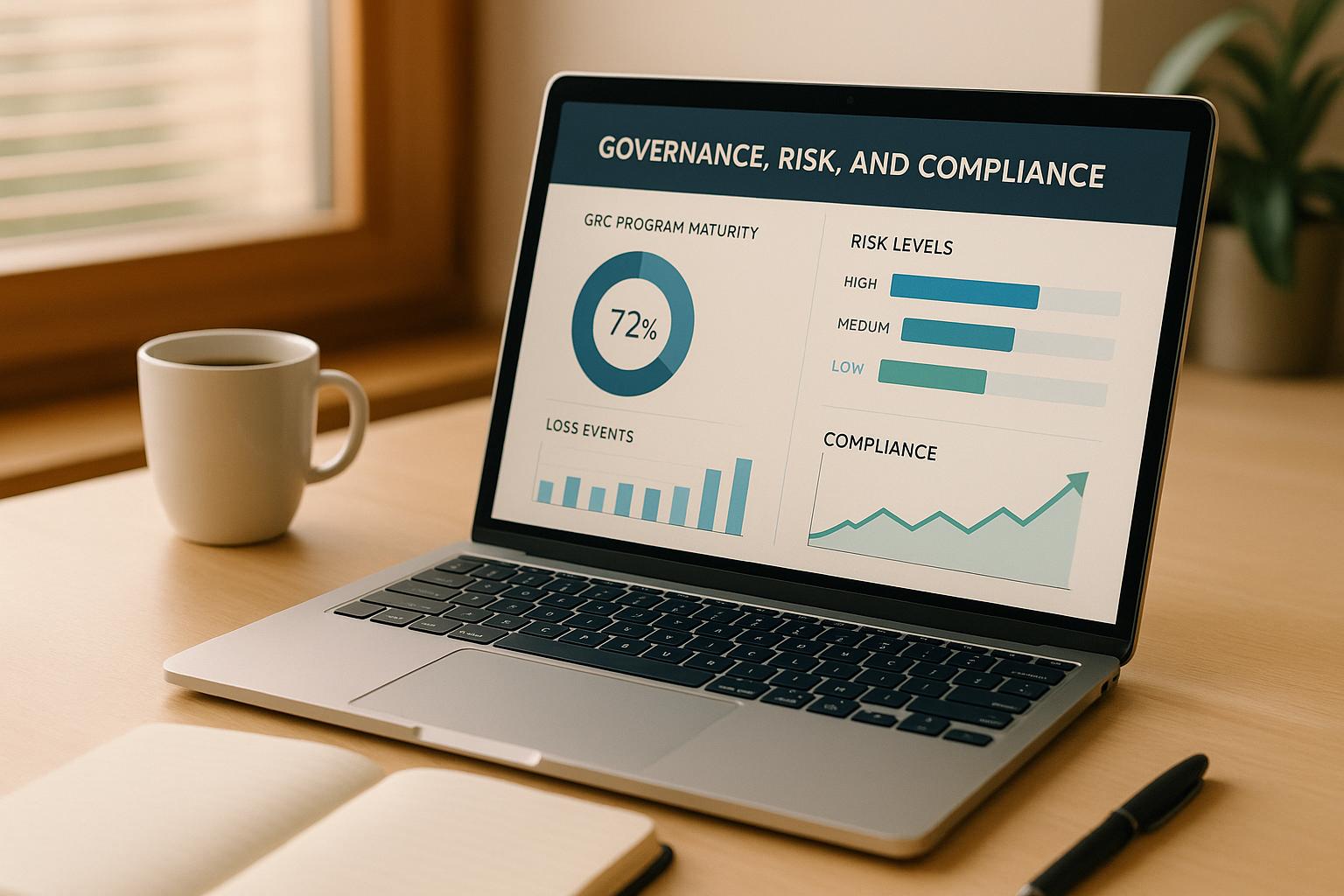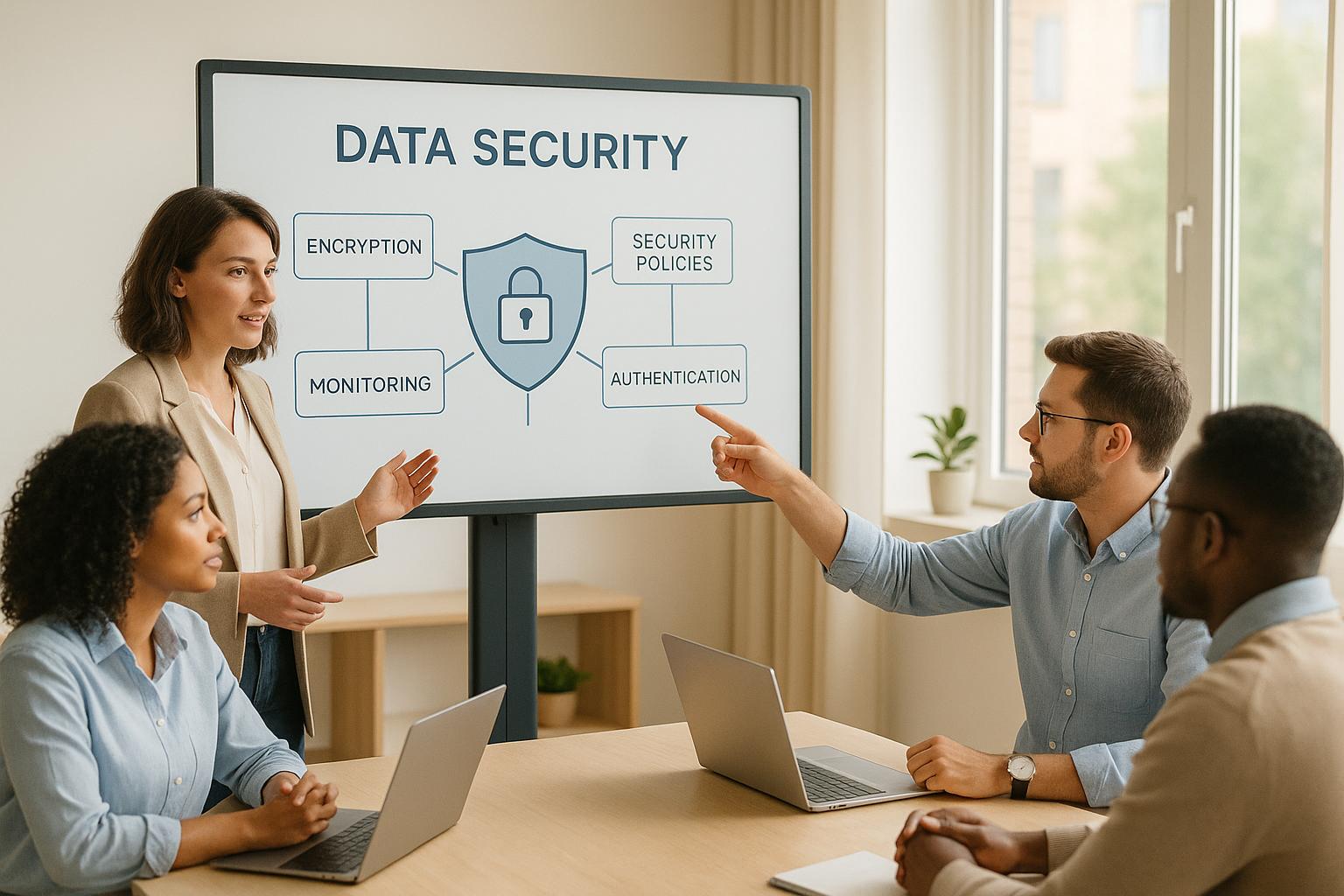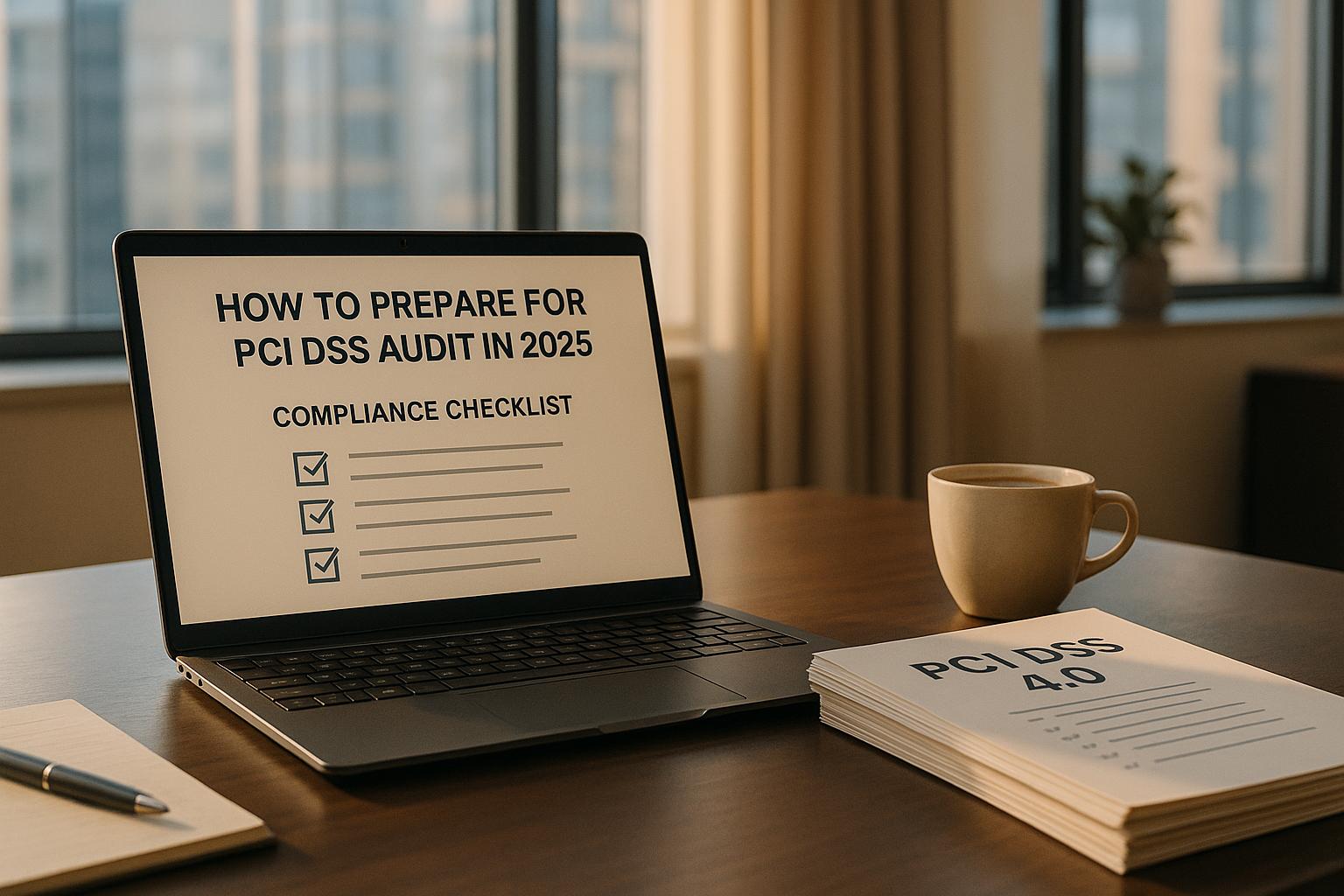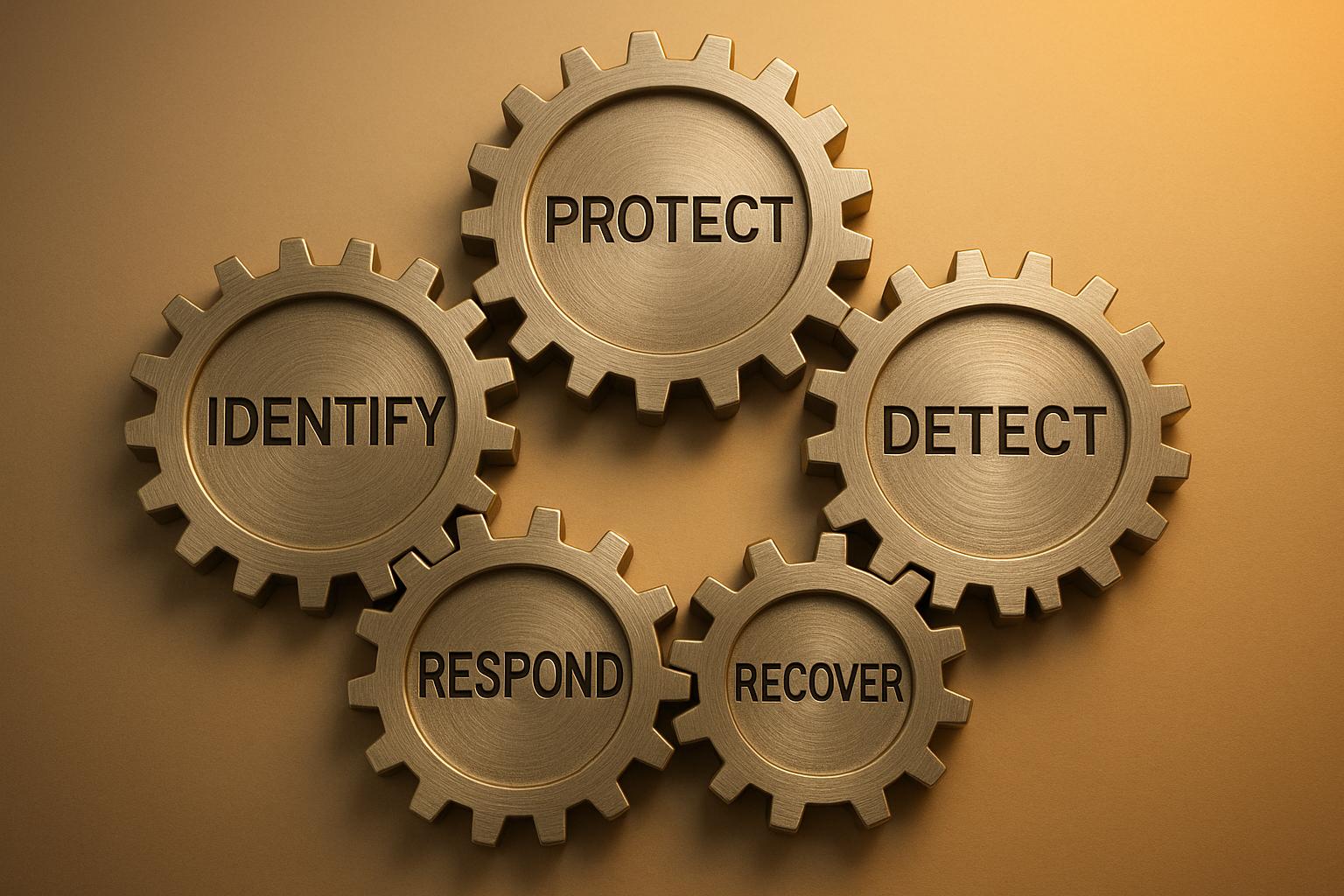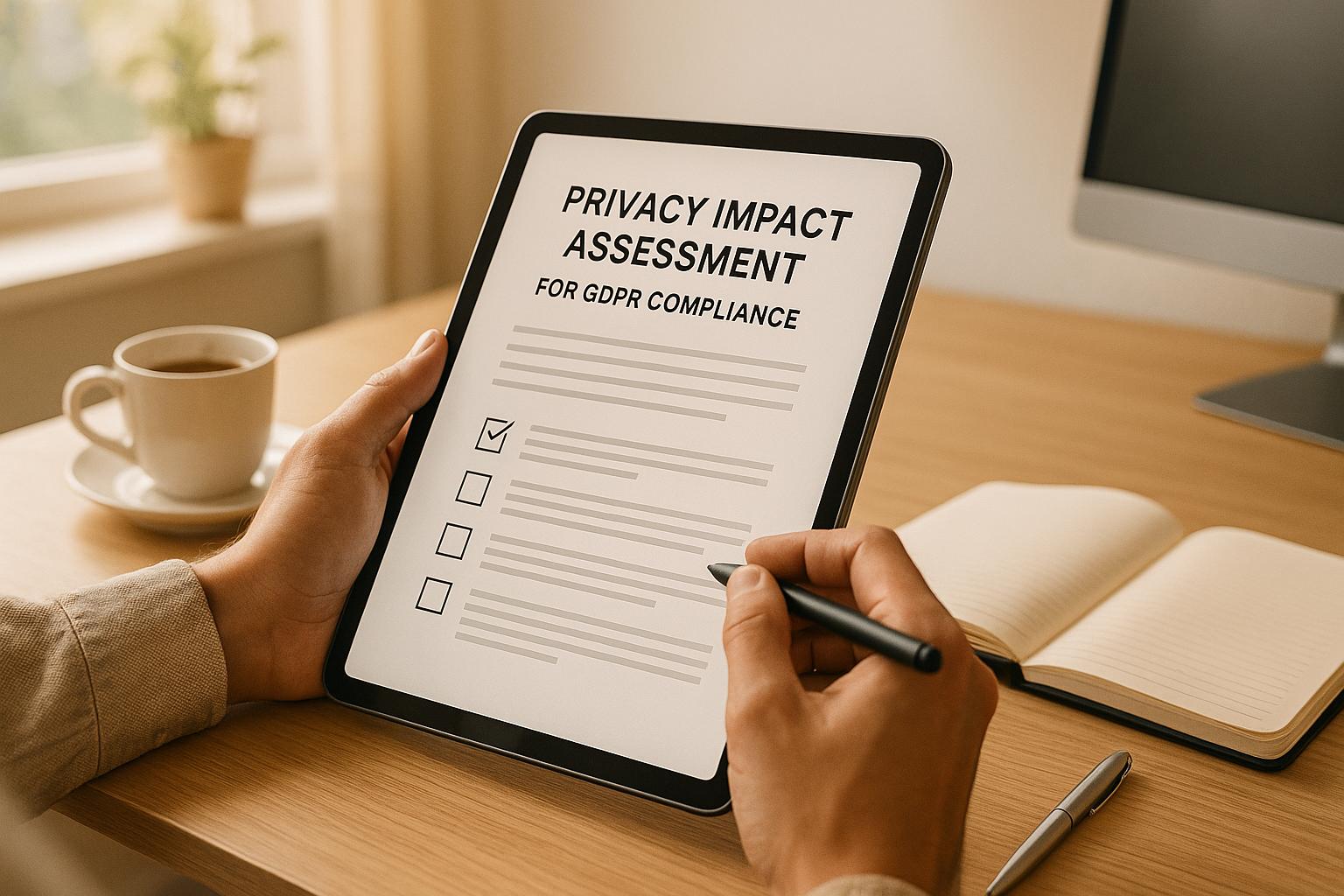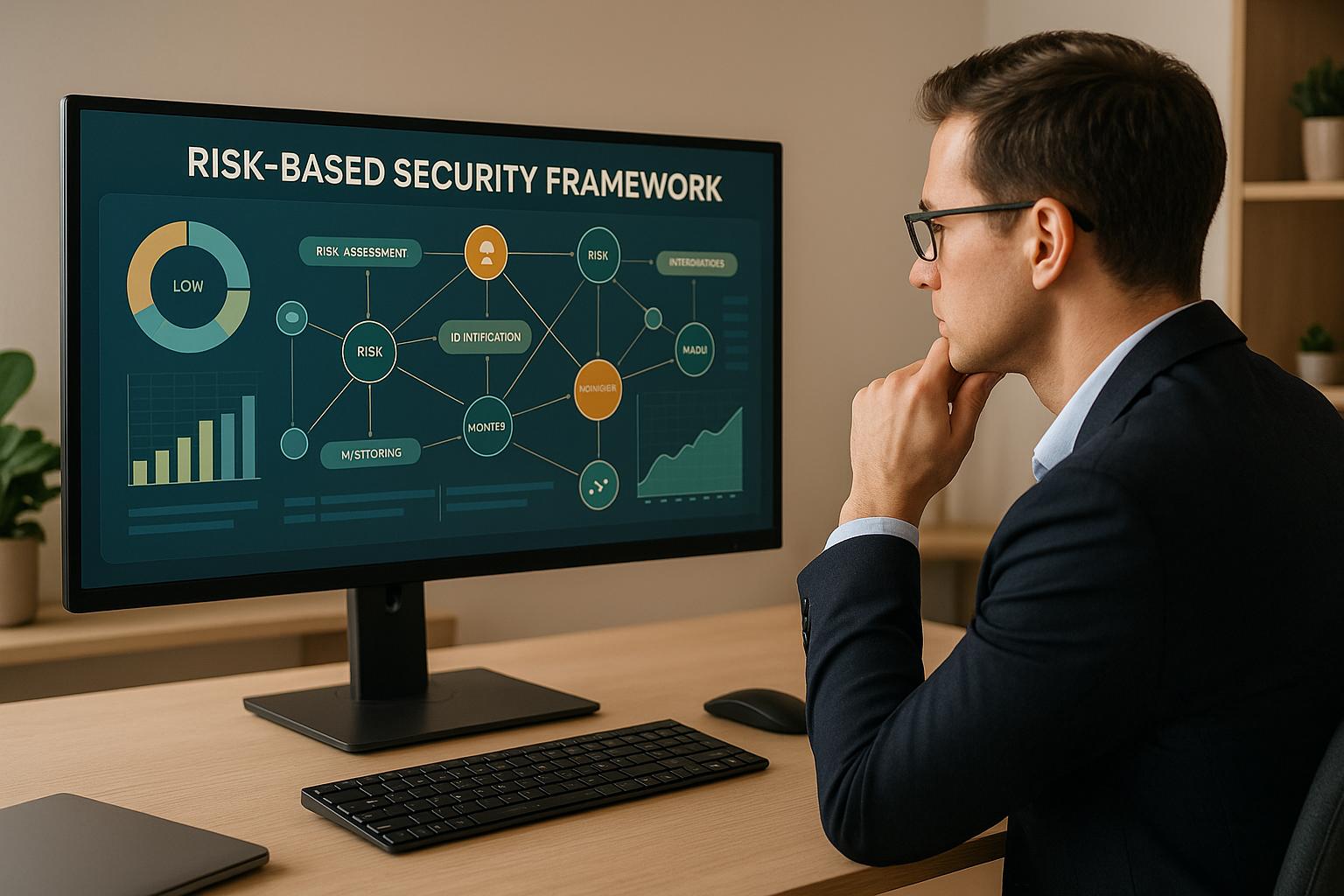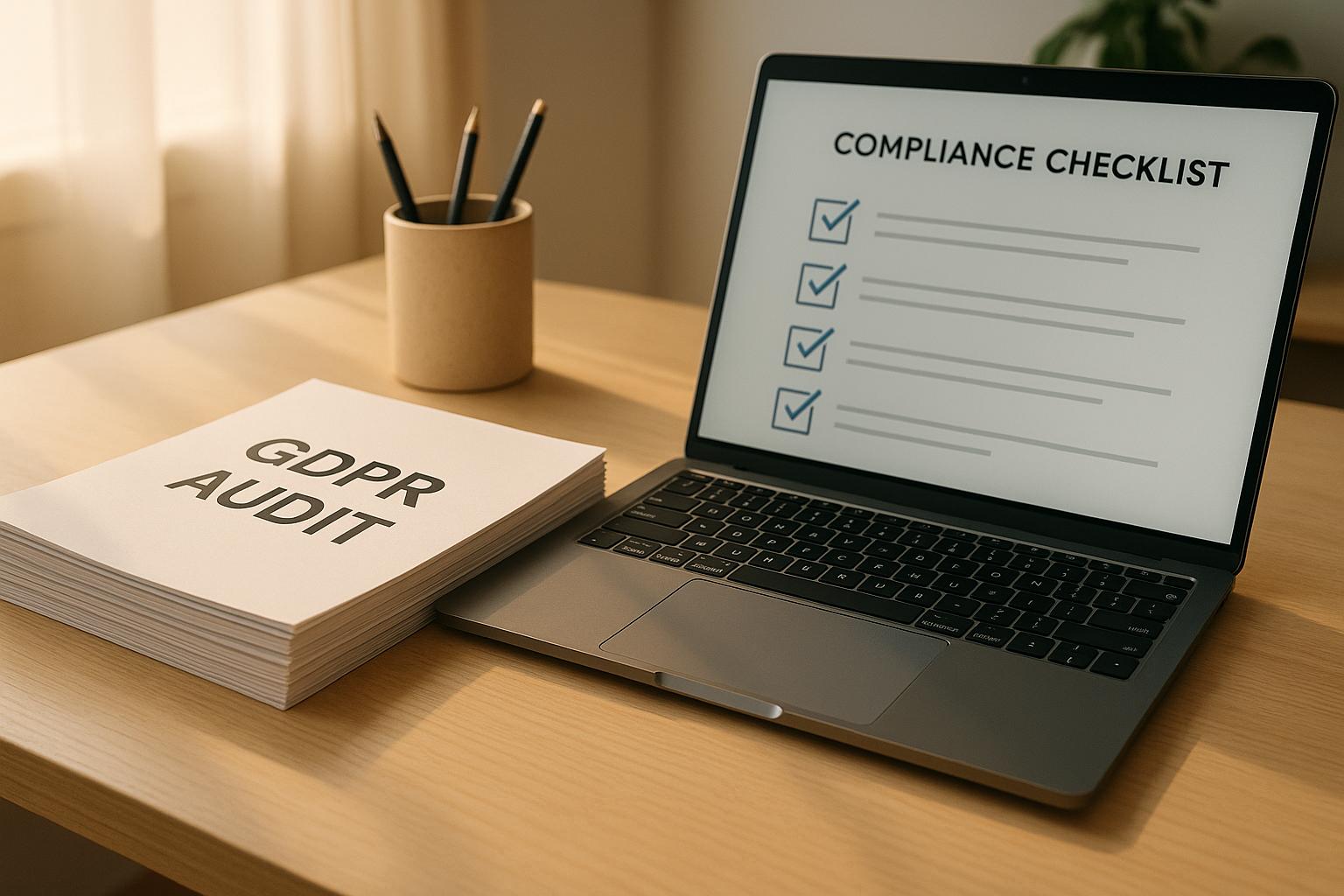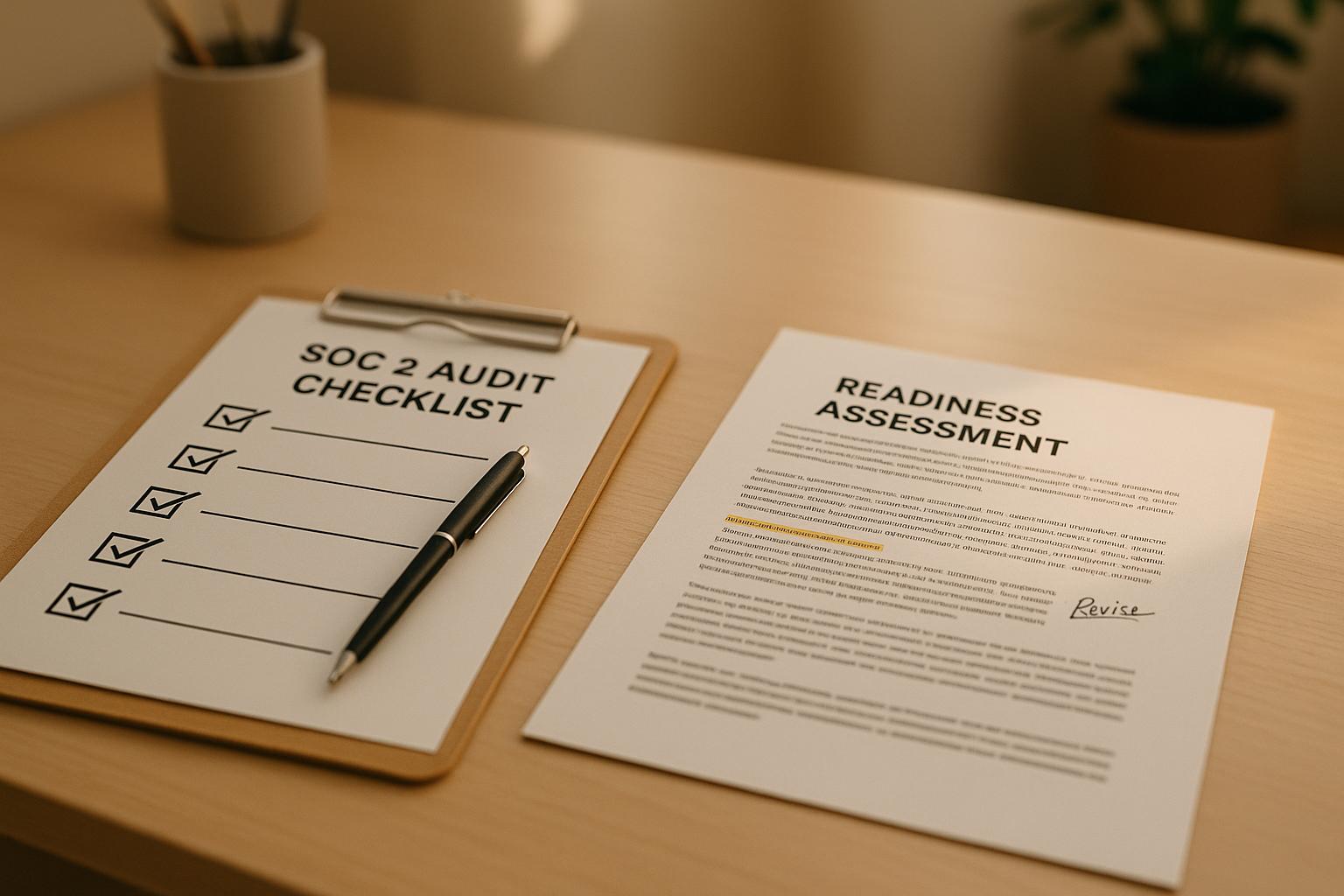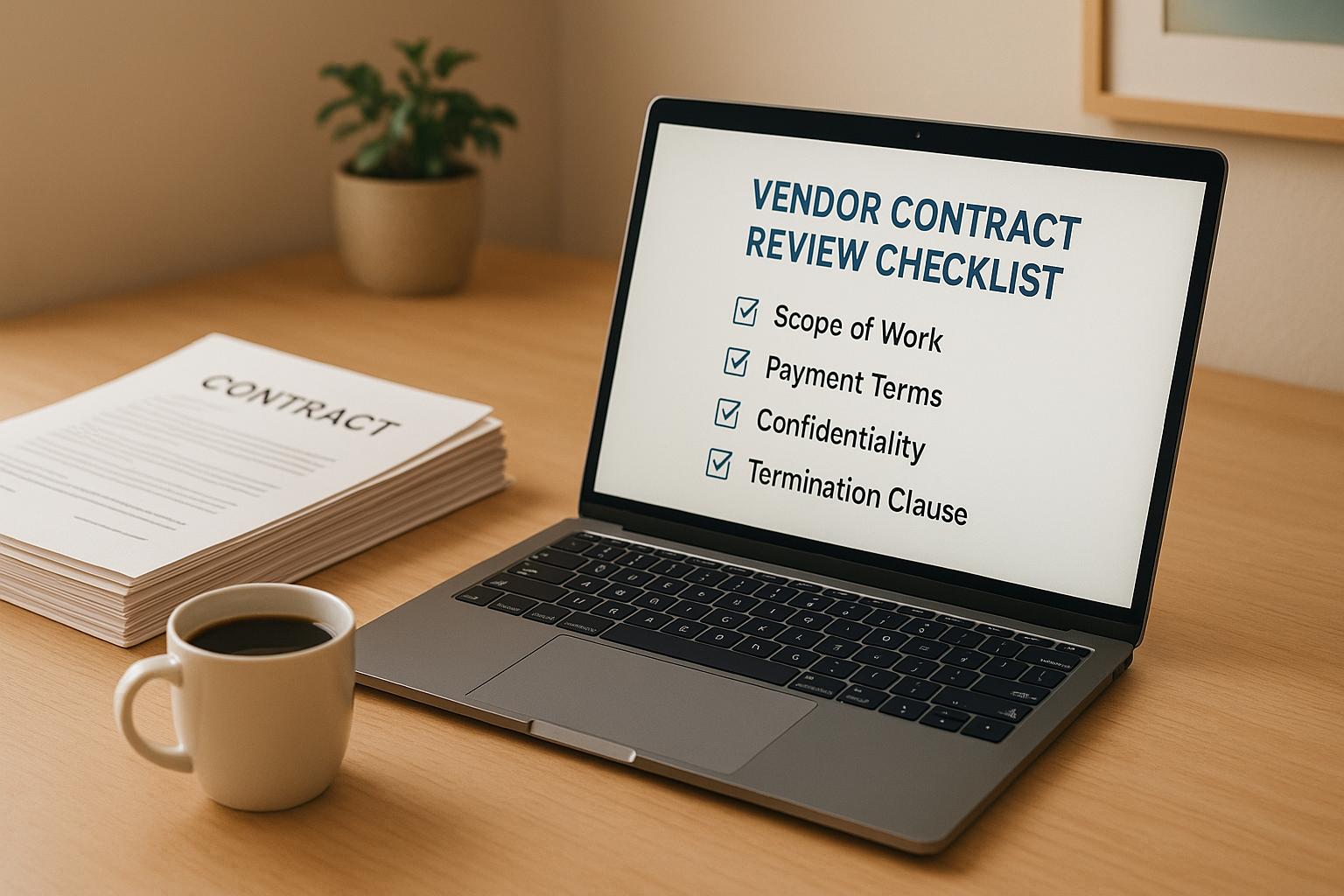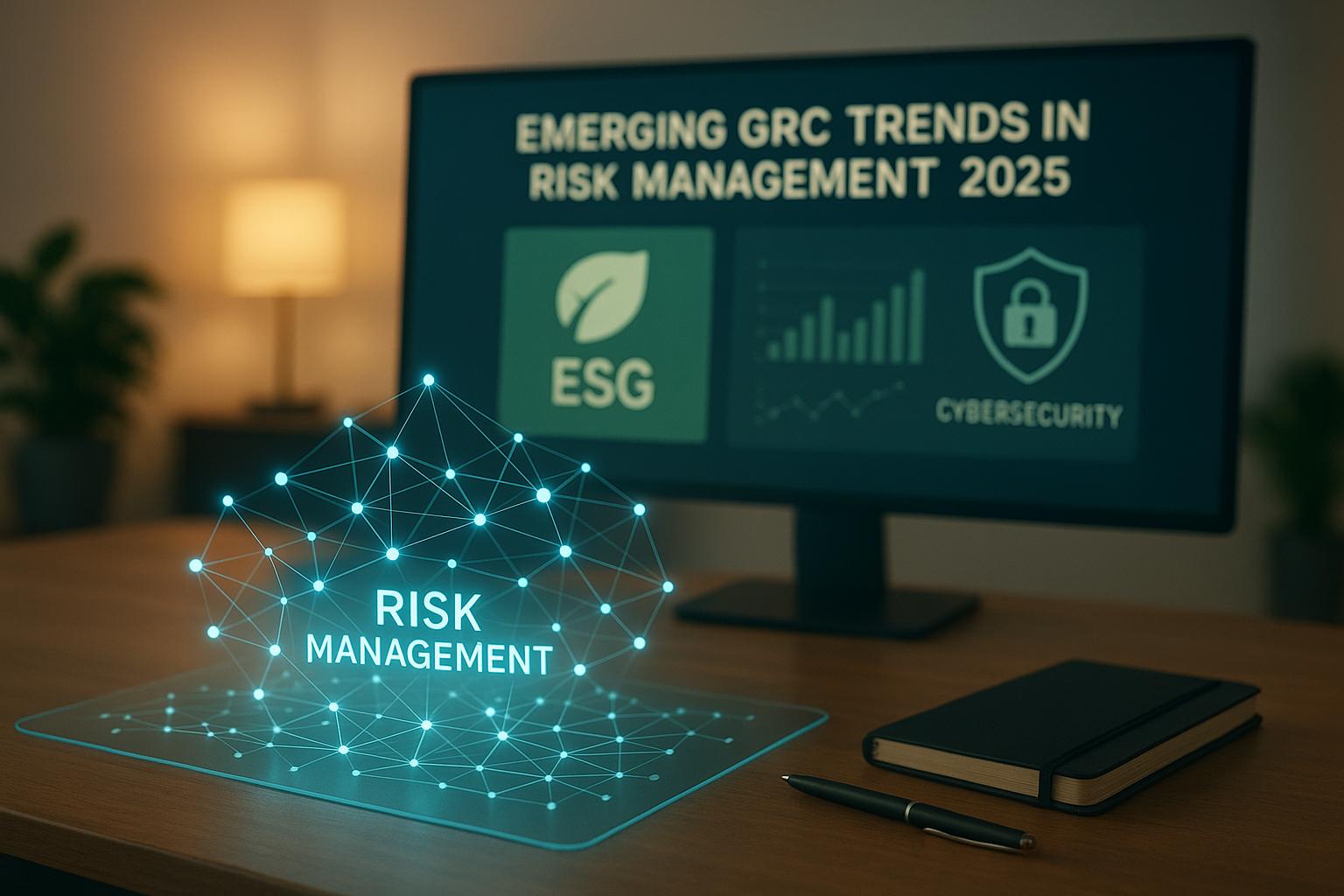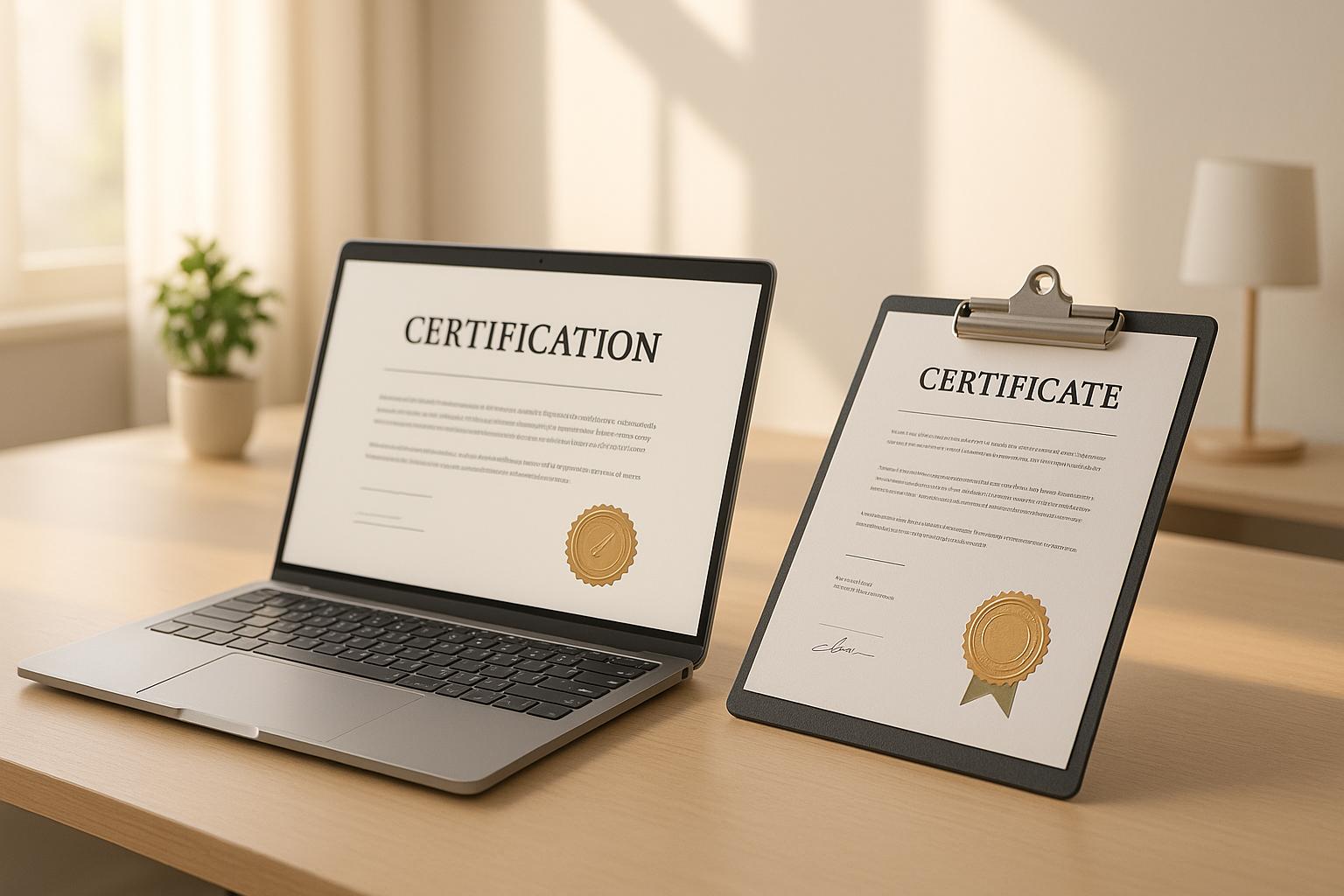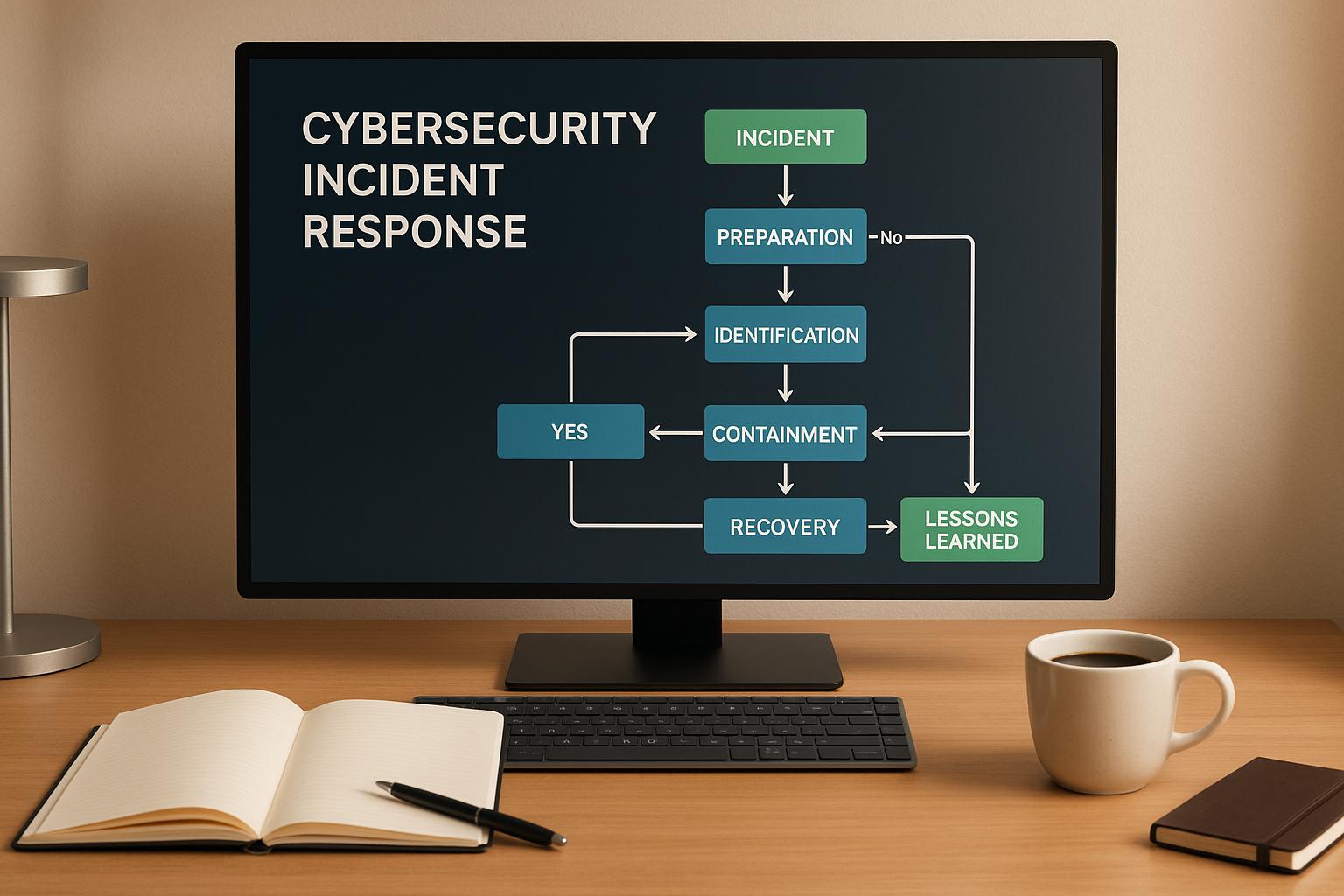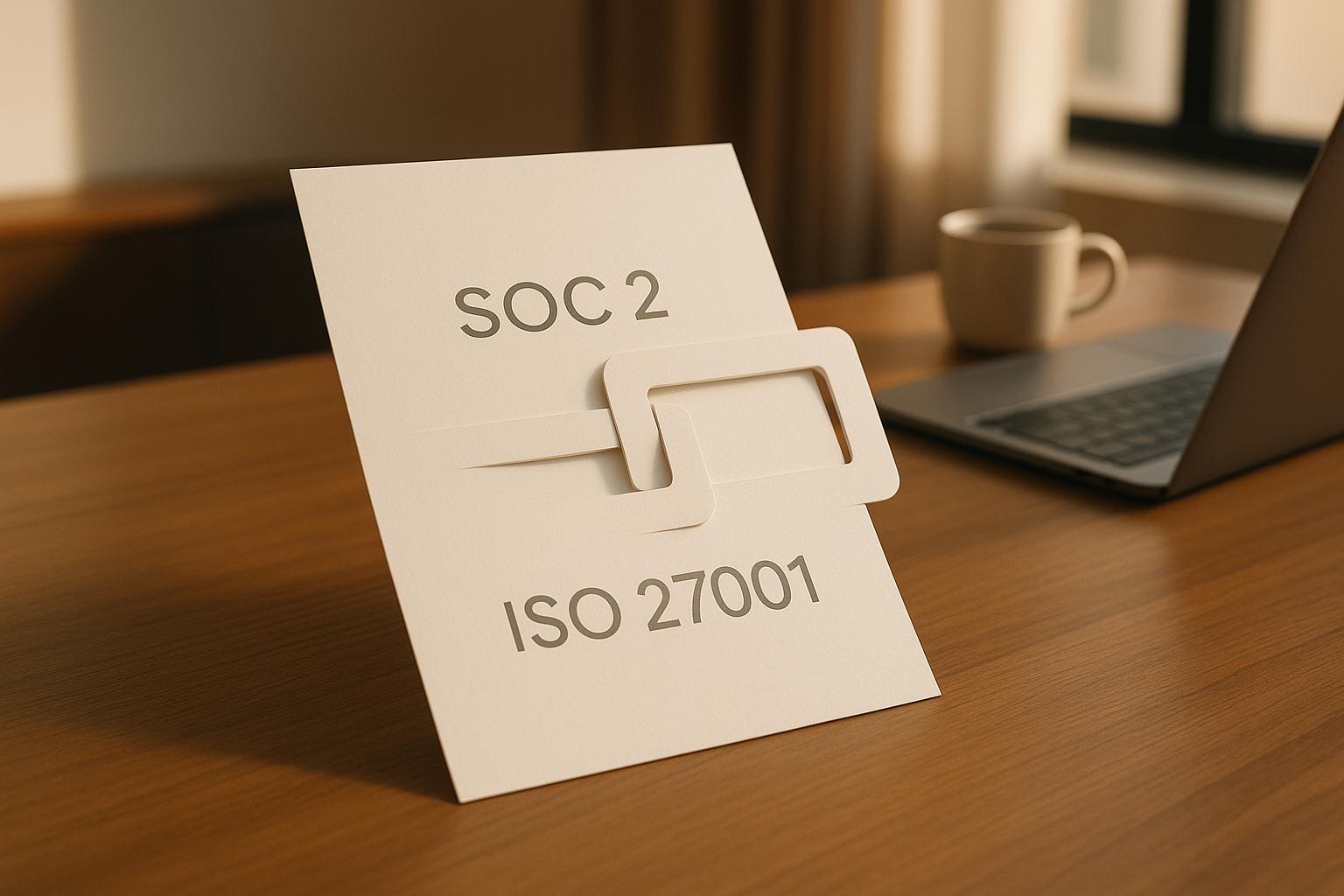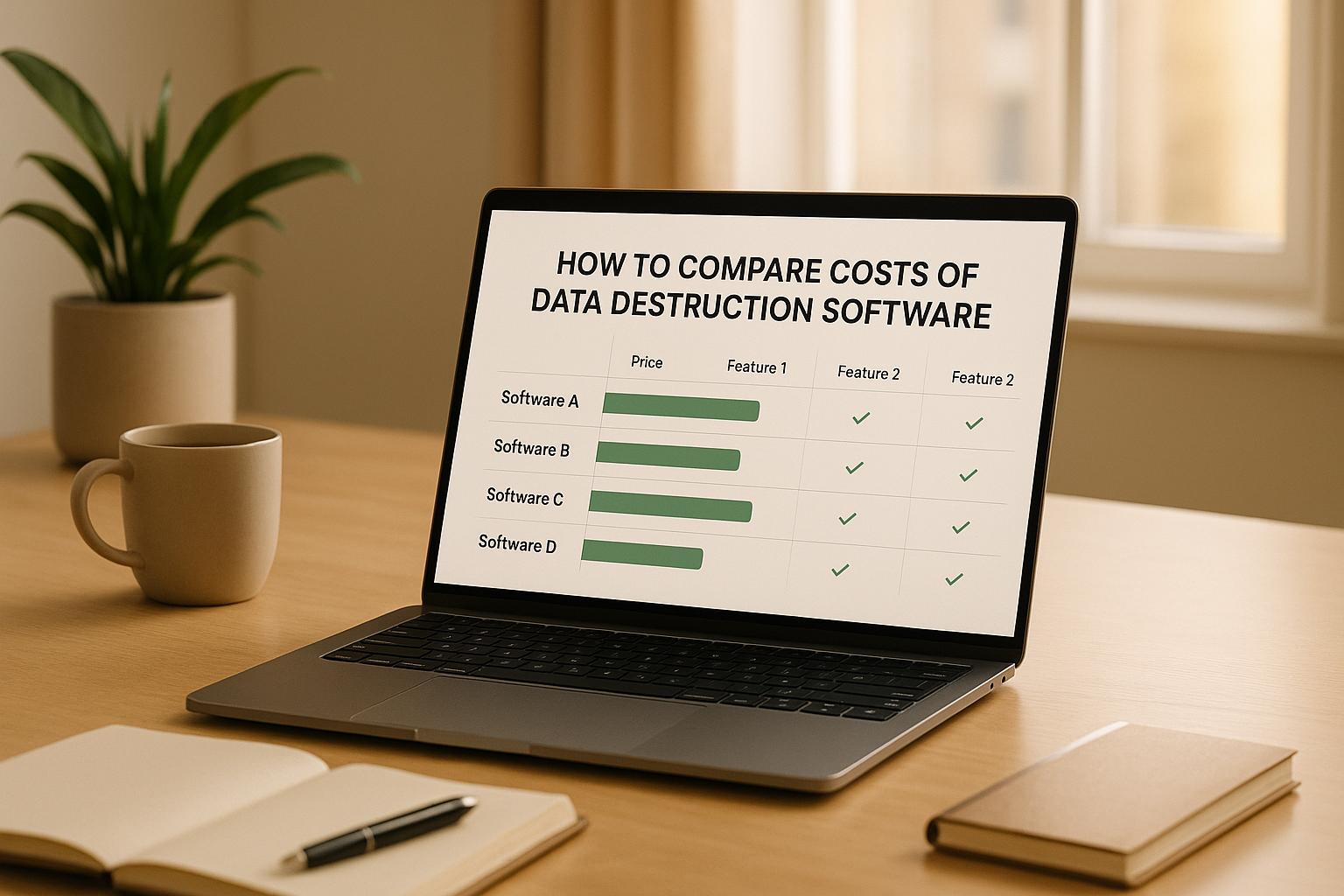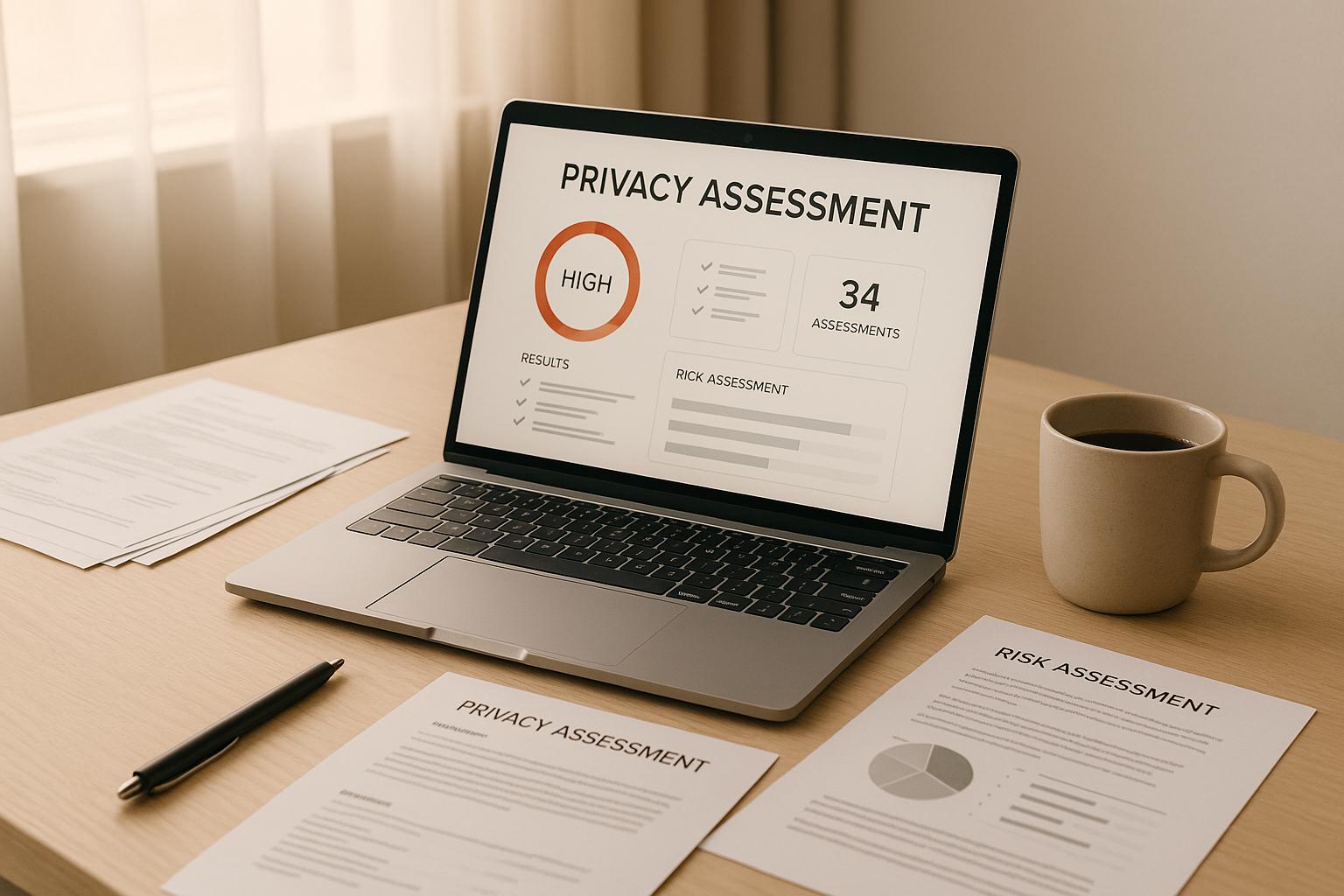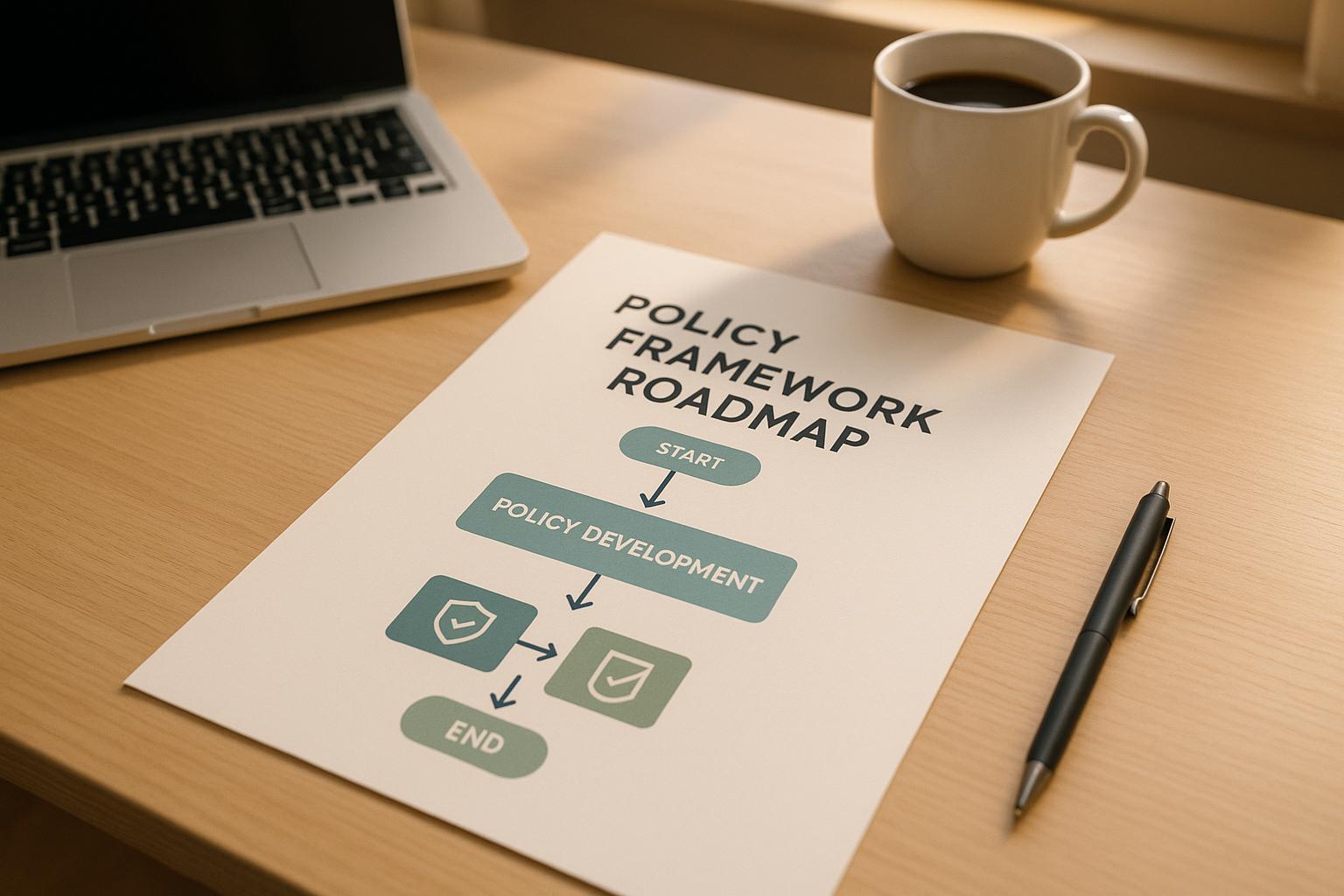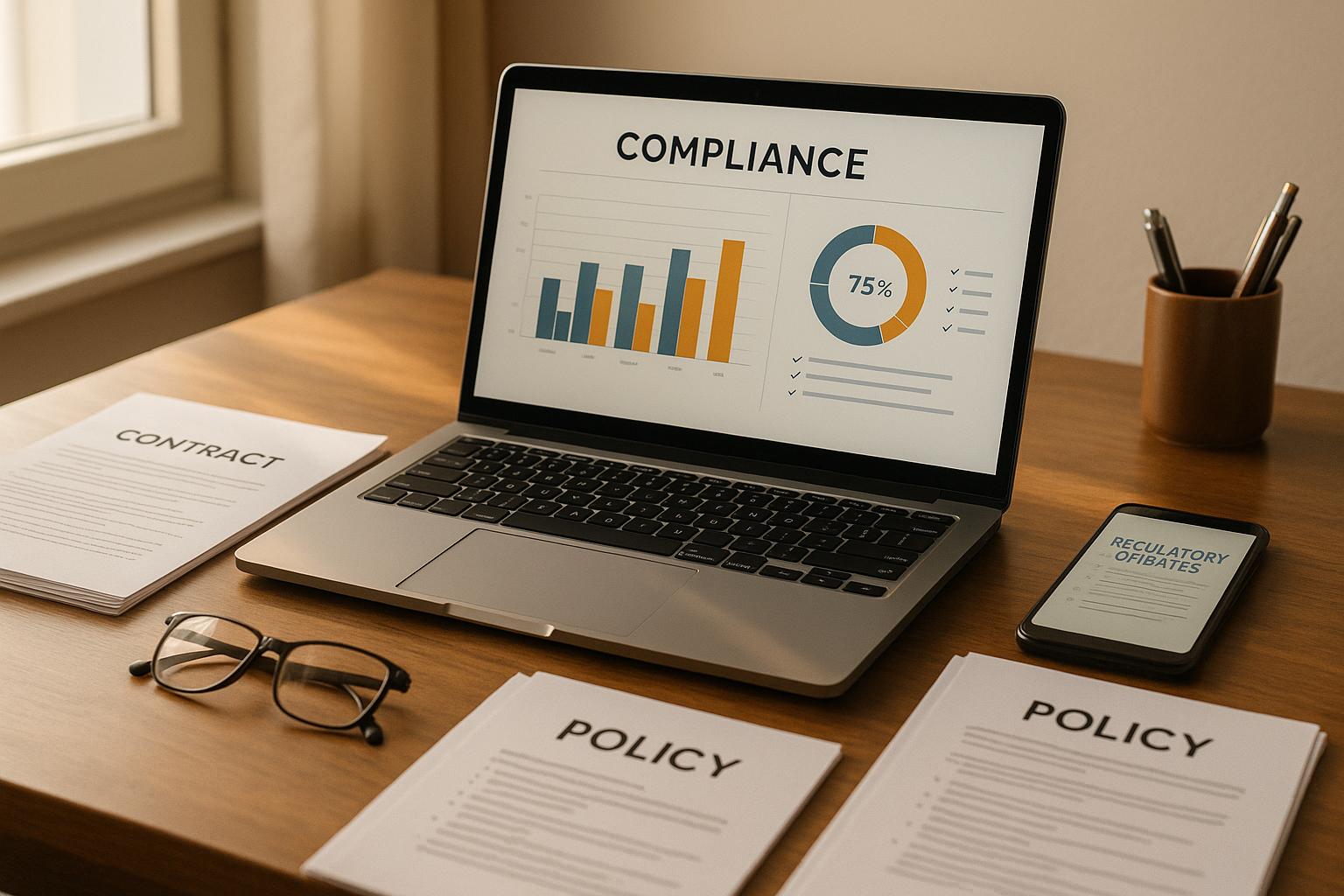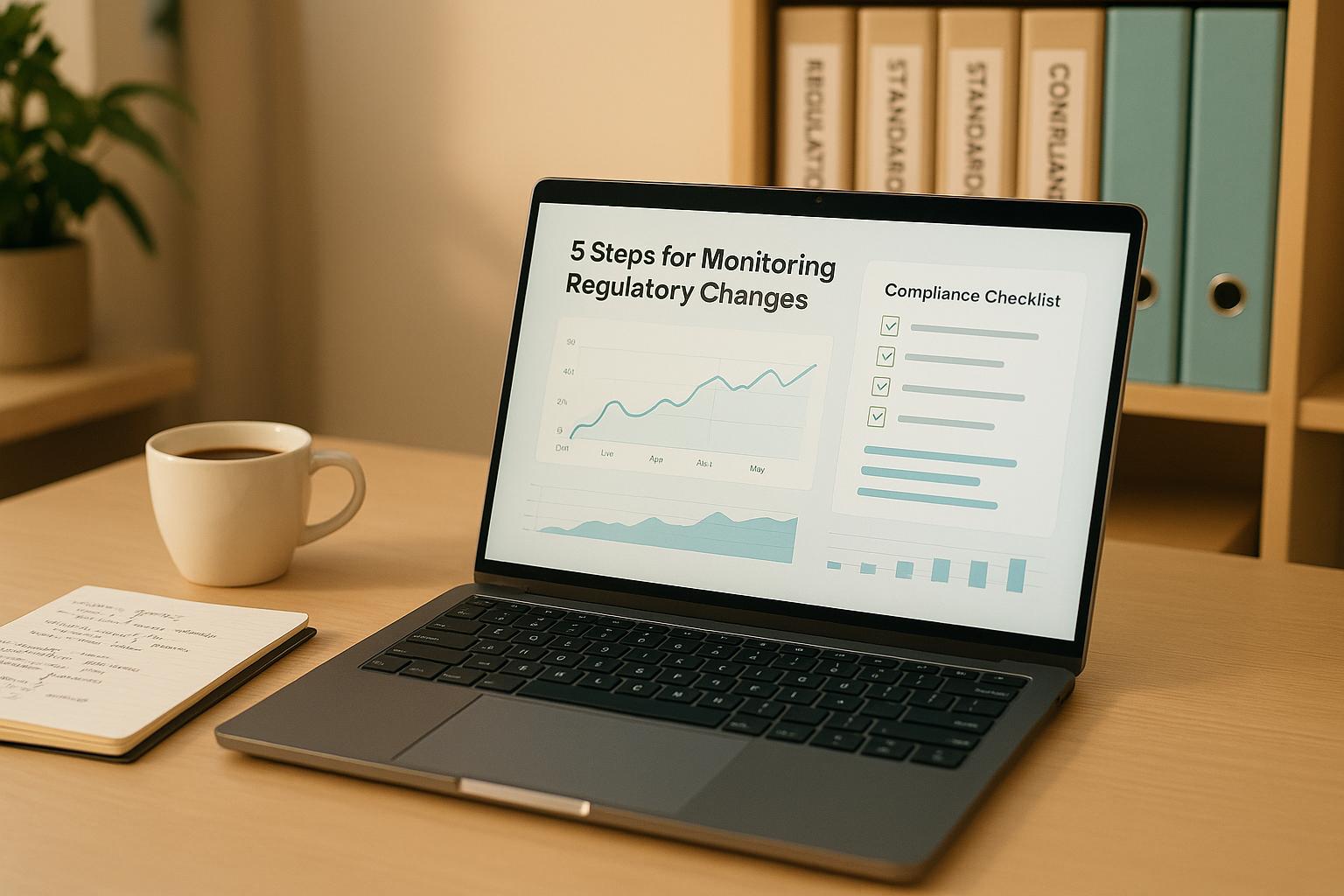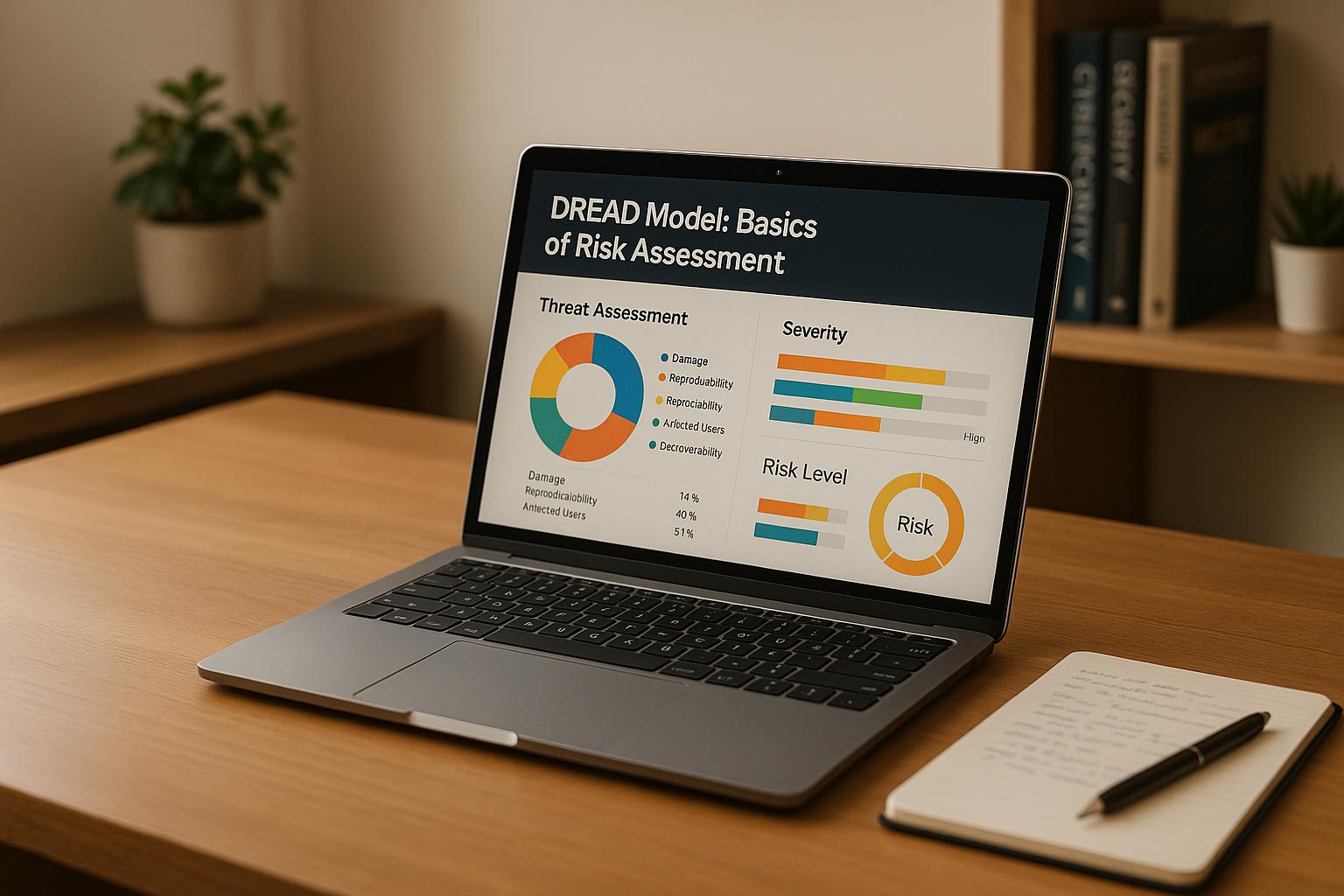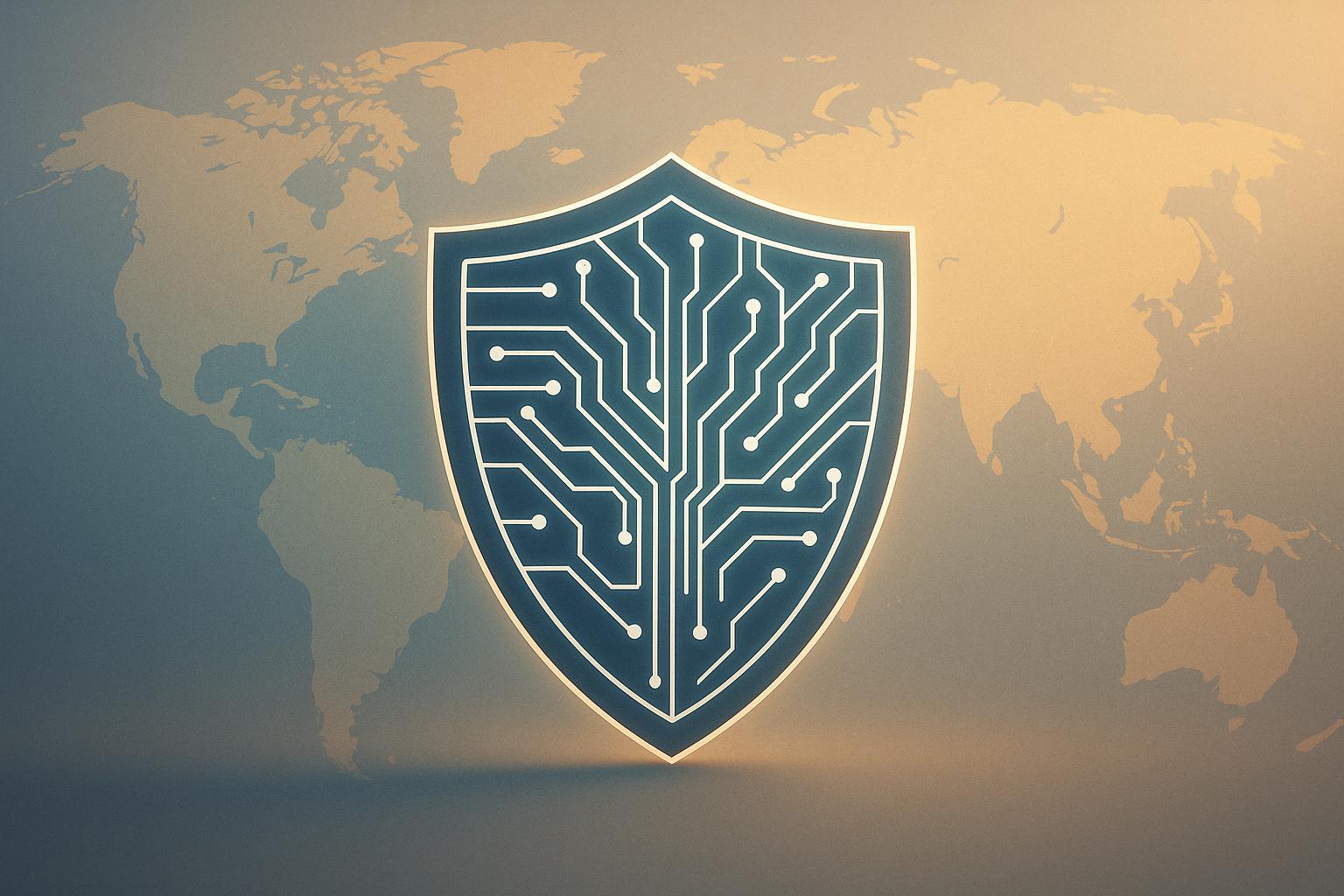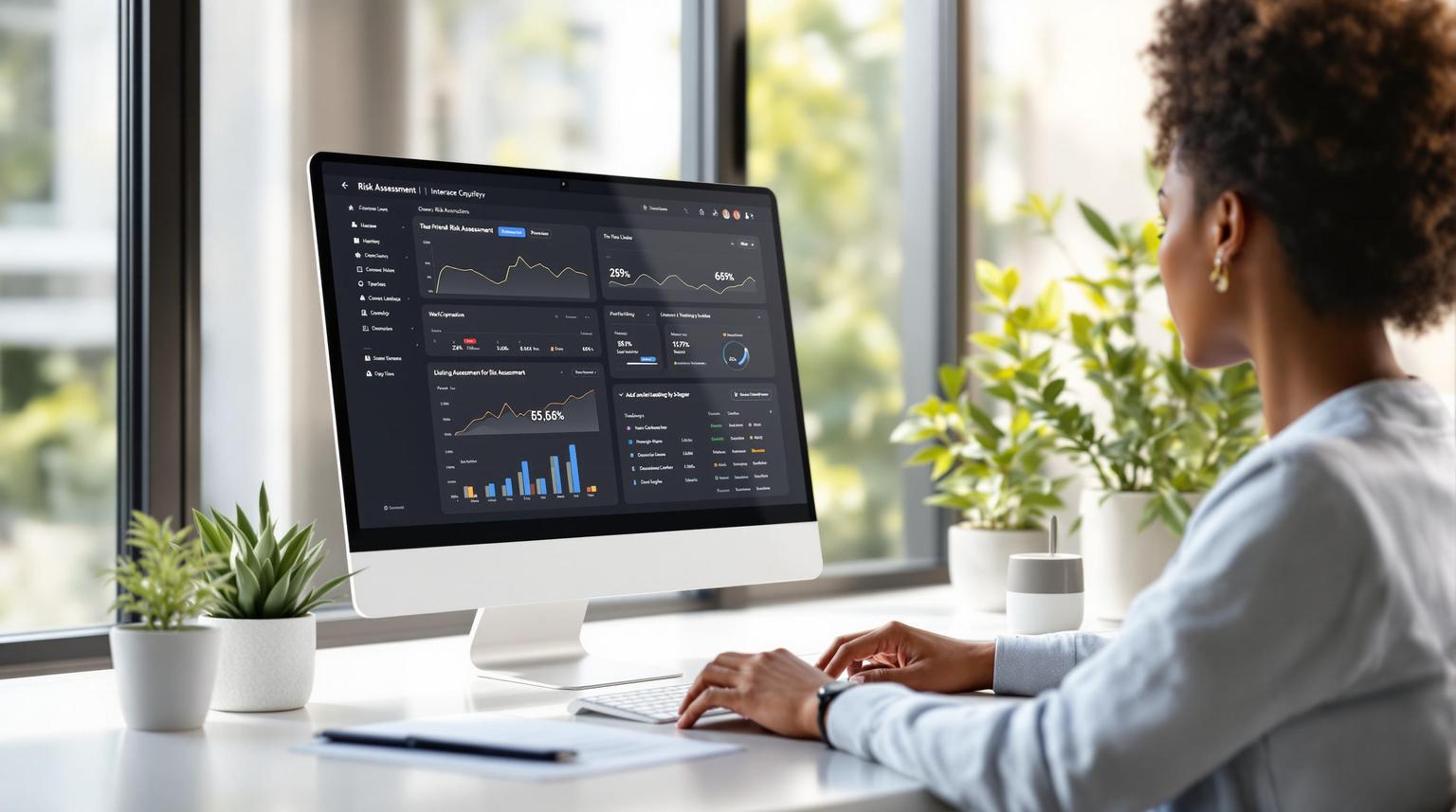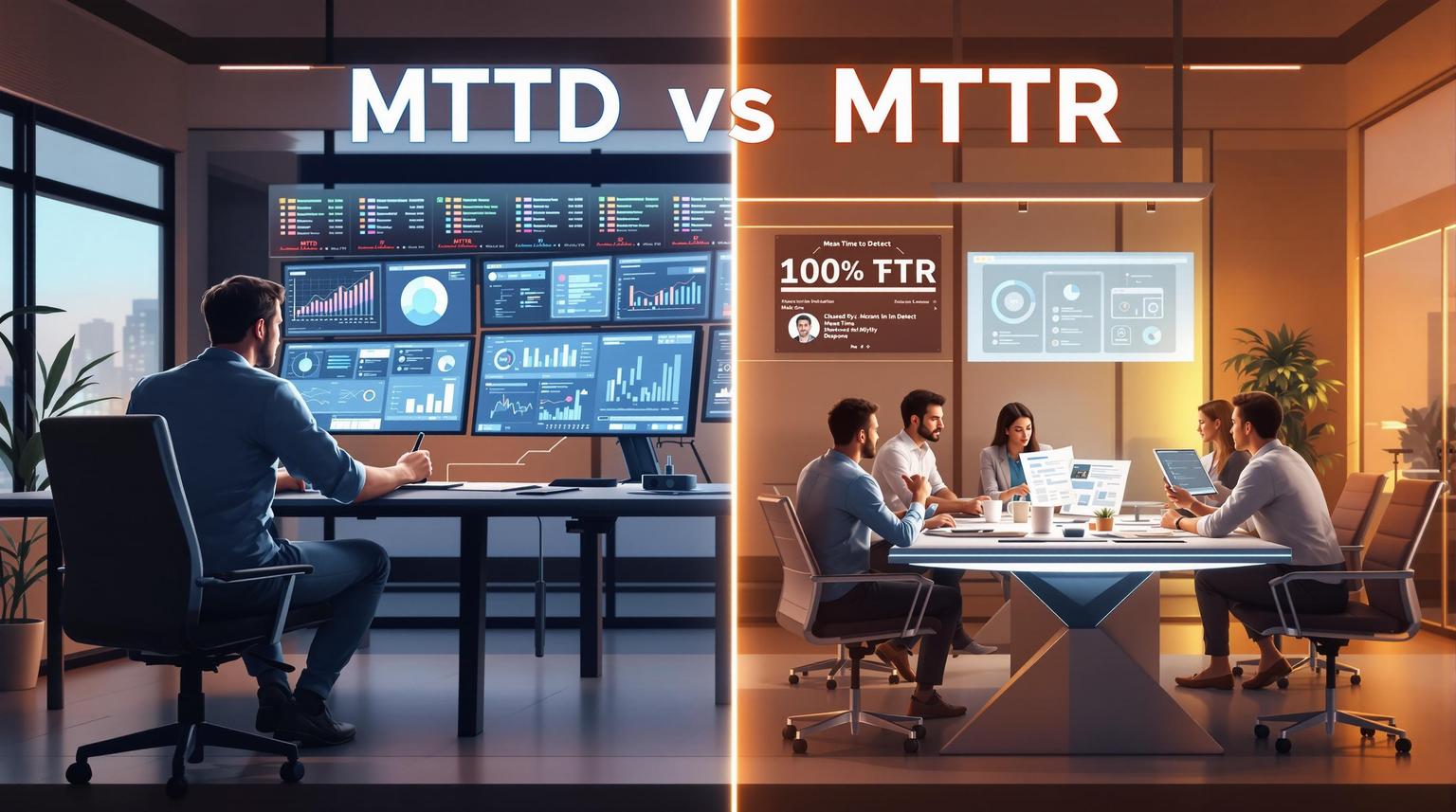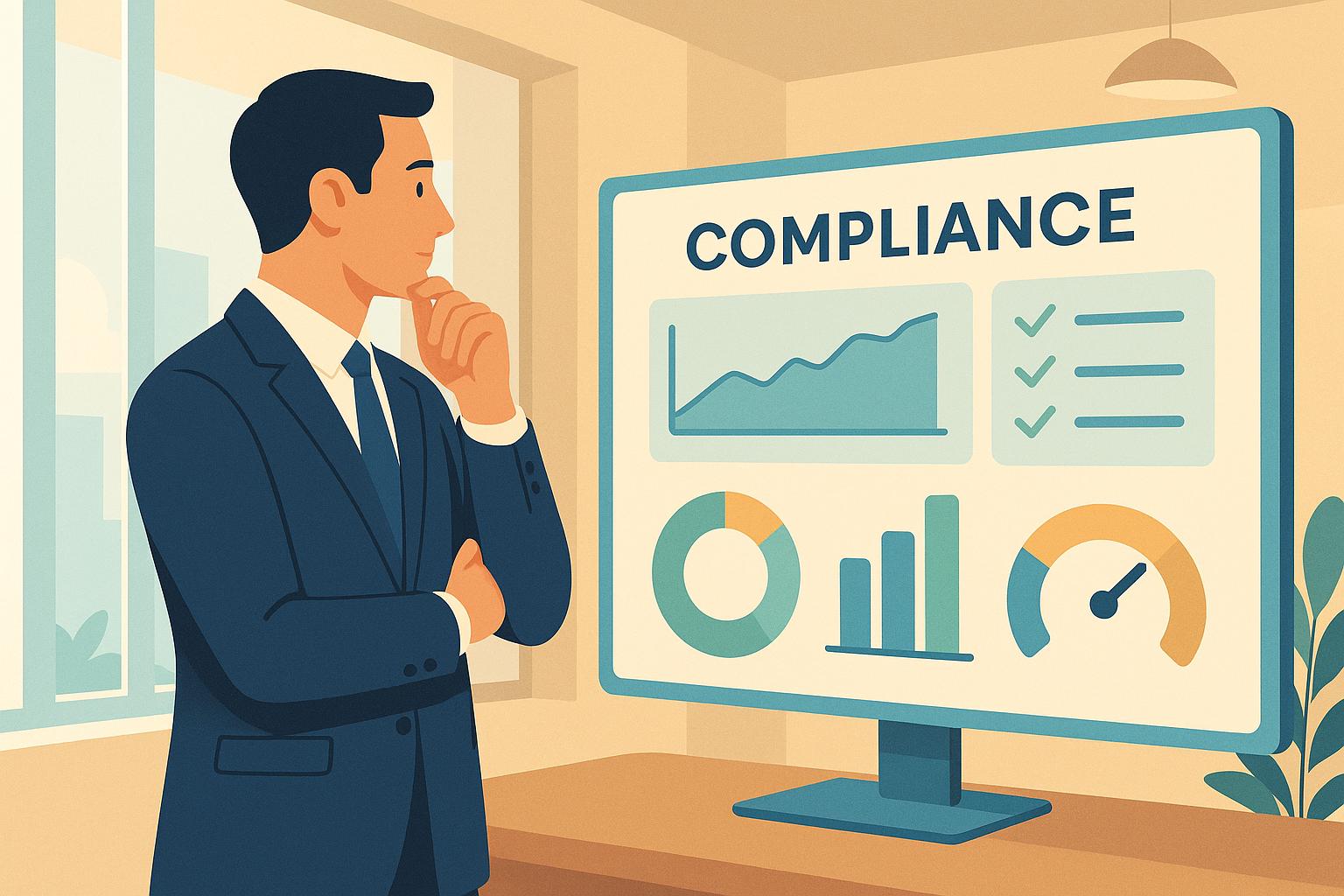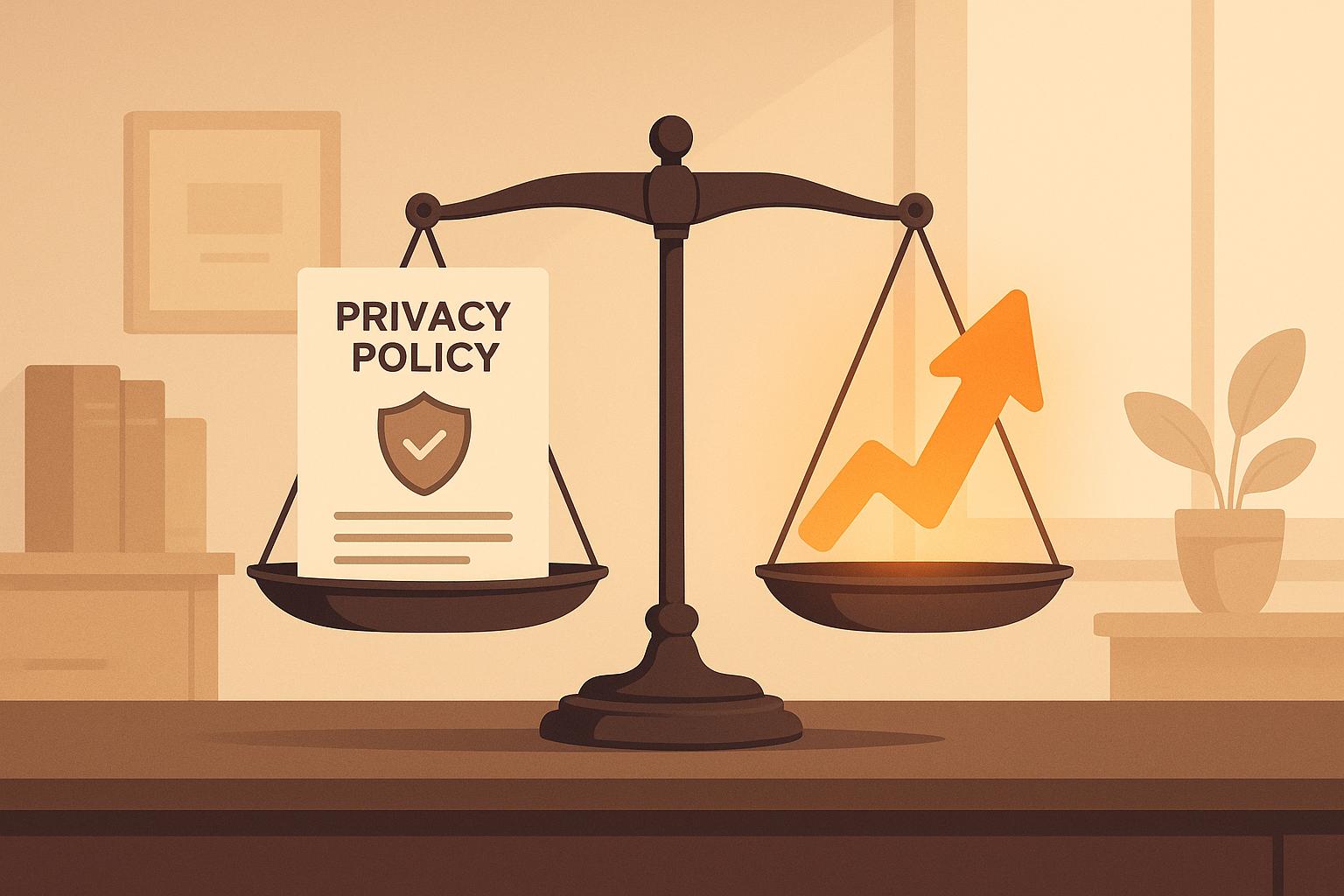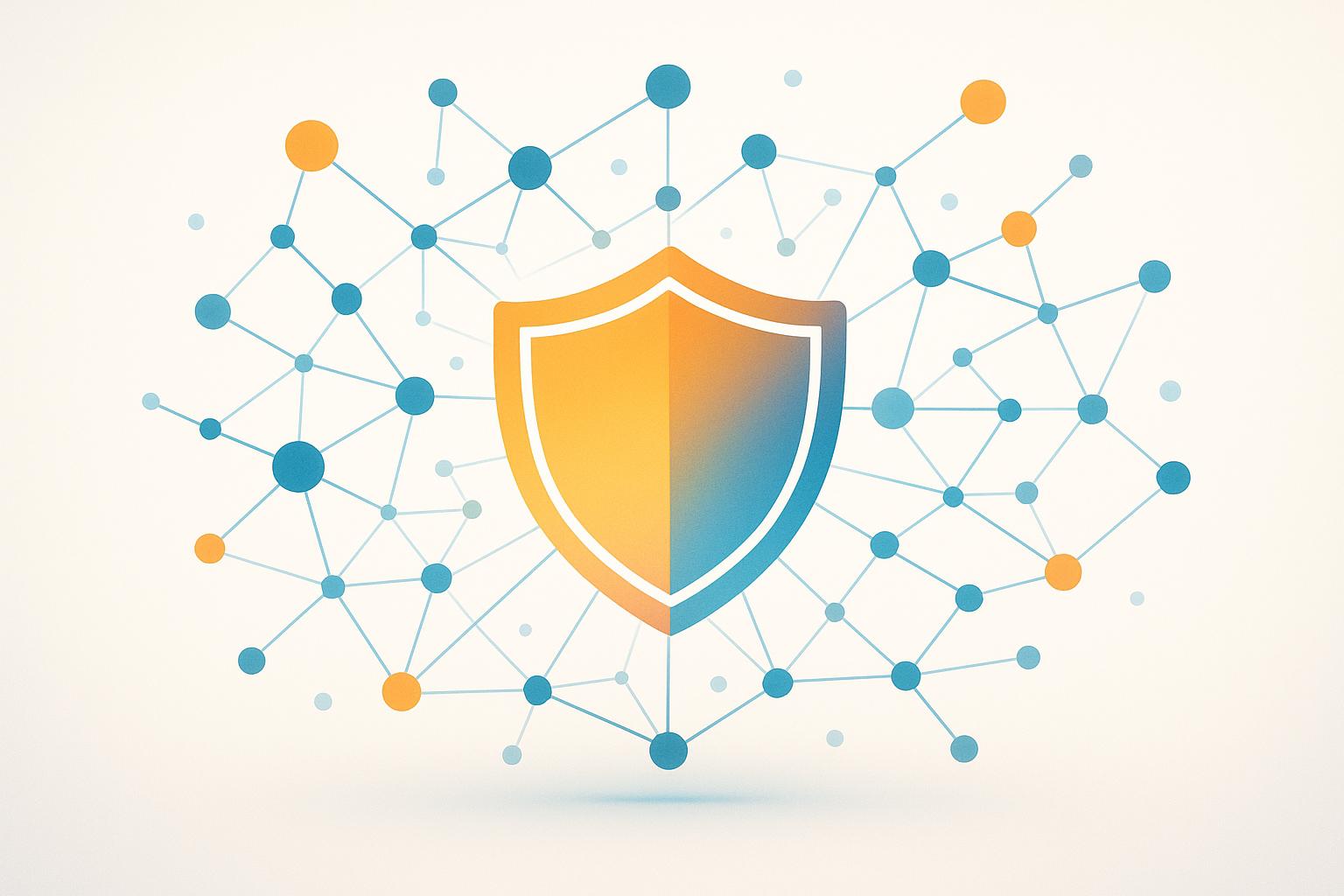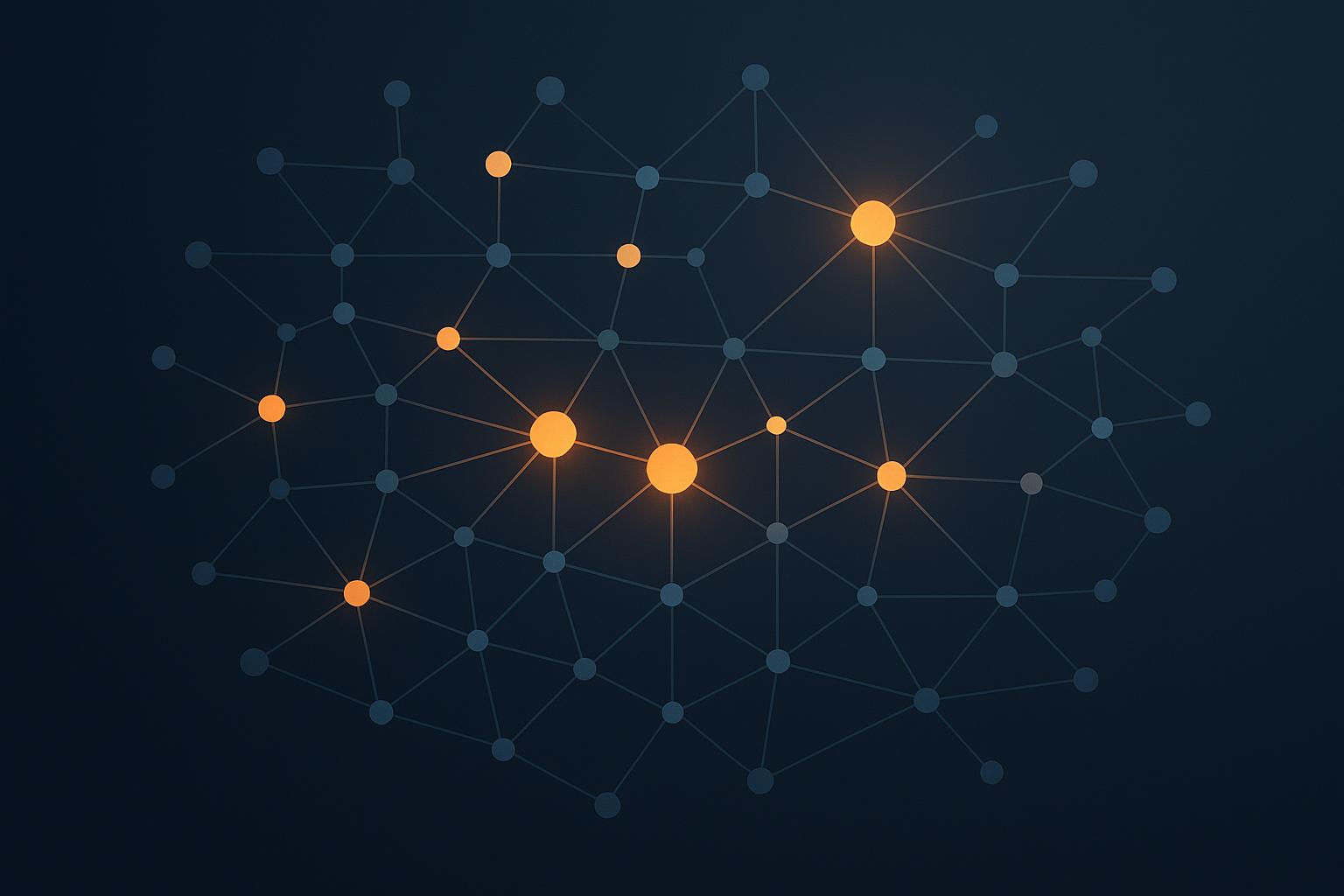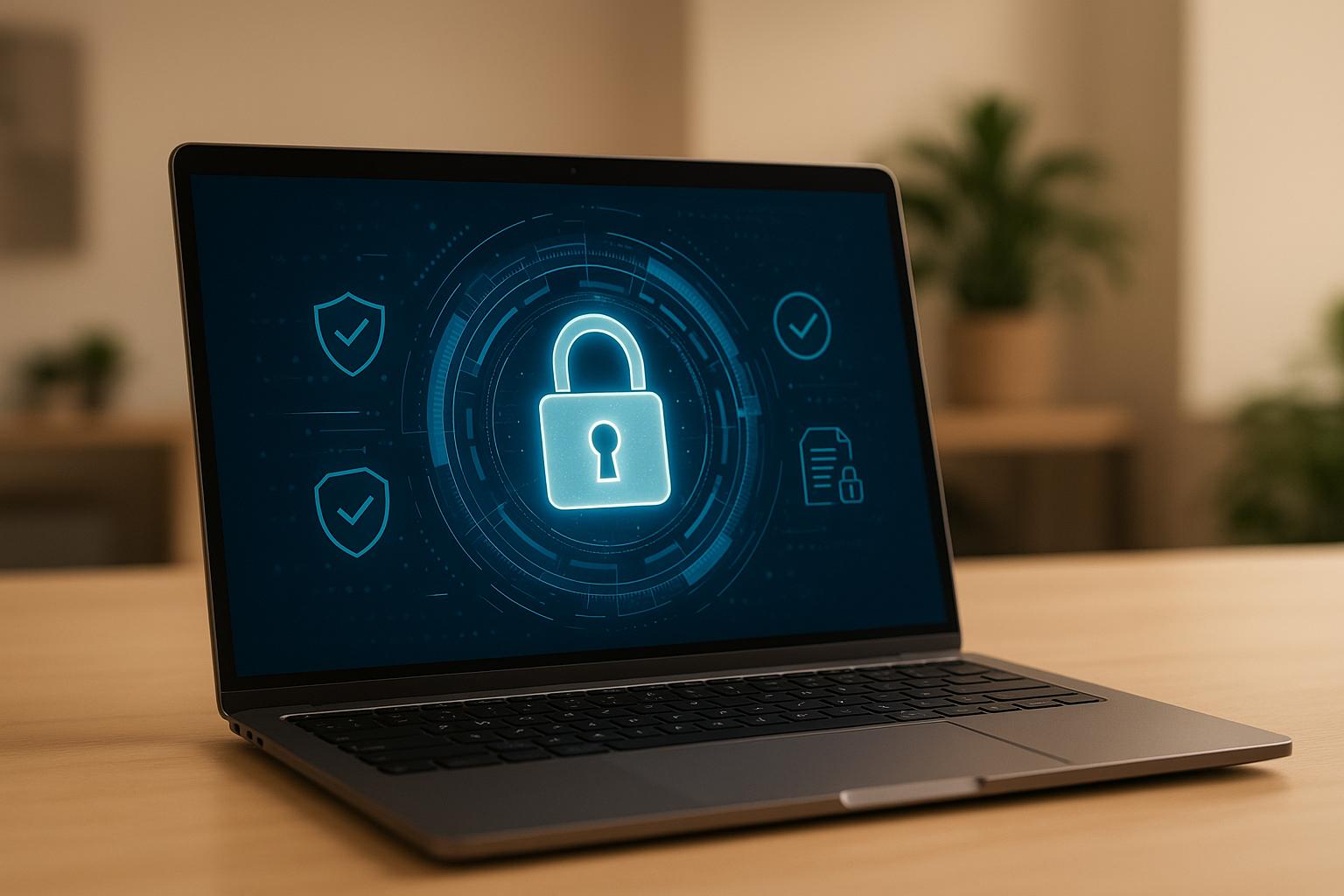
Cybersecurity compliance ensures your SaaS business meets legal and industry standards to protect sensitive data and systems. Here's why it matters and how it works:
- What It Is: Following rules like GDPR, SOC 2, or HIPAA to safeguard data and prevent breaches.
- Why It Matters: Avoid fines (e.g., GDPR fines up to €20M or 4% of revenue), protect customer trust, and reduce risks from data breaches.
- Key Frameworks:
- SOC 2: Voluntary but crucial for SaaS; focuses on security and privacy.
- GDPR: Mandatory for EU data; emphasizes privacy rights.
- HIPAA: Essential for healthcare data protection in the U.S.
- How It Helps Growth: Compliance opens doors to enterprise clients, speeds up sales, and reduces costs (compliance is 2.71x cheaper than non-compliance).
Quick Comparison of Frameworks
| Framework | Legal Requirement | Focus | Audit Process | Applies To |
|---|---|---|---|---|
| SOC 2 | Voluntary | Security & Privacy | CPA Audit | SaaS & Cloud Providers |
| GDPR | Mandatory | Data Privacy | Internal/Third-Party | EU Data Handlers |
| HIPAA | Mandatory | Healthcare Data | Self-Assessment/Gov Review | Healthcare & Associates |
SOC 2 Compliance for SaaS Companies
Key Cybersecurity Compliance Frameworks for SaaS
SaaS companies face a variety of compliance requirements, which often depend on their industry, target audience, and geographic reach. Each framework comes with its own set of rules for safeguarding data and maintaining privacy. Let’s start with SOC 2, a widely recognized standard for SaaS security.
SOC 2 for SaaS Providers
SOC 2 (Service Organization Control 2) has become a cornerstone for SaaS providers. It involves an independent CPA audit to assess adherence to five Trust Service Criteria: security, availability, processing integrity, confidentiality, and privacy. While technically voluntary, SOC 2 is almost a necessity for SaaS companies. It signals a commitment to security best practices, which is something most clients expect.
Here’s a telling statistic: 66% of B2B customers require SOC 2 compliance. Even though it’s not legally required, potential clients often demand to see your SOC 2 report. Without it, you could struggle to compete in the market.
The SOC 2 report offers a detailed look into your security measures, giving clients confidence in how you handle their data. It’s not just a certificate - it’s a trust-builder.
GDPR and Data Privacy
The General Data Protection Regulation (GDPR) reshaped how companies worldwide handle personal data. If your SaaS platform processes personal data belonging to individuals in the EU, GDPR compliance isn’t optional - it’s legally required. This applies regardless of where your company is based, making it a global concern for SaaS providers.
GDPR is all about empowering individuals to have control over their data. Key principles include data minimization, purpose limitation, and the right to be forgotten. For SaaS companies, compliance means adopting measures like privacy by design, conducting data protection impact assessments, and ensuring there’s a lawful basis for processing data.
Even if your SaaS company operates outside of Europe, GDPR applies if you serve EU users. This includes implementing safeguards for EU data transfers and maintaining detailed records of data processing activities.
The financial penalties for non-compliance are steep. Violations can result in fines of up to €20 million or 4% of global annual revenue, whichever is higher. While GDPR doesn’t have a formal certification process, many companies perform internal or third-party audits to ensure compliance. Compared to SOC 2, GDPR’s regulatory demands and potential penalties make it far more stringent.
When it comes to handling healthcare data, however, another framework - HIPAA - takes center stage.
HIPAA for SaaS in Healthcare
The Health Insurance Portability and Accountability Act (HIPAA) lays out strict requirements for protecting sensitive patient information. For SaaS providers working with healthcare clients, HIPAA compliance becomes crucial when dealing with electronic Protected Health Information (ePHI).
HIPAA applies to two groups: covered entities (like hospitals and clinics) and business associates (such as IT vendors and third-party administrators that handle ePHI). If your SaaS platform processes healthcare data, you likely fall into the latter category and must meet HIPAA standards.
The healthcare industry is particularly vulnerable to breaches. In fact, 34% of breaches in this sector involve compromised credentials, with SaaS accounts often serving as entry points. This highlights the importance of robust security measures under HIPAA.
Compliance involves implementing administrative, physical, and technical safeguards, such as access controls, encryption, audit logs, and regular security assessments. Additionally, SaaS providers must sign Business Associate Agreements (BAAs) with healthcare organizations to clearly define responsibilities for protecting ePHI. For SaaS platforms in healthcare, HIPAA compliance isn’t optional - it’s essential.
Below is a quick comparison of these frameworks:
| Framework | Legal Requirement | Primary Focus | Audit Process | Target Organizations |
|---|---|---|---|---|
| SOC 2 | Voluntary (market-driven) | Data handling through Trust Service Criteria | Independent CPA firm audit | SaaS companies, cloud service providers, financial services |
| GDPR | Legally mandatory | Individual privacy rights and data protection | Internal/third-party audits (optional) | Any organization handling EU personal data |
| HIPAA | Legally mandatory | Healthcare information protection | Self-assessment with potential government review | Healthcare entities and their business associates |
Each framework has its own scope and purpose, requiring dedicated strategies for compliance. For instance, achieving SOC 2 compliance doesn’t mean you automatically meet GDPR standards. Understanding these differences is key to aligning your compliance efforts with your business needs.
Steps to Achieve and Maintain Compliance
Creating a compliant SaaS business involves three key phases. With 58% of organizations reporting a SaaS security incident in the past year, following these steps helps establish a solid compliance framework.
Identify Relevant Frameworks and Regulations
Start by figuring out which compliance standards apply to your business. This depends on your industry, customer base, and where you operate. For instance, if you work with healthcare clients, you’ll need to meet HIPAA standards. If you handle personal data from the EU, GDPR compliance is a must. Many B2B SaaS companies also focus on SOC 2 to build credibility with enterprise customers.
Map out your data flows and understand any regional data residency requirements. It’s also a good idea to anticipate your customers’ certification needs, so you’re prepared for important sales discussions.
Implement Technical and Administrative Controls
Once you know your compliance requirements, it’s time to put safeguards in place. These include both technical measures - like encryption, authentication, and access management - and administrative actions such as employee training and incident response plans.
Securing identities is a major piece of the puzzle. Use multi-factor authentication (MFA) and role-based access control (RBAC), especially since 60% of organizations struggle with enforcing identity security policies.
Data protection is at the heart of most compliance standards. Encrypt your data both at rest and in transit using industry-standard protocols. For added security, consider adopting Zero Trust Architecture principles - this means verifying every user and device, granting the least privilege access necessary, and continuously monitoring activity.
In addition, develop clear policies and procedures that outline how your team handles data, responds to security incidents, and maintains overall security practices. Regular cybersecurity training ensures employees understand their role in keeping the organization compliant.
The stakes are high - data breaches come with a hefty price tag, averaging $4.88 million in 2024. Investing in these safeguards isn’t just about meeting regulations; it’s also a smart financial move.
Conduct Regular Audits and Assessments
After implementing controls, you need to ensure they’re working as intended. Regular audits and assessments help catch issues early and provide the documentation needed for certifications.
Plan for quarterly internal audits to review your compliance status. For frameworks like SOC 2 or ISO 27001, schedule annual third-party assessments to get an independent evaluation of your controls.
Continuous monitoring is also essential. Automated tools can help by flagging configuration changes, unusual access patterns, or policy violations, giving you the chance to address problems quickly.
Keep thorough records of your compliance activities, including policies, audit results, and evidence of remediation. These records not only demonstrate your diligence to auditors but also serve as a valuable resource for training and tracking your compliance history.
sbb-itb-ec1727d
SaaS-Friendly Compliance Tools and Services
Managing compliance manually can become a headache as your SaaS business scales. The good news? The right tools and services can simplify the maze of regulatory requirements, turning them into manageable workflows. This allows your team to focus on what truly matters - building outstanding products - without getting bogged down by endless spreadsheets and documentation. That’s where automation tools step in to make compliance management more efficient.
Automation Tools for Compliance Management
In today’s fast-paced environment, automation tools are a game-changer for compliance. These platforms take over repetitive tasks, like tracking activities, collecting evidence, and generating reports. What used to take weeks can now be handled in a fraction of the time.
These tools also centralize critical tasks like data discovery and classification. They can map sensitive data flows, flag risks in real time, and even alert your team to issues such as unauthorized access or configuration drift. This kind of proactive monitoring ensures that potential problems are addressed before they escalate.
Here’s a real-world example: Resolver customers have seen a 75% increase in efficiency and saved nearly $979,000 in penalties by leveraging automation tools.
"A really successful compliance technology is going to help you track your regulatory inventory. Ideally, you have a system that is flowing all of that information into you", says Amanda Cohen, Vice President of GRC Products at Resolver.
When evaluating tools, look for features like automated compliance calendars to track deadlines, pre-loaded industry regulations with checklists, and mobile-friendly dashboards for on-the-go monitoring. Top platforms also include automatic updates to keep your compliance framework aligned with evolving laws. By adopting these tools, you’ll not only simplify compliance but also set your business up for scalable growth.
Overview of Cycore's Compliance Services
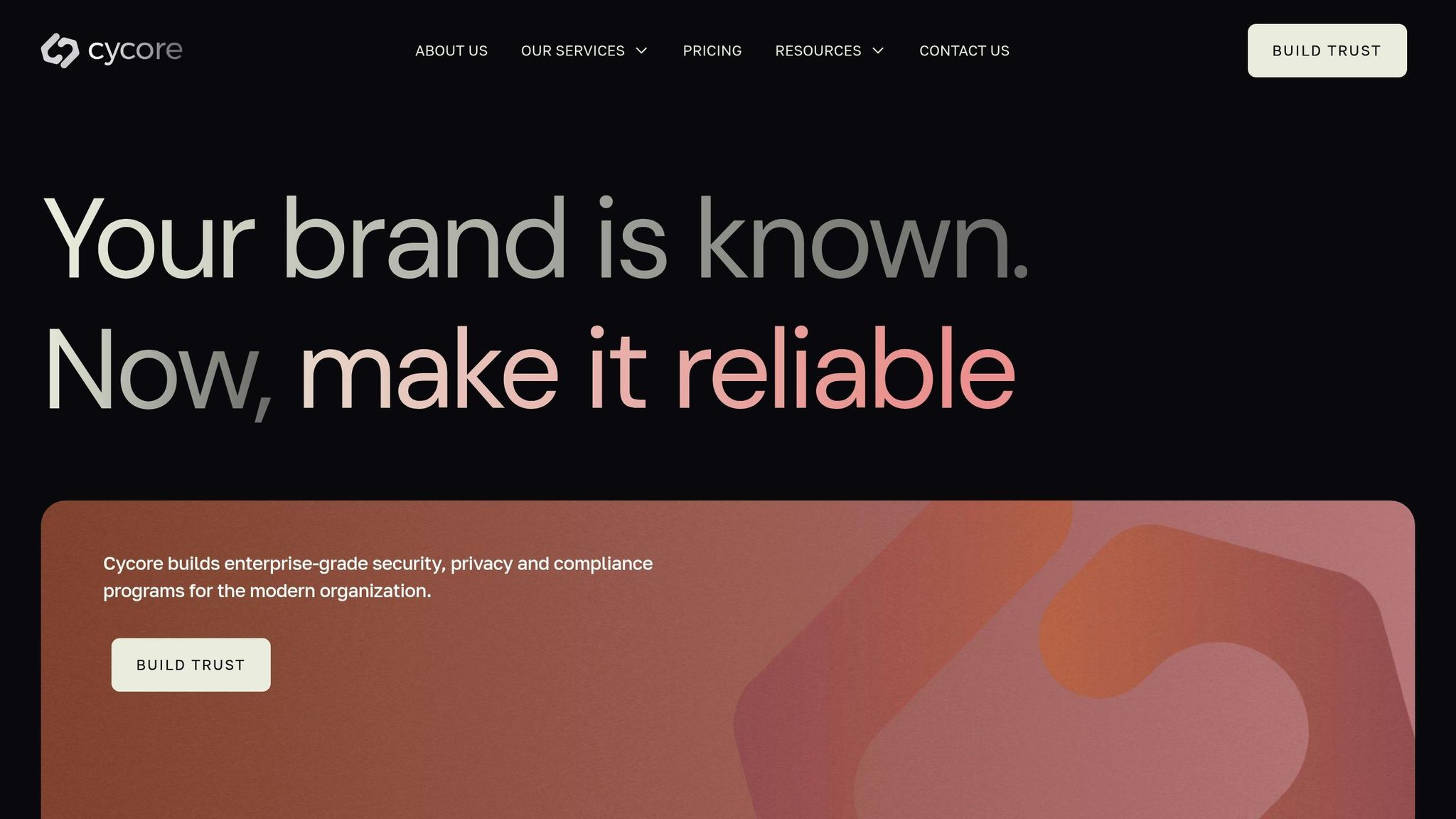
Cycore offers tailored solutions to build robust security, privacy, and compliance programs for SaaS companies. Their services are designed to integrate seamlessly into your existing compliance efforts, helping you transition from manual processes to automated systems that meet enterprise-grade standards. Whether it’s SOC 2, HIPAA, ISO 27001, or GDPR, Cycore supports you from the initial assessment all the way to certification.
Cycore goes beyond basic compliance with specialized offerings like virtual CISO (vCISO) services, which provide expert security leadership without the cost of a full-time hire. They also offer virtual Data Protection Officer (vDPO) services to address GDPR and CCPA requirements. If you’re already using platforms like Drata, Vanta, Secureframe, or Thoropass, Cycore’s GRC Tool Administration services can handle setup, configuration, and ongoing maintenance.
Their services are divided into three tiers to fit businesses at different stages:
- Start-up Tier: Focuses on implementing one compliance framework, GRC software setup, and initial assessments.
- Mid-Market Tier: Supports multiple frameworks, offers annual penetration testing, audit support, and advanced security training.
- Enterprise Tier: Includes full vCISO and vDPO services, quarterly penetration testing, and custom security roadmaps.
"With Cycore, there's no need for my team and I to worry about security and privacy. Cycore keeps us up to date on our compliance program and notifies us ahead of time if they need something from us", shares Nils Schneider, CEO & Co-Founder of Instantly.
Pricing is flexible, with monthly retainers ranging from $4,000 to $10,000, depending on your needs and growth stage.
How Cycore Supports Scalable SaaS Growth
Cycore’s approach doesn’t just ensure compliance - it also helps SaaS companies grow faster. While compliance can sometimes feel like a hurdle, Cycore transforms it into an advantage. Their solutions address security concerns early in the sales process, which can shorten sales cycles and help close enterprise deals more efficiently.
Take security questionnaires, for example. These are often a bottleneck for SaaS companies. Phoebe Miller, Head of Business Operations at ReadMe, explains:
"Security questionnaires were a hassle for our team to turn over quickly in our sales cycles. Cycore has managed to make this process more efficient".
This efficiency is made possible by Cycore’s continuous monitoring and proactive support. Their team takes care of day-to-day compliance tasks and sends timely notifications when action is required. This hands-on approach allows SaaS businesses to focus on scaling while staying ahead of evolving regulatory demands. As your customer base expands, Cycore grows with you, ensuring compliance remains an asset - not a roadblock - in your journey.
Best Practices for Integrating Compliance into SaaS Operations
Once you've implemented and audited your compliance strategies, the next step is to weave them into the daily operations of your SaaS business. Compliance isn't just a task to check off - it's an ongoing process that should become a core part of how your organization operates. When properly integrated, compliance can act as a growth driver rather than a roadblock.
Build a Culture of Security and Privacy
Creating a culture that prioritizes security and privacy starts with making sure every employee understands their role in protecting data. It's not just the responsibility of IT or security teams - sales, development, and support staff also handle sensitive customer information and must be equally invested.
Education is the cornerstone of this shift. Offer regular, practical training sessions on topics like phishing, secure data handling, and compliance responsibilities. But training alone won't suffice. You need to embed security awareness into daily workflows and decision-making processes. For instance, automated tools can provide real-time feedback when a developer mistakenly commits sensitive data to a repository, guiding them on proper handling.
The 2016 Uber data breach, caused by exposed AWS credentials, serves as a stark reminder of the importance of continuous vigilance. To prevent similar incidents, implement systems that flag issues in real time, ensuring they are addressed promptly.
Encourage all employees - not just those in IT - to treat data protection as a shared responsibility. This includes clear privacy guidelines for staff, clients, and stakeholders. By fostering this security-first mindset, you create a strong foundation for embedding compliance into every aspect of your operations.
Build Compliance into Product Development
Incorporating compliance into your development lifecycle - often referred to as "shift-left compliance" - helps you avoid costly retrofits. Start by integrating compliance checks into your CI/CD pipeline. This ensures that every code commit is automatically scanned for security vulnerabilities, data handling violations, and configuration issues. Addressing these problems early saves time, money, and headaches.
Take it a step further by using Policy as Code to enforce compliance standards consistently, reducing the risk of human error.
Additionally, make compliance a priority in vendor selection. Use standardized security questionnaires and require vendors to provide proof of certifications. Encourage your product team to proactively consider how new features - like adding a data collection field or integrating with healthcare systems - might trigger regulatory requirements such as GDPR or HIPAA.
Use Continuous Compliance Monitoring
Maintaining compliance requires more than periodic audits or manual reviews. Continuous monitoring provides real-time insights into your compliance status, allowing you to catch and resolve issues as they arise. This approach is not only proactive but also cost-effective, as the expense of non-compliance is estimated to be 2.71 times higher than the cost of compliance.
Automate compliance checks to identify configuration drift, unauthorized access, and policy violations. Real-time alerts ensure your team can address problems before they escalate, while detailed reports create audit trails that demonstrate your adherence to regulatory standards.
Your monitoring strategy should cover a range of compliance areas. For example:
| Compliance Type | Key Frameworks |
|---|---|
| Financial Compliance | PCI DSS, ASC 606, SOX |
| Security Compliance | SOC 2, ISO/IEC 27001, CIS, NIST CSF |
| Data Privacy Compliance | GDPR, HIPAA, CCPA |
As your business grows and evolves, revisit your monitoring strategy regularly. New products, markets, or partnerships can introduce additional compliance requirements. By implementing continuous monitoring, your team can focus on innovation while staying confident that compliance standards are consistently met, reducing risks and supporting growth.
Conclusion: Building a Compliance-First SaaS Business
In the world of SaaS, cybersecurity compliance isn't just about checking boxes - it’s a way to build trust and set your business apart. When approached strategically, compliance can shift from being a challenge to becoming a key driver for growth and market expansion.
Success starts with understanding your specific compliance requirements and adopting a structured, step-by-step approach. While technical implementation lays the groundwork, the real game-changer is operational integration. By weaving compliance into your daily processes, you create a framework that not only meets current demands but also grows with your business.
For many SaaS companies, managing compliance in-house can stretch resources thin - especially as the business scales. That’s where Cycore comes in. Our services, including Virtual CISO leadership, Virtual DPO expertise, and hands-on GRC tool administration, offer a streamlined way to handle compliance. These solutions take the pressure off your team while ensuring your compliance efforts are efficient and automated.
Whether you’re a start-up or an enterprise, Cycore’s scalable services are designed to adapt to your changing compliance needs, helping you stay ahead in an ever-evolving landscape.
FAQs
How can SaaS companies figure out which cybersecurity compliance frameworks they need to follow?
To choose the right cybersecurity compliance frameworks, SaaS companies should first evaluate their industry, the kind of data they handle, and the regions they serve. For example, if your platform deals with healthcare data, you may need to comply with HIPAA. If your customer base includes European users, GDPR regulations could apply. Meanwhile, SOC 2 is often a key requirement to showcase robust security measures for U.S.-based clients.
It's also important to factor in your customers' expectations and any contractual obligations. Many businesses may specifically ask for compliance with standards like ISO 27001 or CCPA. By aligning your approach with these legal, operational, and customer-driven requirements, you not only meet compliance standards but also strengthen trust and protect sensitive data effectively.
What risks could a SaaS company face if it doesn’t comply with cybersecurity regulations?
Failing to meet cybersecurity regulations can leave a SaaS company open to major risks and setbacks. These can range from substantial fines and legal troubles to operational disruptions that throw business processes off track. Even more concerning, non-compliance can lead to data breaches, putting sensitive customer information at risk and making the company an easier target for cyberattacks.
The fallout doesn’t stop there. Non-compliance can take a serious toll on a company’s reputation. Losing customer trust can make it challenging to keep existing clients and attract new ones. For SaaS businesses, where trust and safeguarding data are critical, staying compliant isn’t just a checkbox - it’s a cornerstone for long-term growth and reliability.
How can SaaS companies use automation tools to simplify cybersecurity compliance, and what key features should they look for?
Automation tools play a crucial role in helping SaaS companies tackle cybersecurity compliance with greater ease. They cut down on manual tasks, provide ongoing monitoring, and simplify reporting processes. The result? Saved time, improved accuracy, and up-to-the-minute insights into compliance status.
Here are some standout features to consider:
- Automated risk assessments: Quickly pinpoint potential vulnerabilities.
- Real-time compliance monitoring: Keep track of adherence to frameworks like SOC 2, GDPR, and HIPAA as it happens.
- Policy management: Simplify the creation, updating, and enforcement of security policies.
- Audit readiness: Make compliance audits smoother and more efficient.
- Integration capabilities: Seamlessly connect with your existing security systems.
With these tools in place, SaaS companies can manage compliance more efficiently, reduce the risk of penalties, and bolster their overall security framework.


